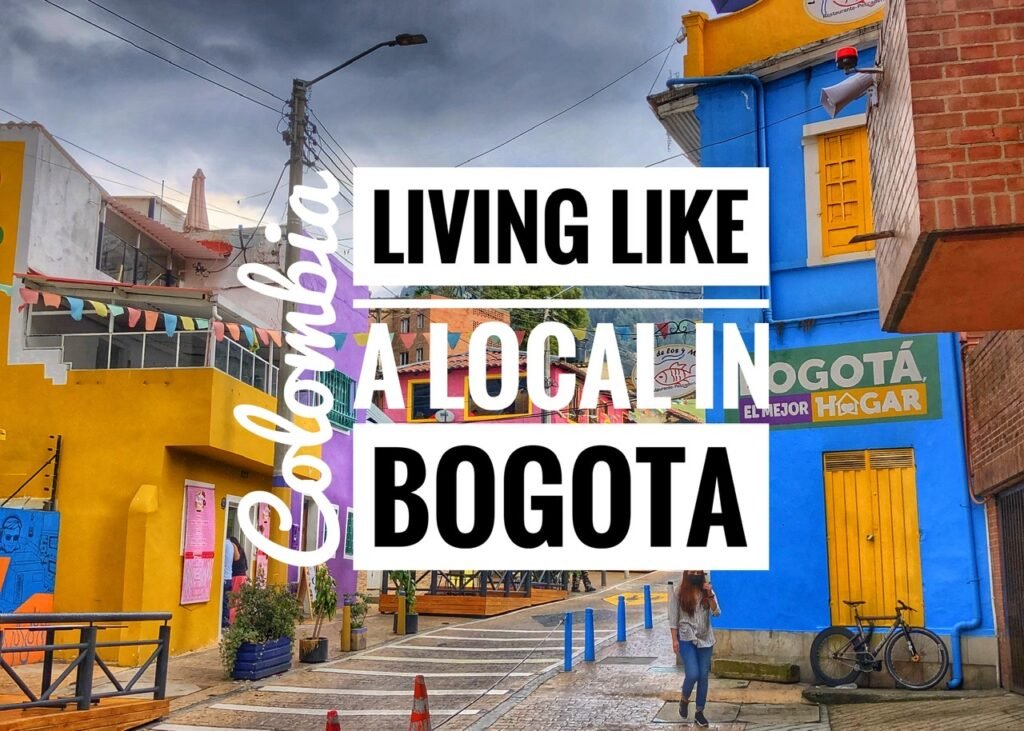
To be honest, we had kinda written off Bogota after our visit in 2014. It was kind of a two-days-and-done sorta of place…check out Plaza Bolivar, sweat your way to the top of Monserrate (10,000 foot/3100 meter city viewpoint), and have an amble through El Museo de Oro. (Museum of Gold). We learned quickly that the plethora of small towns and natural areas of Colombia were the things you write home about in the country, not the cities.
Thus, we certainly hadn’t planned on spending a month in Bogota this time around. However, after our volunteer teaching opportunity didn’t work out, we felt the need to hunker down in one place, so it was a natural fit. And to be honest, we liked it. It was a good place for Mandy to take some intensive Spanish classes, catch up on some work (amazing internet), do some shopping, visit the dentist, and stay long enough to build some friendships. Also, we certainly discovered parts of the city we didn’t see before which made us appreciate it a little bit more. So, to start, a little bit about life in Bogota…
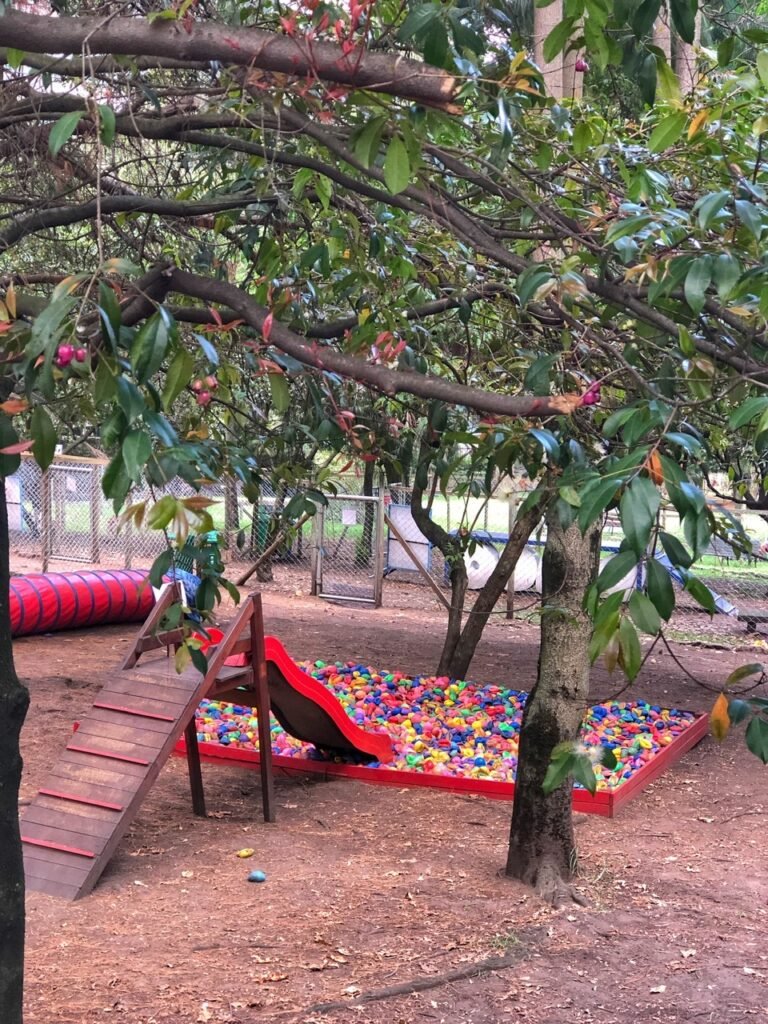
One thing that Bogota seems to do pretty well, unlike other cities in Colombia, is city parks. You might look at this and think, “Wow! My kid would have so much fun in that ball pit!” But nope, that ball pit is not for your kid. It’s for your canine. One of the coolest dog parks we’ve ever seen. Needless to say, the Bogotanos love their pets, and we couldn’t tell you how many pet stores and pet parlors we saw. Not to mention, there were virtually no stray animals…anywhere.
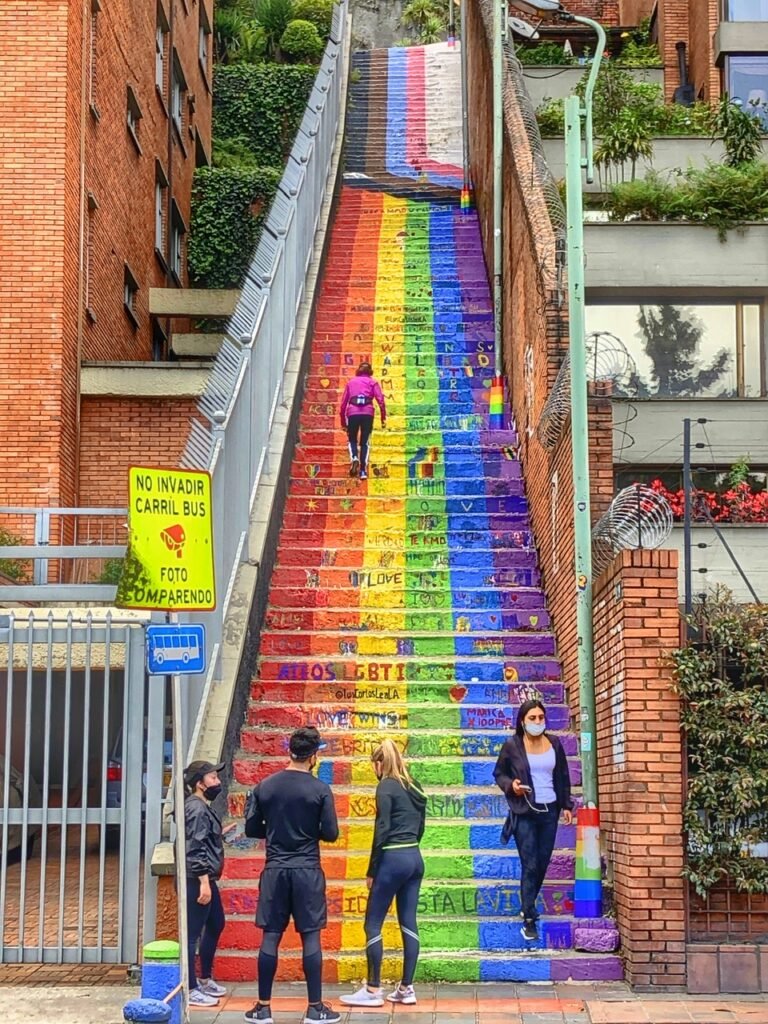
Based on their staircases, it seems that Bogota is also a very open-minded and welcoming city.
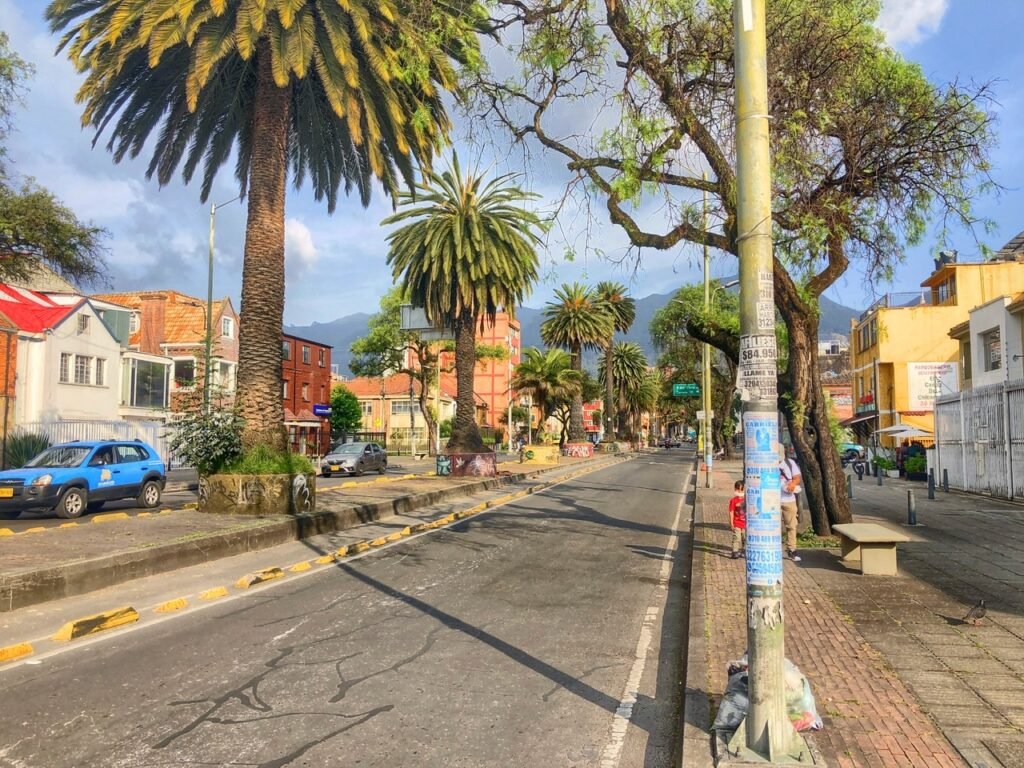
One of the wide boulevards near our apartment. Bogota is a great city for walking. The sidewalks are wide, crosswalks efficient and few(er) than normal ankle breaking holes in your walking path than in most places in Latin America.
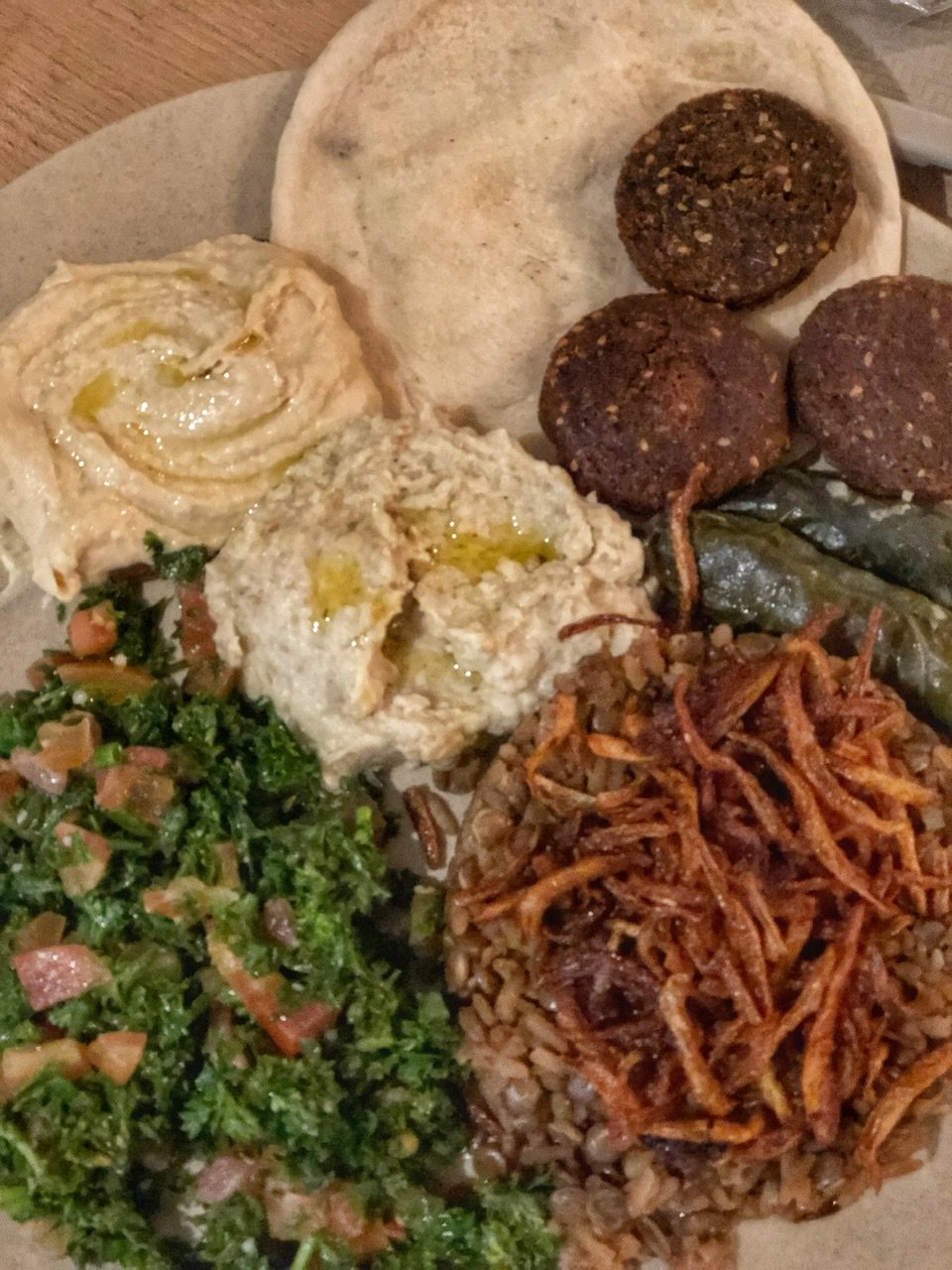
One of our first meals was a giant Lebanese platter at an indoor fancy eatery with loads of international food options called the “Real Mordisco.” We were so excited to be in a city with international food options and have to admit, gorged on Lebanese three times while here!! Wow, how we missed it. It sure beats the cardio-event-on-a-plate traditional Colombian Bandeja Paisa platter.

The Real Mordisco also had a Trolley Bar. We really wanted to pull into the station for a drink, but were a little stuffed from the previous photo.
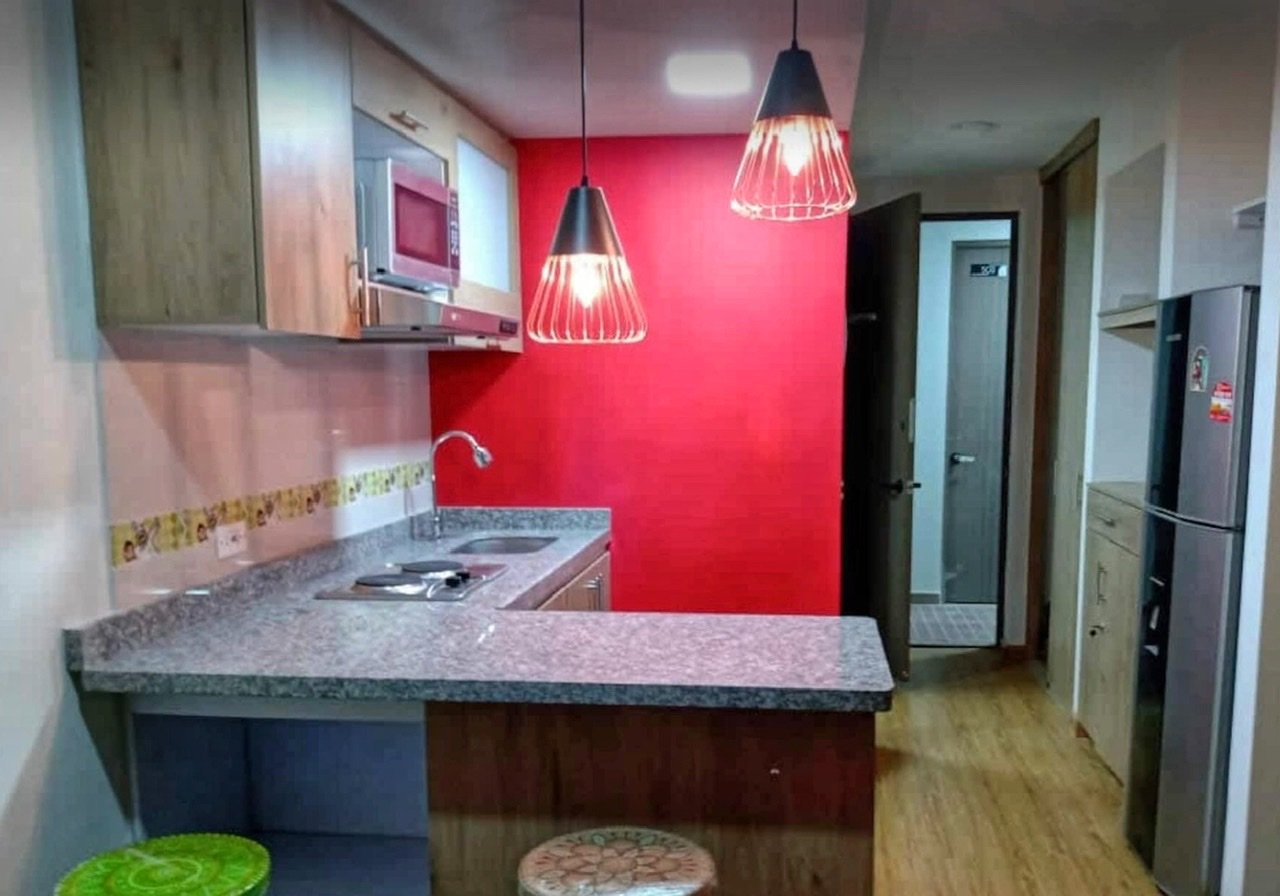
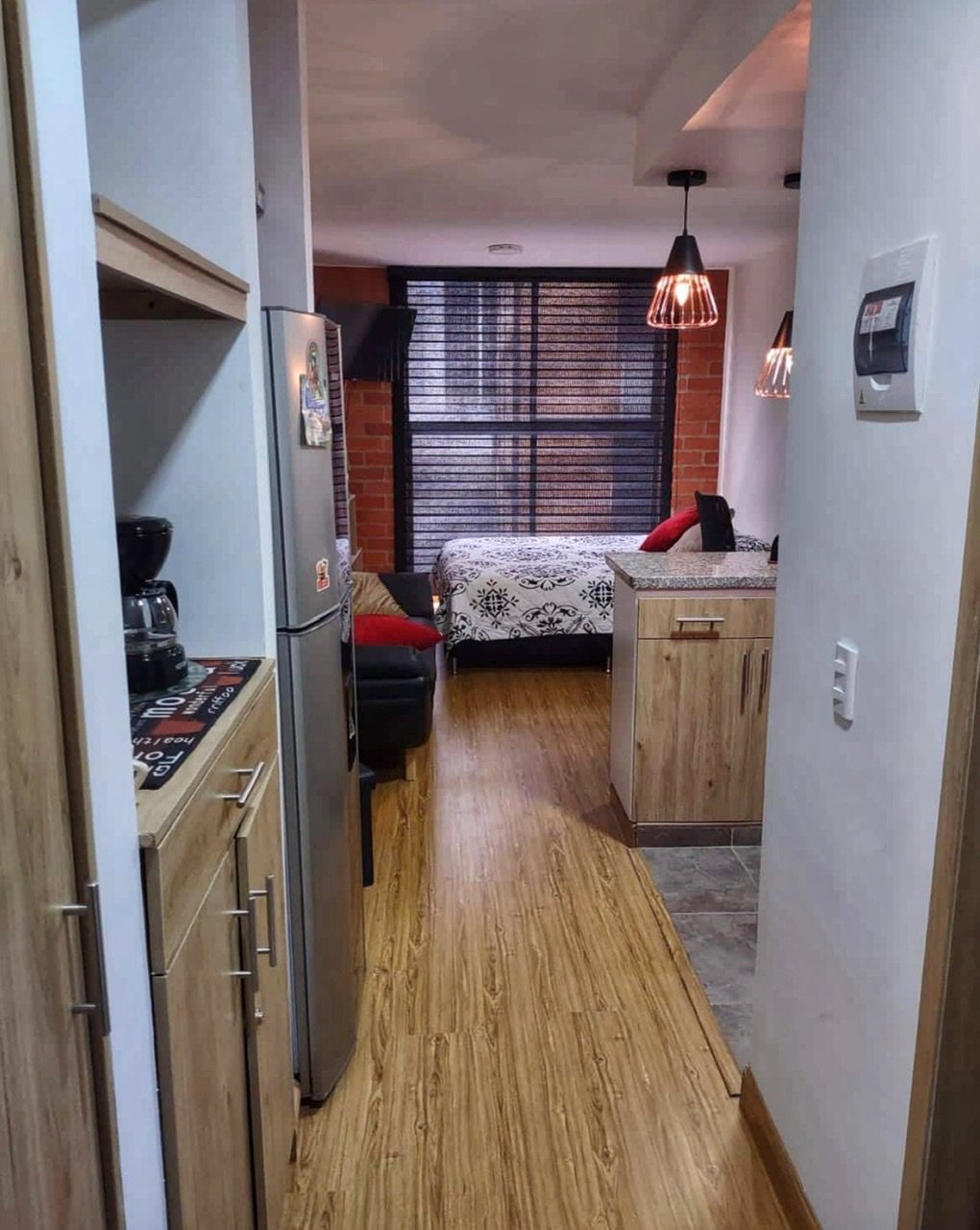
After the first night at a real hotel, we moved into a fifth floor studio apartment in the Chapinero neighborhood where we ended up staying for a month. Other than the usual dull knives and a very yippy schnauzer who never seemed to get scolded a few doors down, it was a great place to stay. We paid $487 for the month on Airbnb.

Looks like we fell into medieval Europe while in Bogota. These gates belonged to “San Vincente”, which we saw on our hour and 20 minute walk to Usaquen.


Spending a Sunday at the Mercado de Las Pulgas….or, the Usaquen Flea Market, which is a bustling weekly gathering of outdoor vendors selling arts, crafts and gifts. Capturing the heart of Colombia through crafts. Loved it.

A very talented street artist.
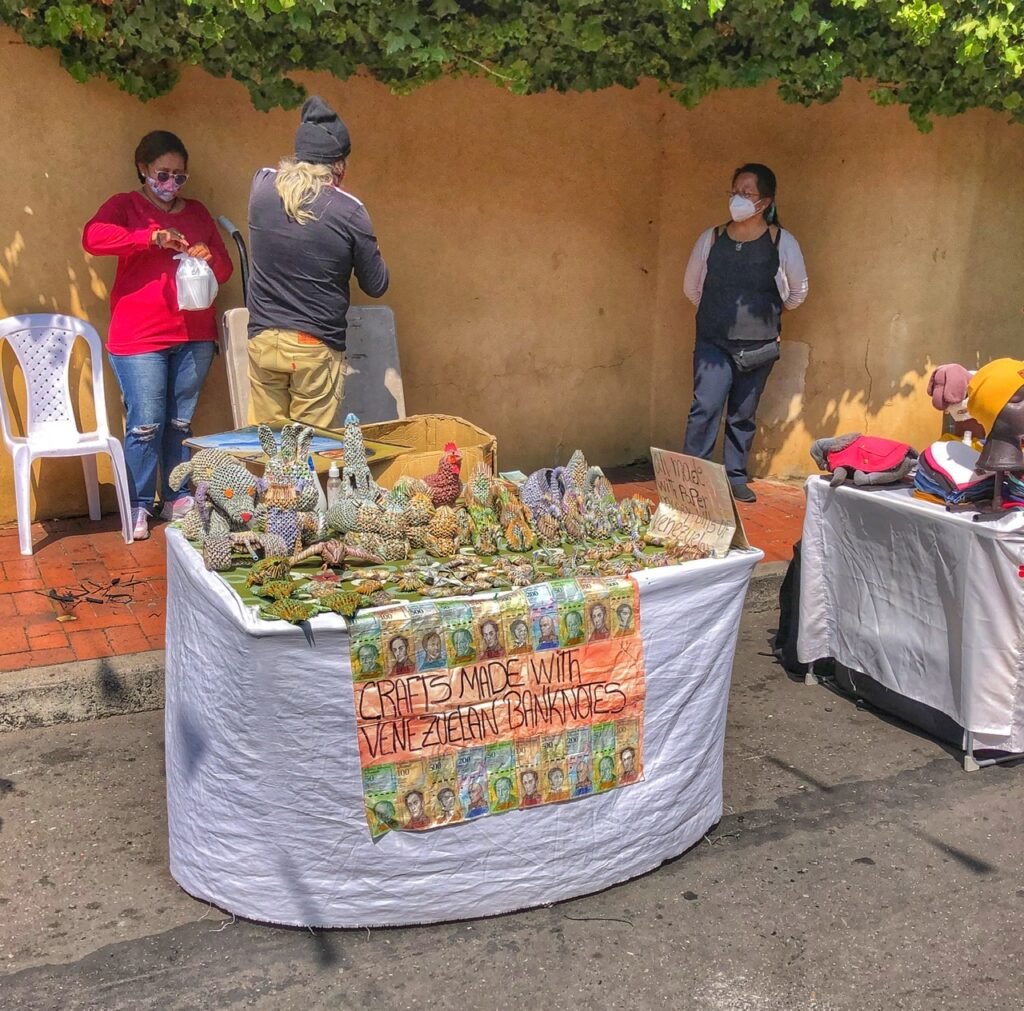
Since Venezuelan bank notes are sadly worth next to nothing now, this is what they’re doing with them…turning them into craft animals, and selling them for Colombian pesos.

What did one gold-dusted statuesque street performer say to the other?

A street scene in the Usaquen neighborhood.

But our favorite part of Usaquen neighborhood? Meeting Susan and Jimmy, Americans living in Bogota who have been following our page for awhile and turned into great friends during our time here. We were so happy to meet them.
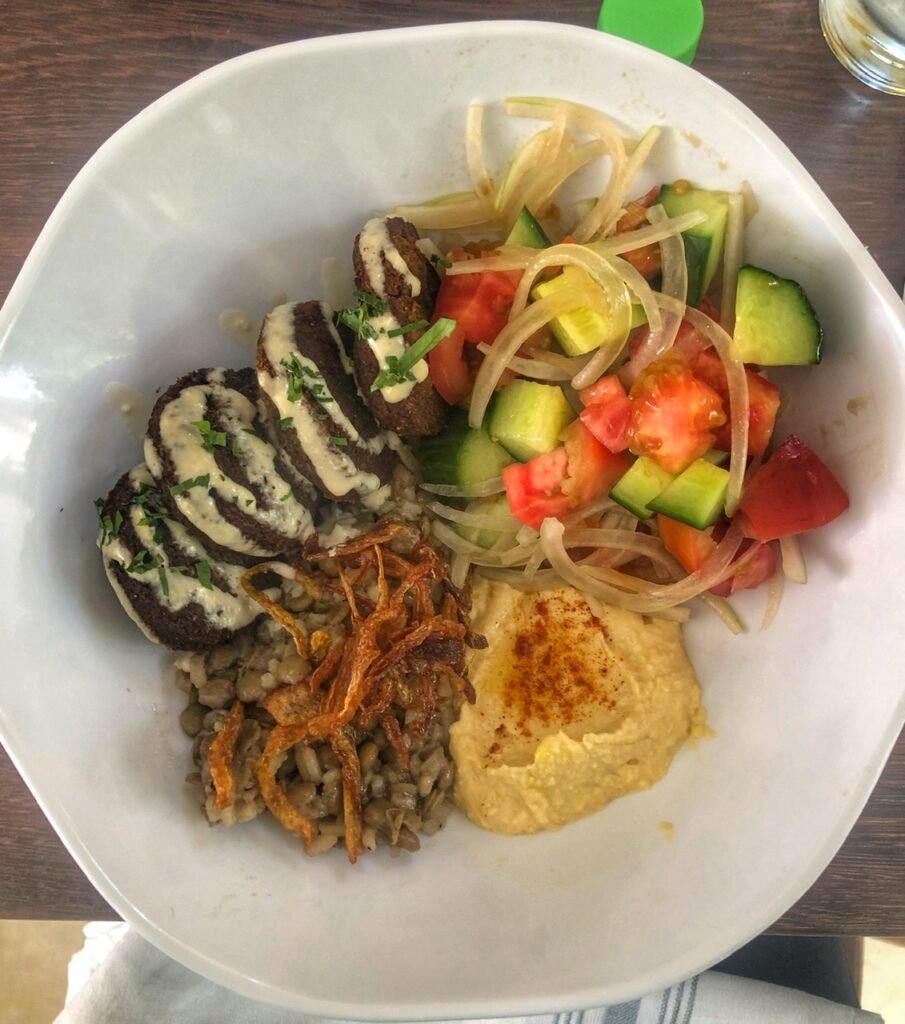
And where else did they take us? Yet another Lebanese restaurant, fittingly called Beirut. Oh yes…we were happy!
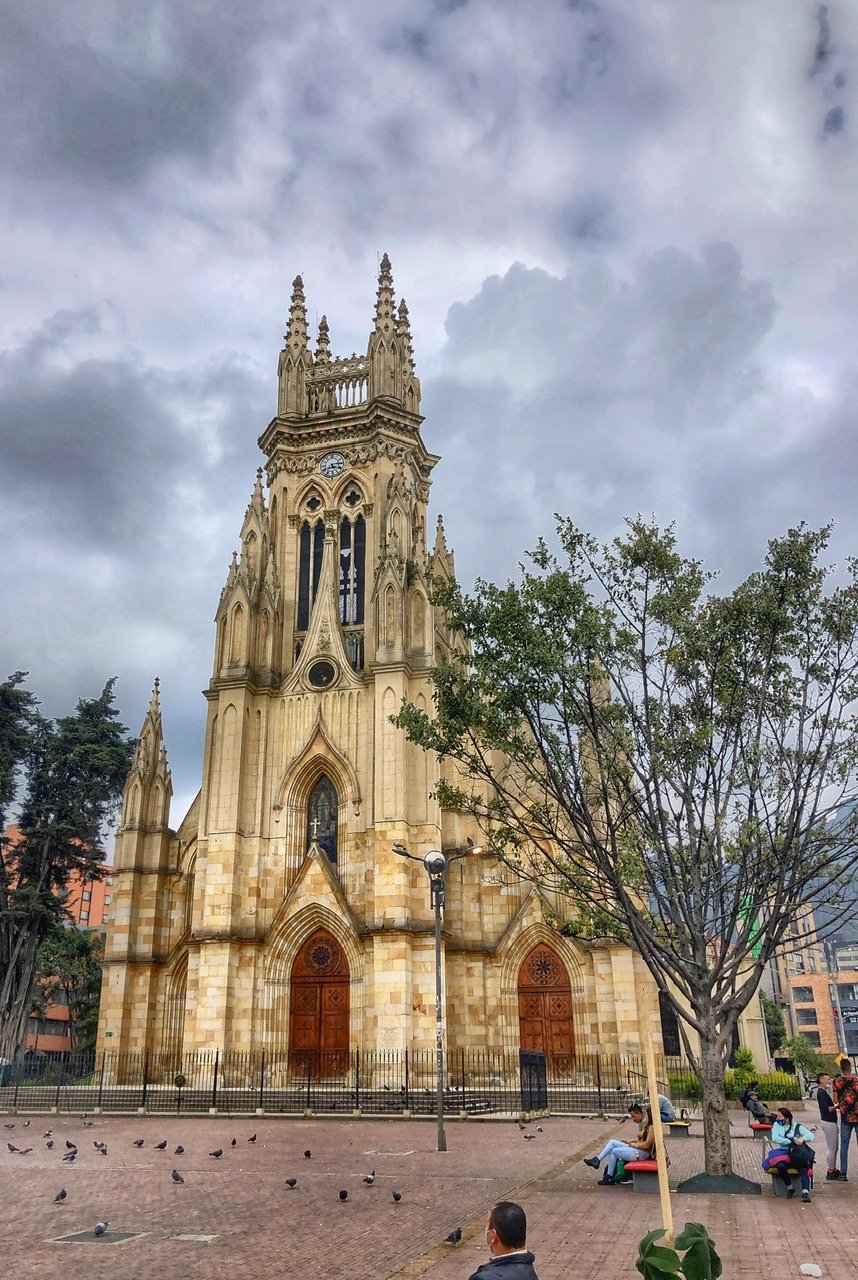
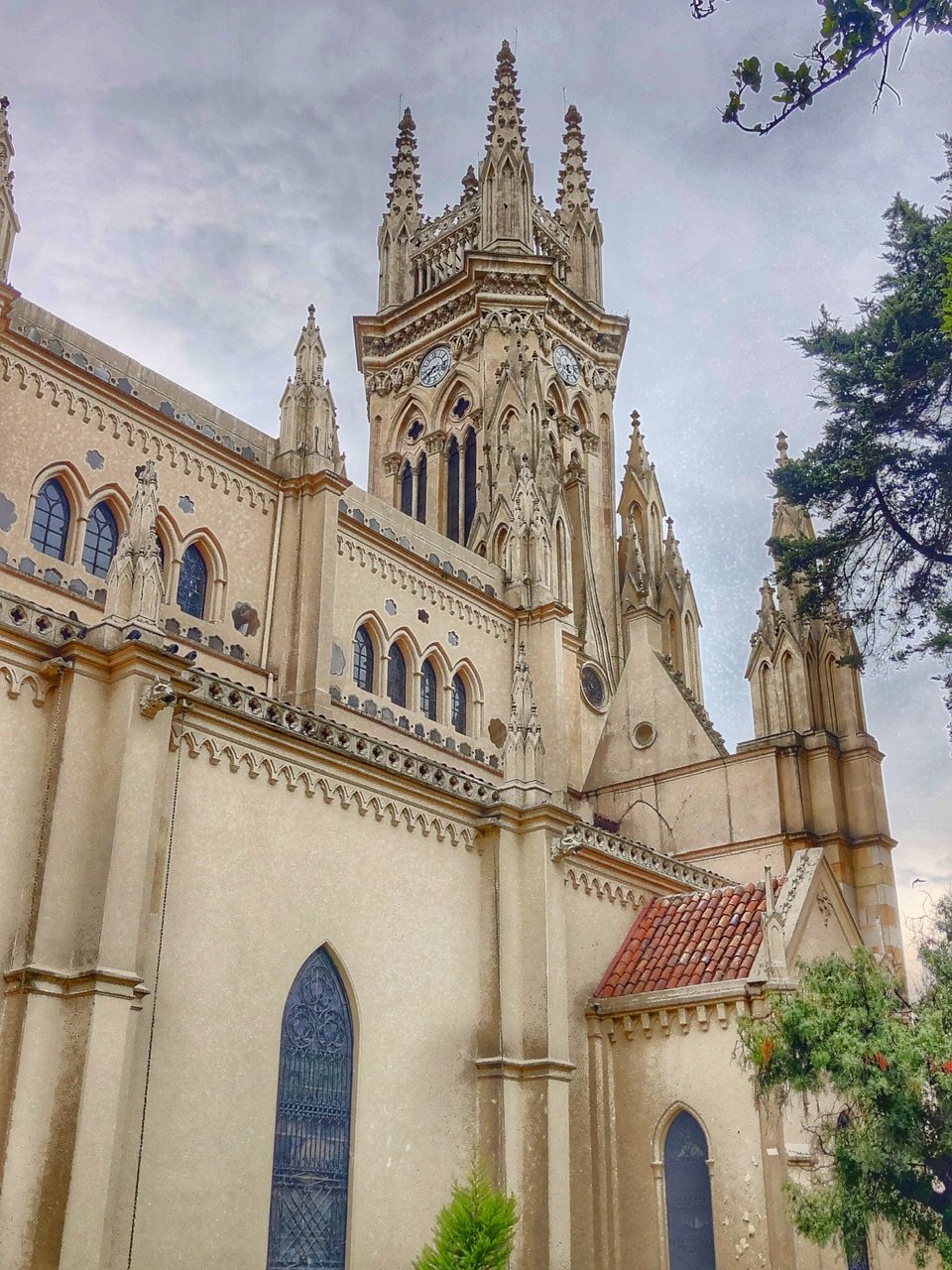
Right around the corner from our apartment, a beautiful gothic cathedral in Parque de Lourdes.
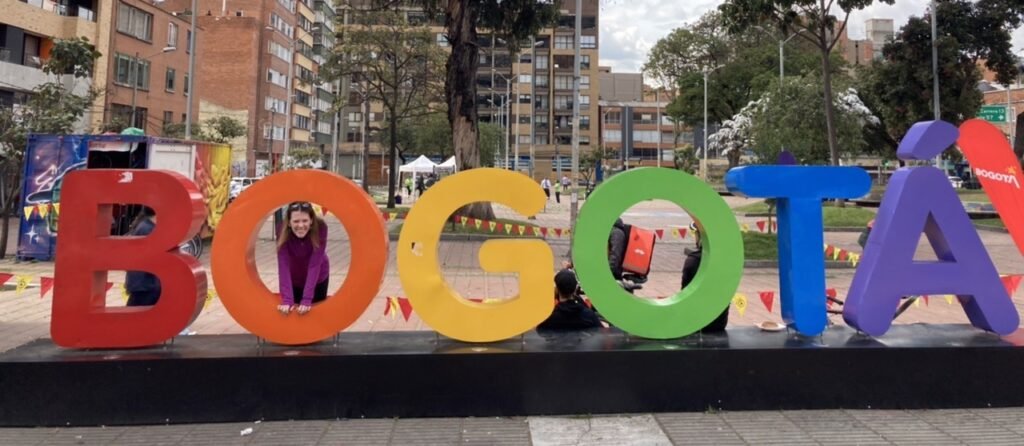
In the Hippie Park, a couple of blocks from us.
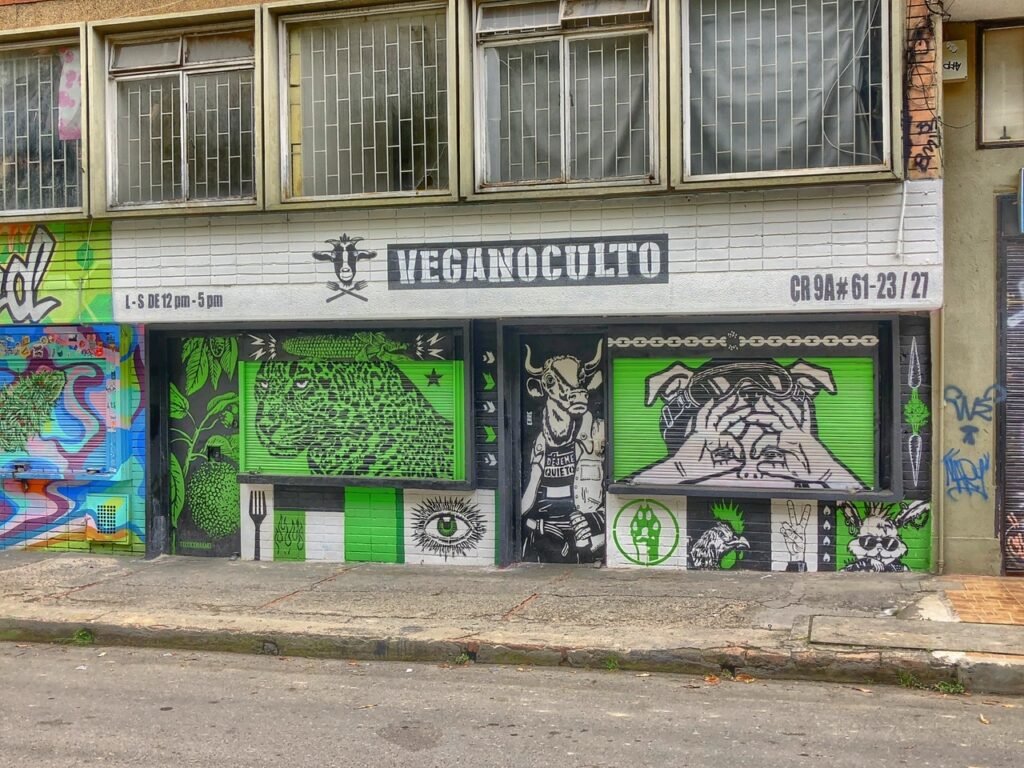
Also, in our neighborhood? We happily found lots of vegan options!
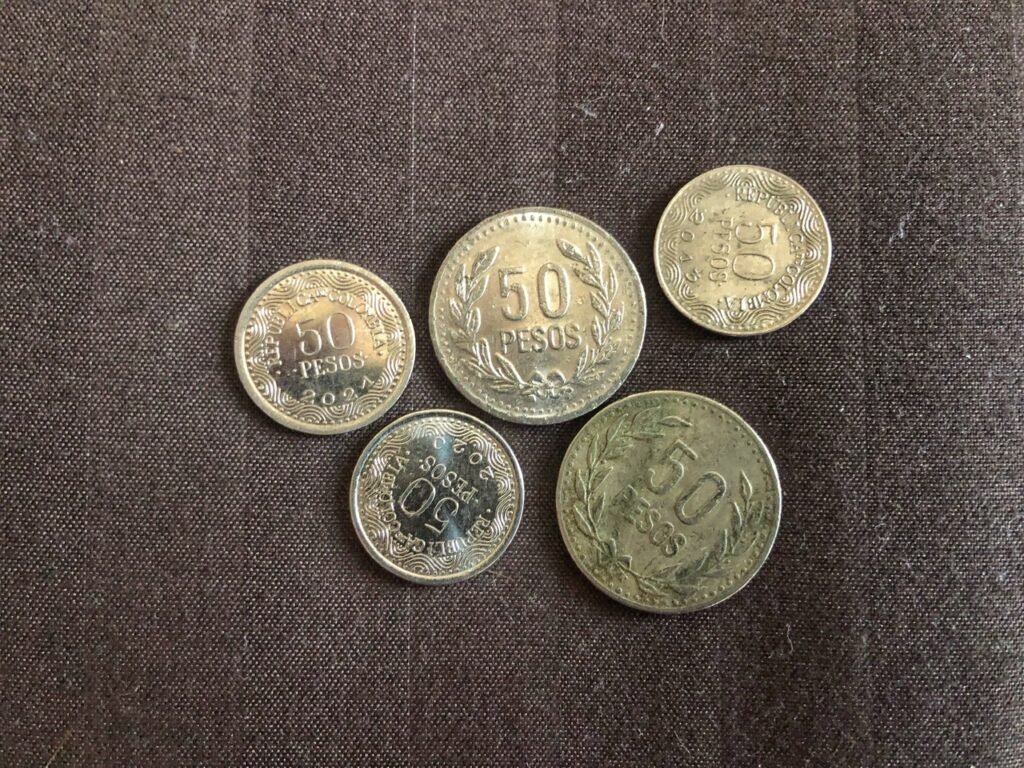
One of the most annoying things about living and traveling in Colombia. COINS! It doesn’t matter how you try and get rid of it at the markets, it keeps coming back to jingle or try and escape from your pockets. It’s not just that you get a lot of it, it’s that none of the sizes are consistent. Pictured are all 50 peso coins (about a US penny). As you can see, they are two different sizes. This is the same for every coin available. It’s unbelievably ridiculous.
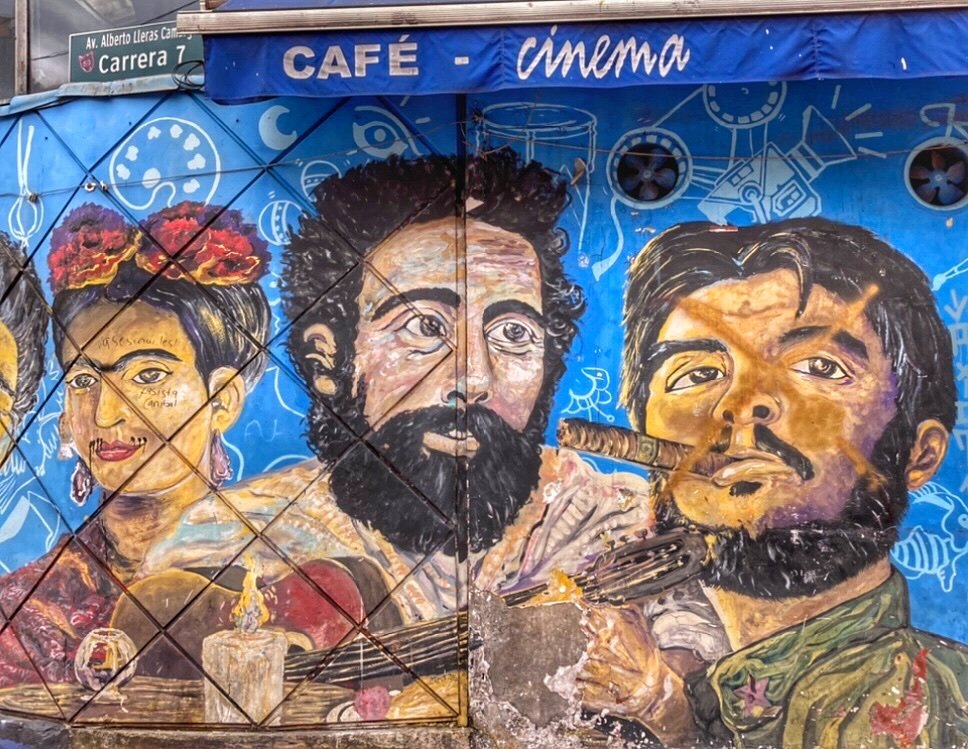
Loved this street art of Latin American greats.
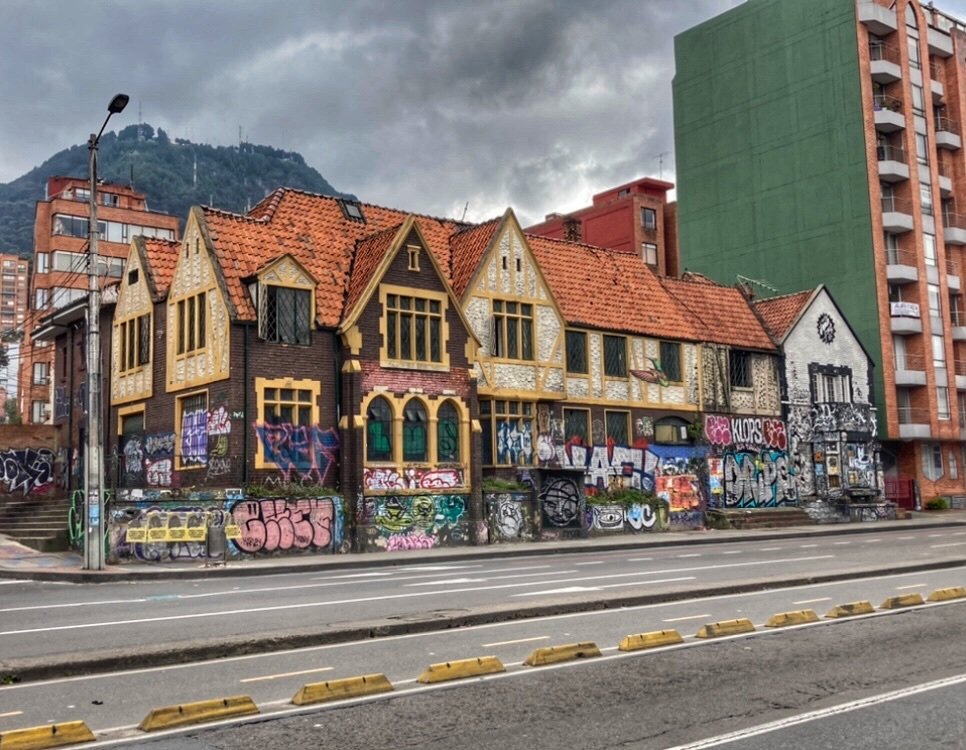

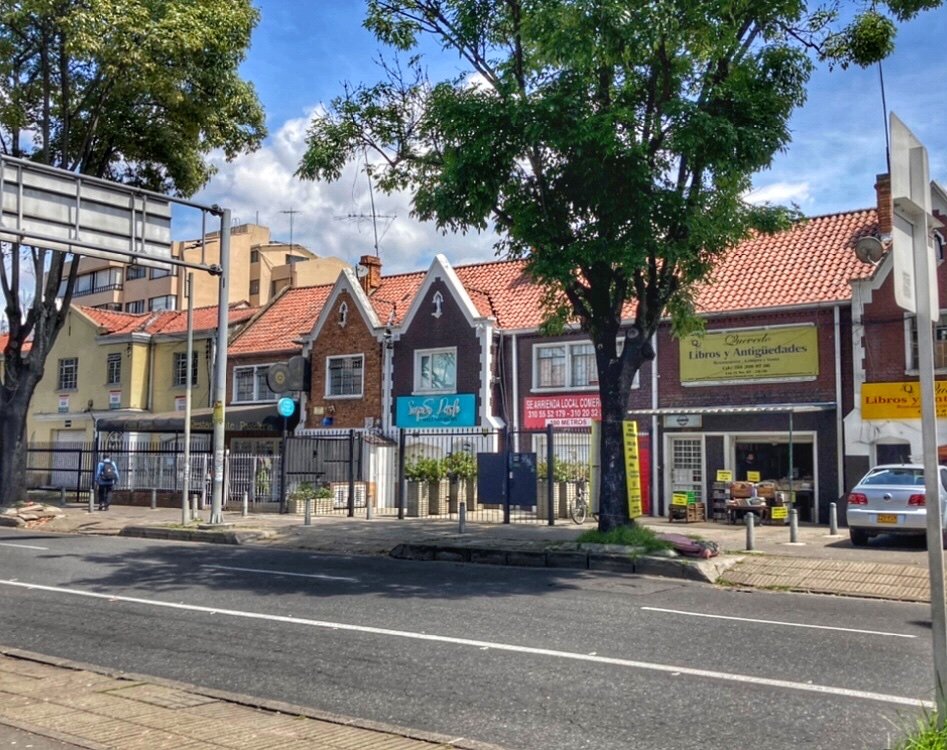
One of the most perplexing things we noticed about Bogota was the abundance of distinctly British-looking architecture. What was it doing here? Unfortunately, there isn’t a lot of information on the internet about this subject and upon asking locals, they don’t really know either. It seems that maybe (?) in the 1940s, Bogota was in search of a new identity that would separate it from its Spanish colonial past so it began adopting French and British architecture. It also seemed fitting for a city that is cool and cloudy. They began using bricks for housing and at the turn of the 20th Century, garden houses with front and back yards, became the fashion and several neighborhoods near Chapinero were built under similar British styles. The brick continues to be used, but now in high-rise buildings and is now exported to many other warmer cities in Colombia as well as neighboring Ecuador and Venezuela. (https://www.skyscrapercity.com)
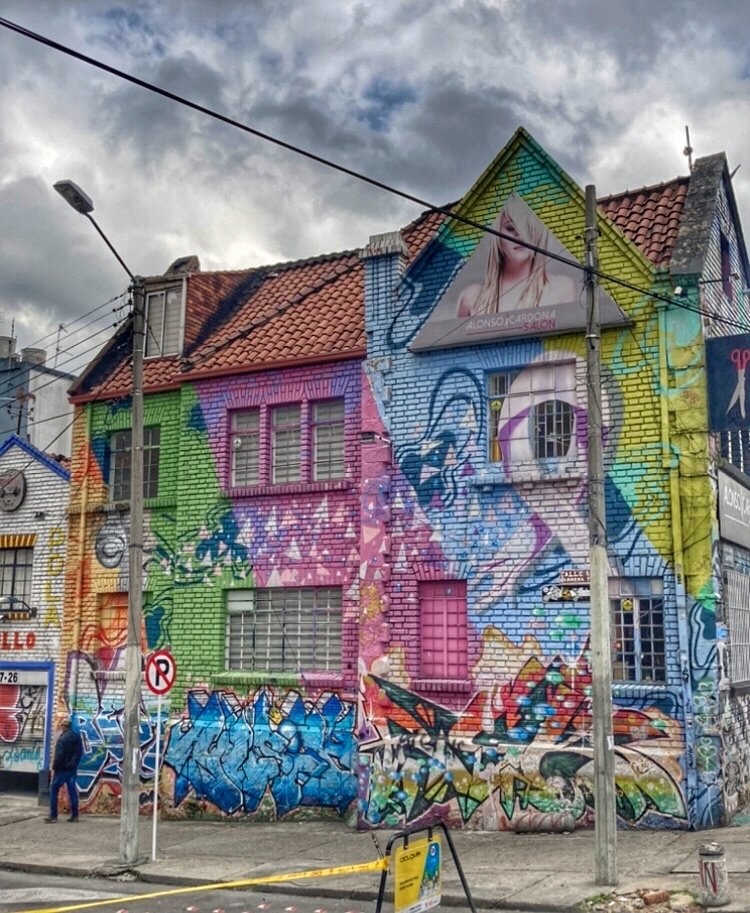
Of course, maybe sometimes that brick is a little too British and must be Colombia-nized.
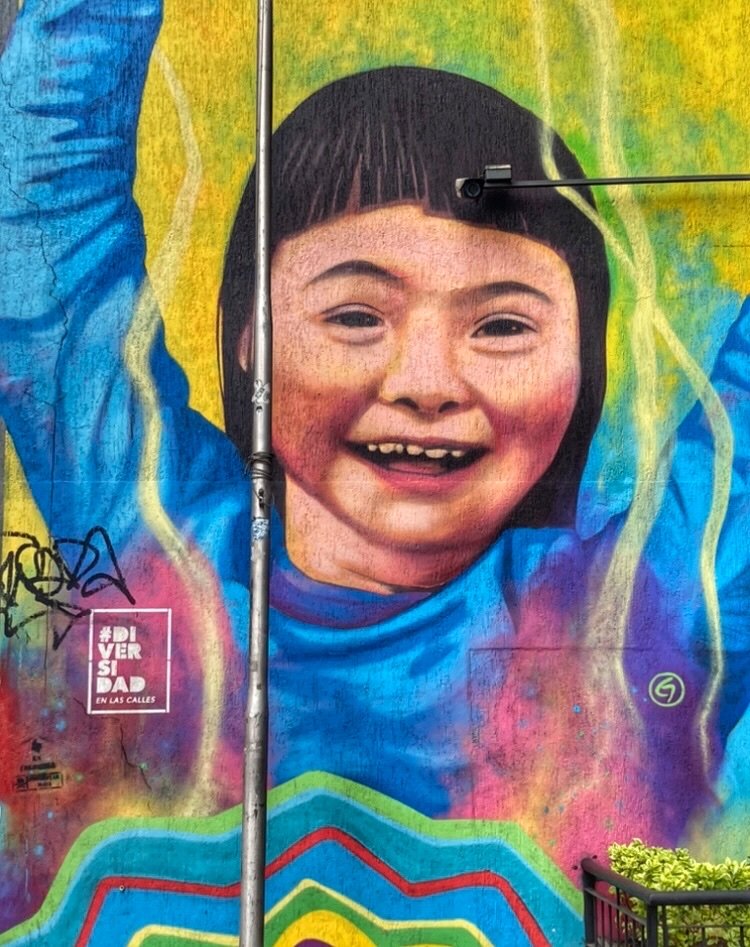
The street art in this city is infinitely captivating.
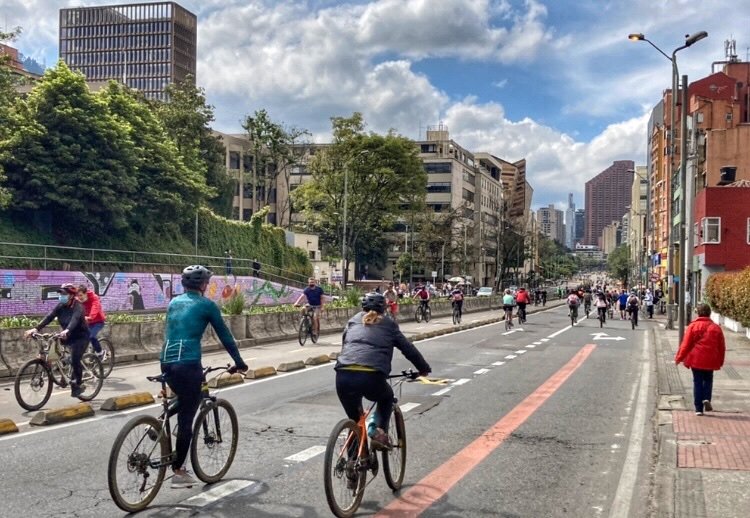
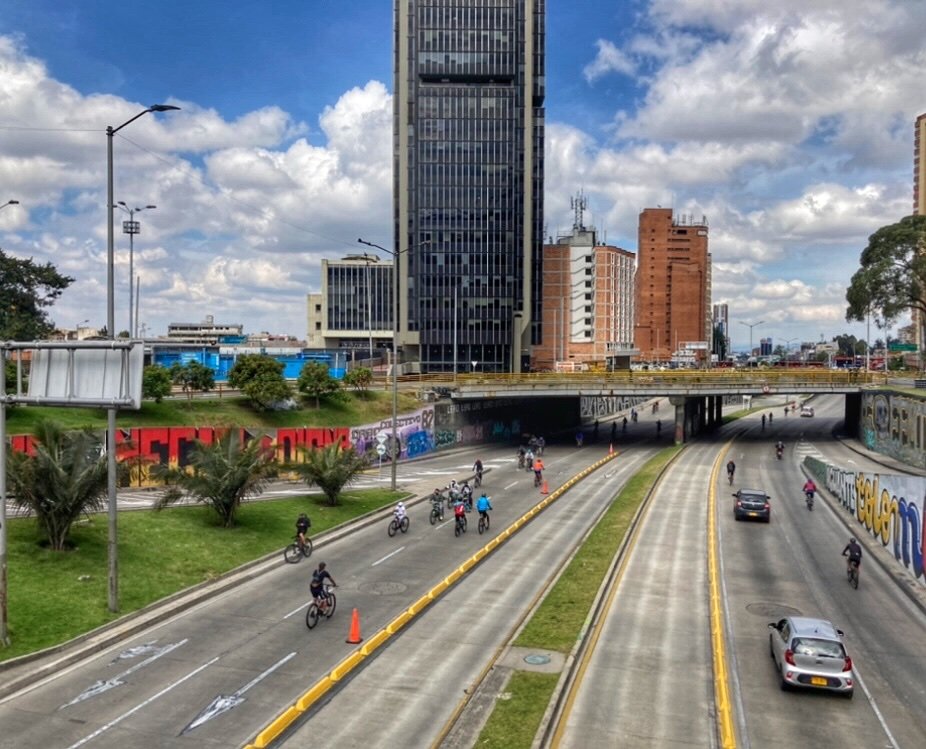
And meet Ciclovia! Despite its thronged and congested traffic, every Sunday from 7 am to 2 pm, 75 miles of Bogota’s main thoroughfares are turned over to around a MILLION cyclists and pedestrians of the city. It’s a wonderfully healthy initiative that has been copied in many progressive cities throughout the world. What an amazing concept!
Even major freeways are closed. This alone, combined with the numerous bike lanes, stores and acceptance of biking since 1976, surprisingly makes Bogota one of the most bike-friendly cities in the world. We looked at renting bikes for the day and were a bit astonished that two bikes would be nearly $30.
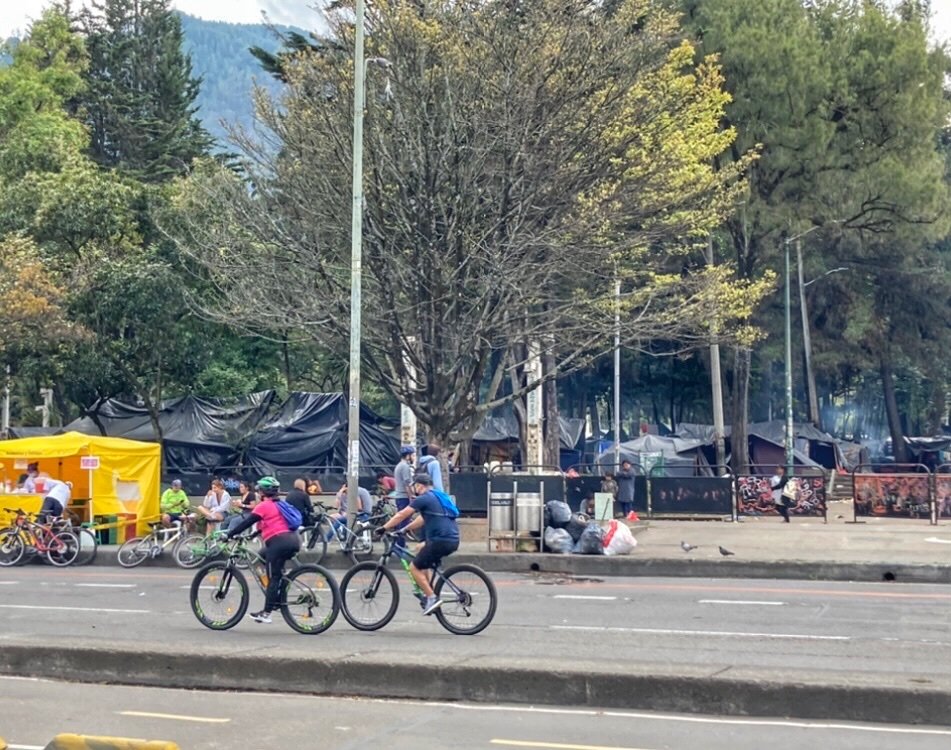
Of course, Bogota is not without its challenges. It has a growing tent city along the cycle route where 1400 people, mostly indigenous Choco Colombians, have been living because they were displaced from their lands. This has been a sad reality in Colombia for quite some time. (https://www.e-ir.info/2021/12/18/indigenous-conflict-victims-and-the-growing-tent-city-in-bogota/)

The beautiful British-looking University of Colombia.
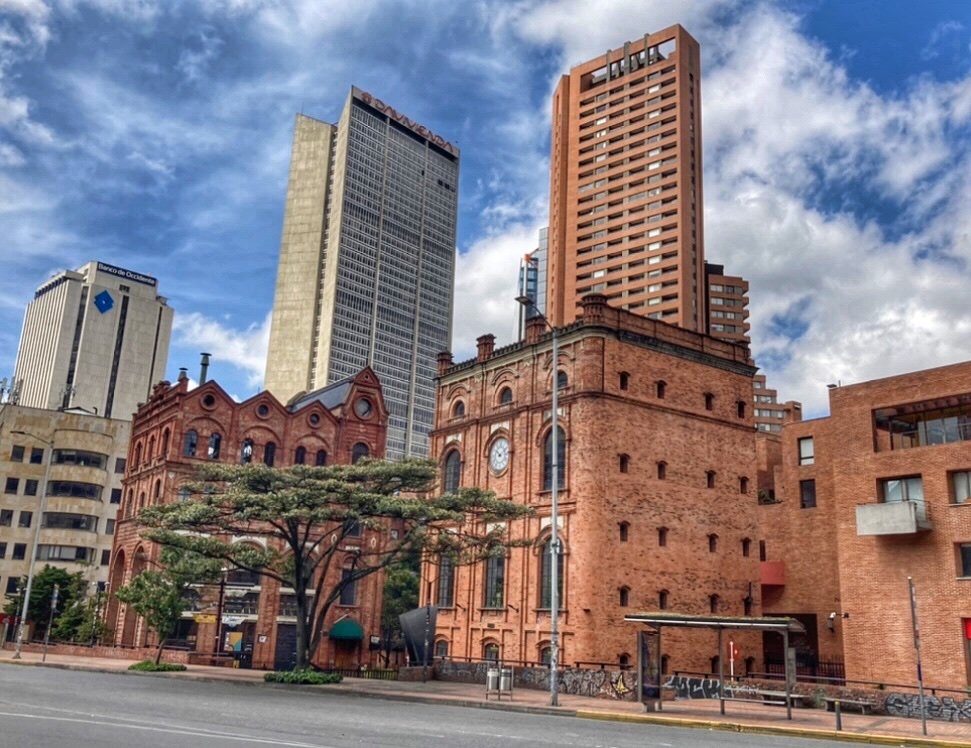
It is quite a city of contrasts.

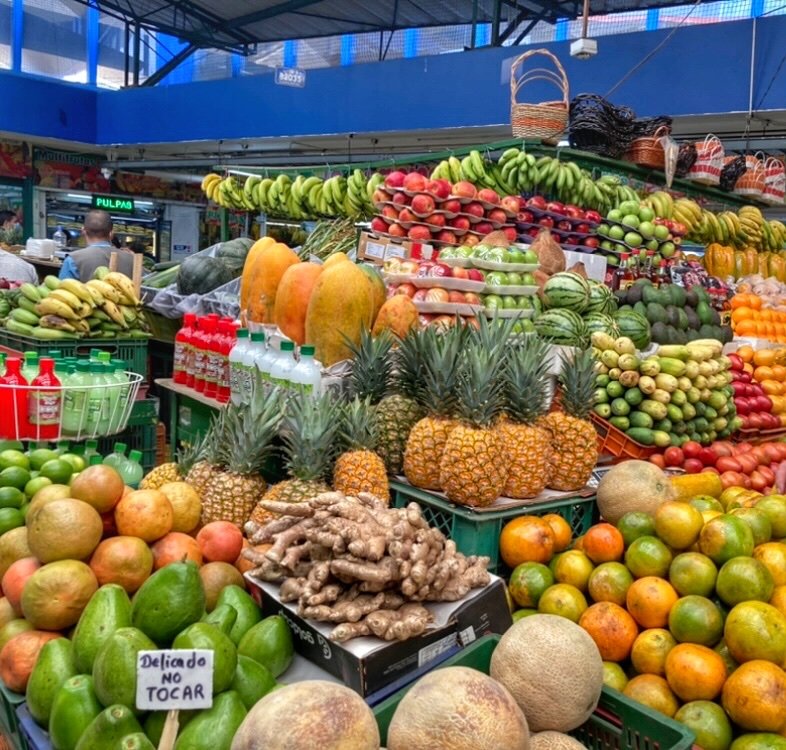

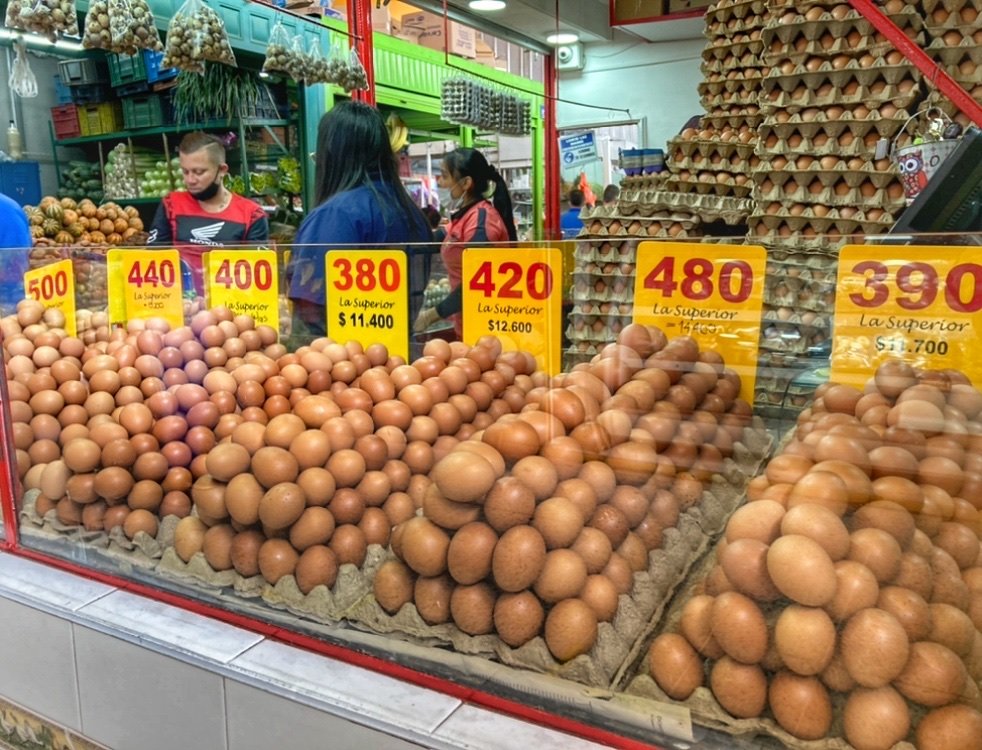
Getting a load of produce at the Paloquemao Fruit Market ($7 for over a week). We had to walk through some areas of the city that were a little more dodgy, but the selection was well worth it.
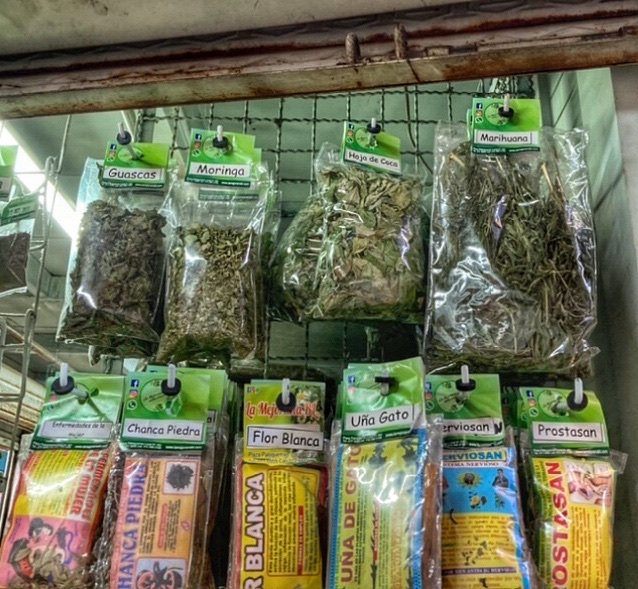
They had a large selection of fresh and dried herbs as well. Yes, even that herb. (Top right).
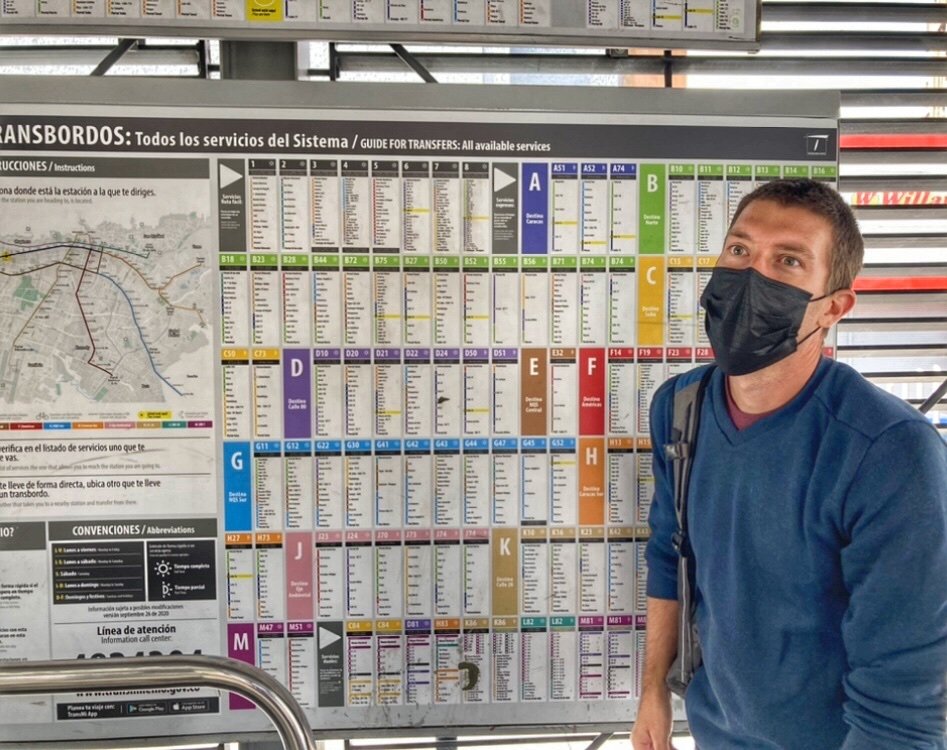
Okay, this is how we feel about the public transportation in Bogota. Unlike the ease of Medellin or Manizales, its TransMilenio megabus system is confusing, overly crowded, and poorly designed. In fact, the locals jokingly call it “Transmilleno (lleno meaning “FULL” in Spanish.) Fortunately the system is linked to Google, which helps significantly.
However, when you leave your phone at home and try to dissect this schedule to where you’re going on the three different wagon options (that sometimes stop and sometimes don’t), you’re sure to sprout a few new gray hairs through your Clairol box hair dye.

We’ll walk, gracias.

Besides, the little walking girls are so cute and encouraging here.

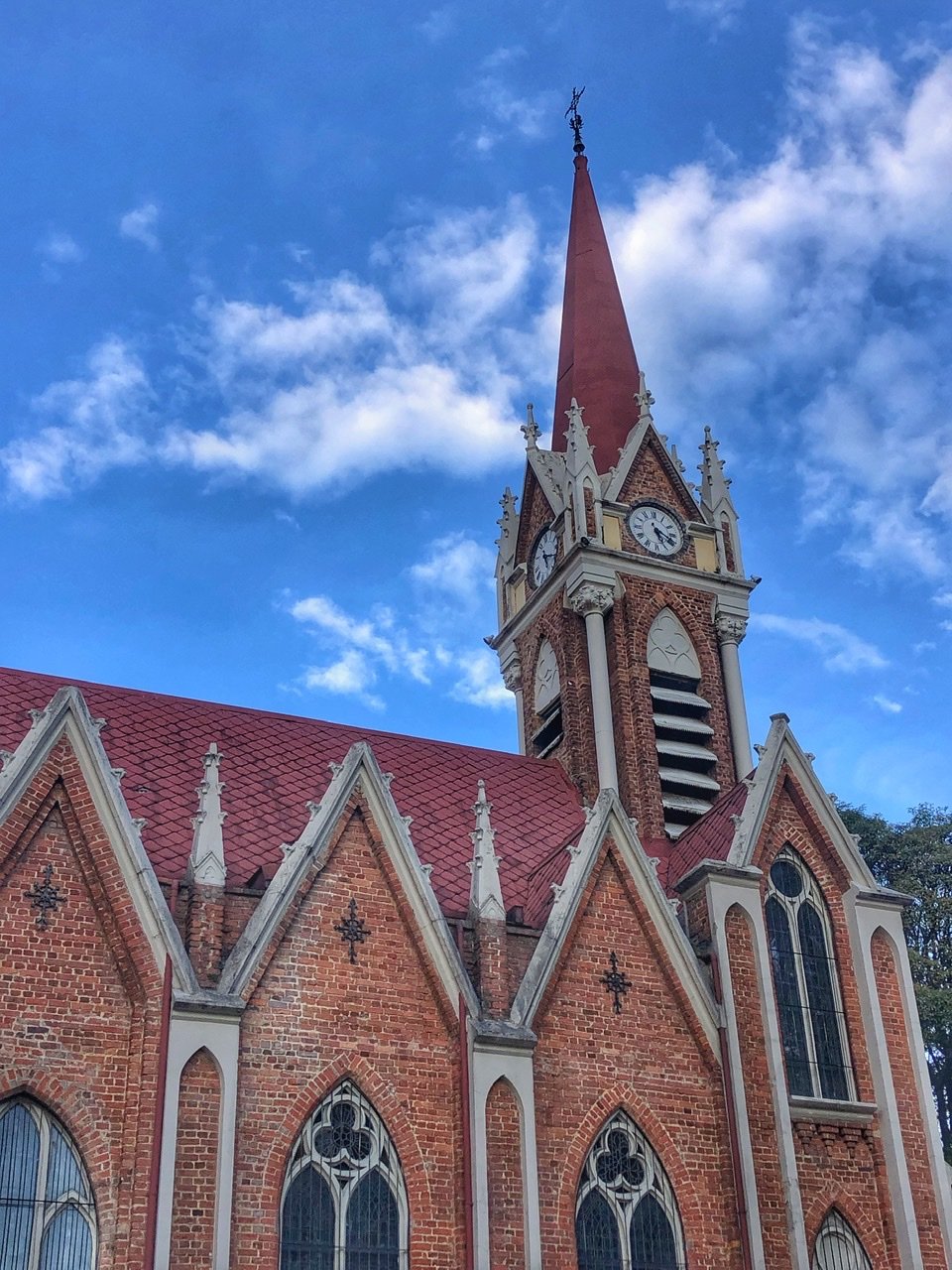
More contrasts. And endlessly cute churches everywhere
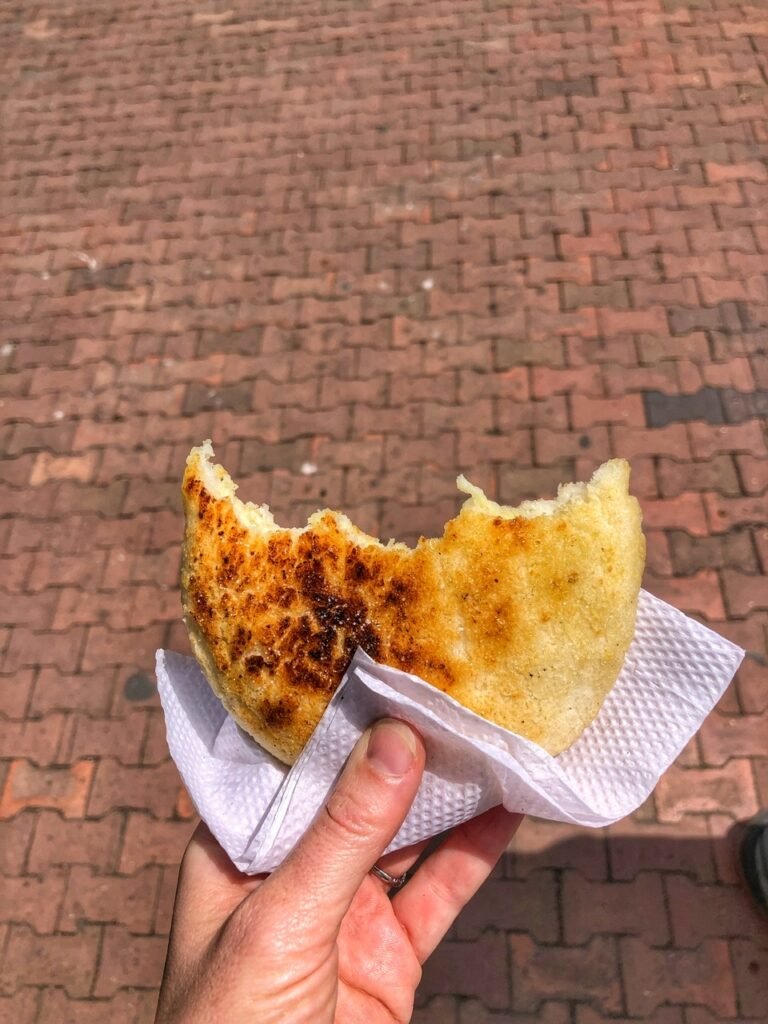
A mandatory street snack in Colombia…a buttery arepa filled with cheese. $.50. Believe it or not, it was the first. And probably the last.
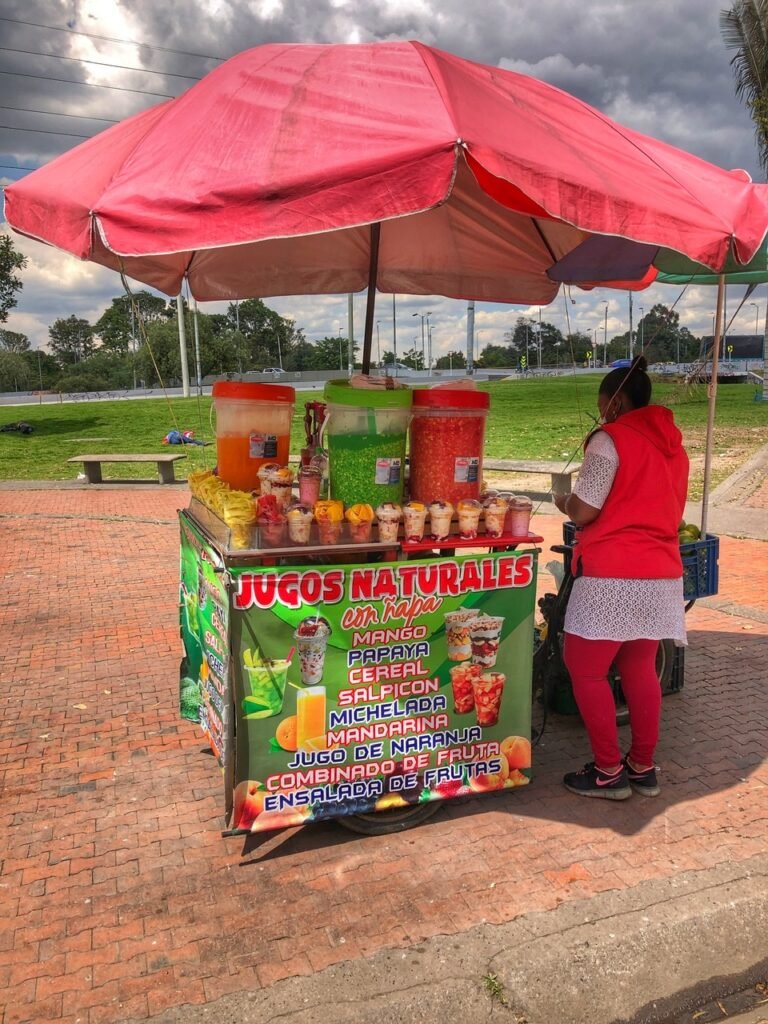
Juice and fruit seller. We had a cup of the best mango we had had in Colombia for about $.75.
La Candeleria: Historic Center

That foreign feeling of stability had begun to set in as we settled into life in Bogota. So, one day we we decided it was time to be true tourists again and we headed down to La Candelaria historic district where you can find dozens of city blocks lined with charming colonial architecture, extraordinary museums, peppermint painted cathedrals, spirited street art, ample opportunities to buy Chicha (a fermented drink made from corn), and streets simply buzzing with commercial activity. Surprisingly, we enjoyed it even more than we did in 2014…(probably because we weren’t completely exhausted from flying all night long the day before!)
Carrera 2 is an enchanting alleyway packed with merrymaking opportunities near Plazoleta Chorro de Quevado, in the heart of La Candelaria. Although it was relatively quiet during the day, its bohemian atmosphere floods with Latin music, jubilee and lots of chicha shooters when the sun goes down. <Sigh.> Sometimes we really wish we still had energy or desire to begin the evening at 11 pm. Haha.
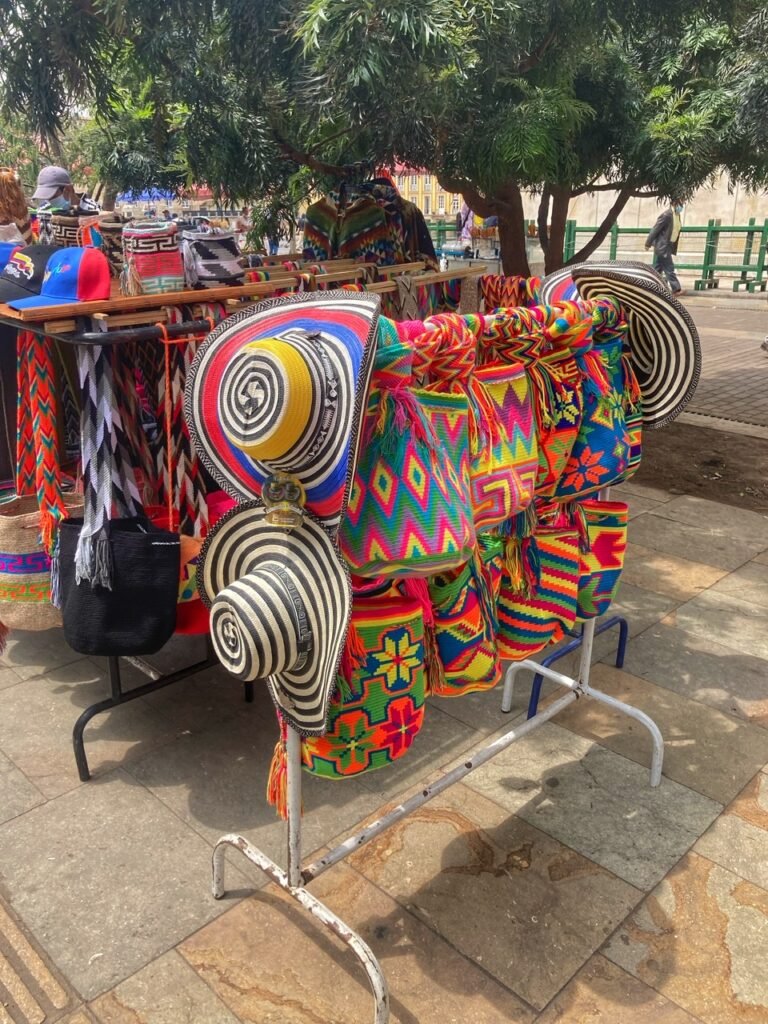
A street seller totes Colombian handbags known as Mochila Wayuu. If you’ve seen Encanto, you may recognize them as Maribel’s favorite accessory.
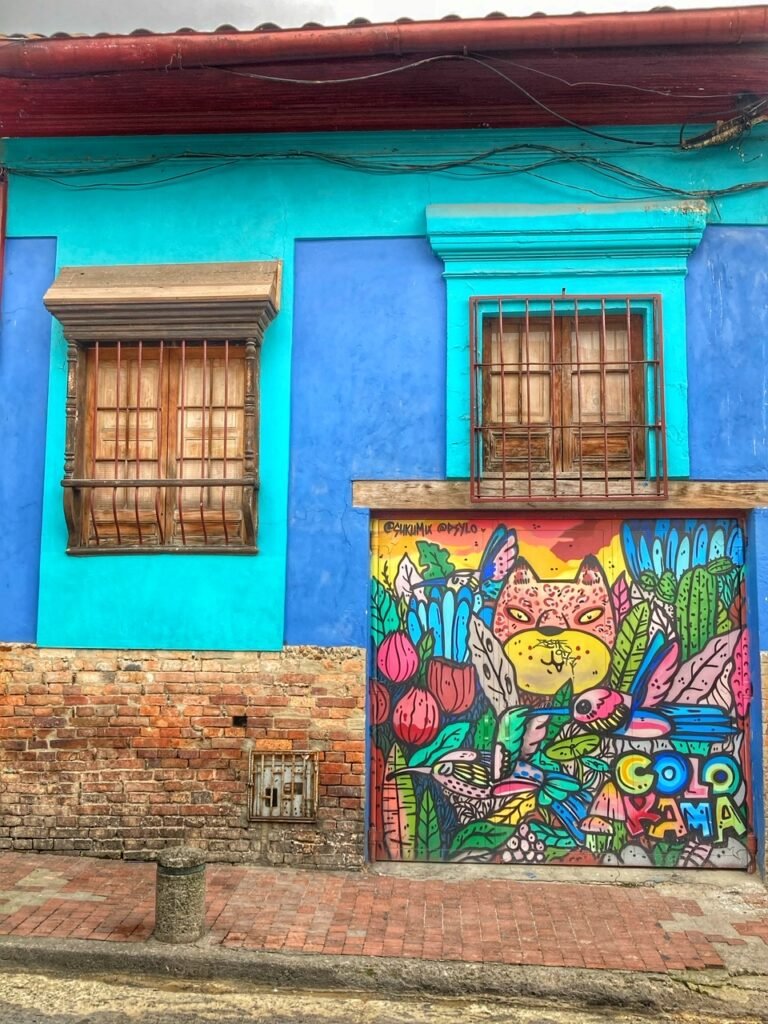
Powerful punches of color!
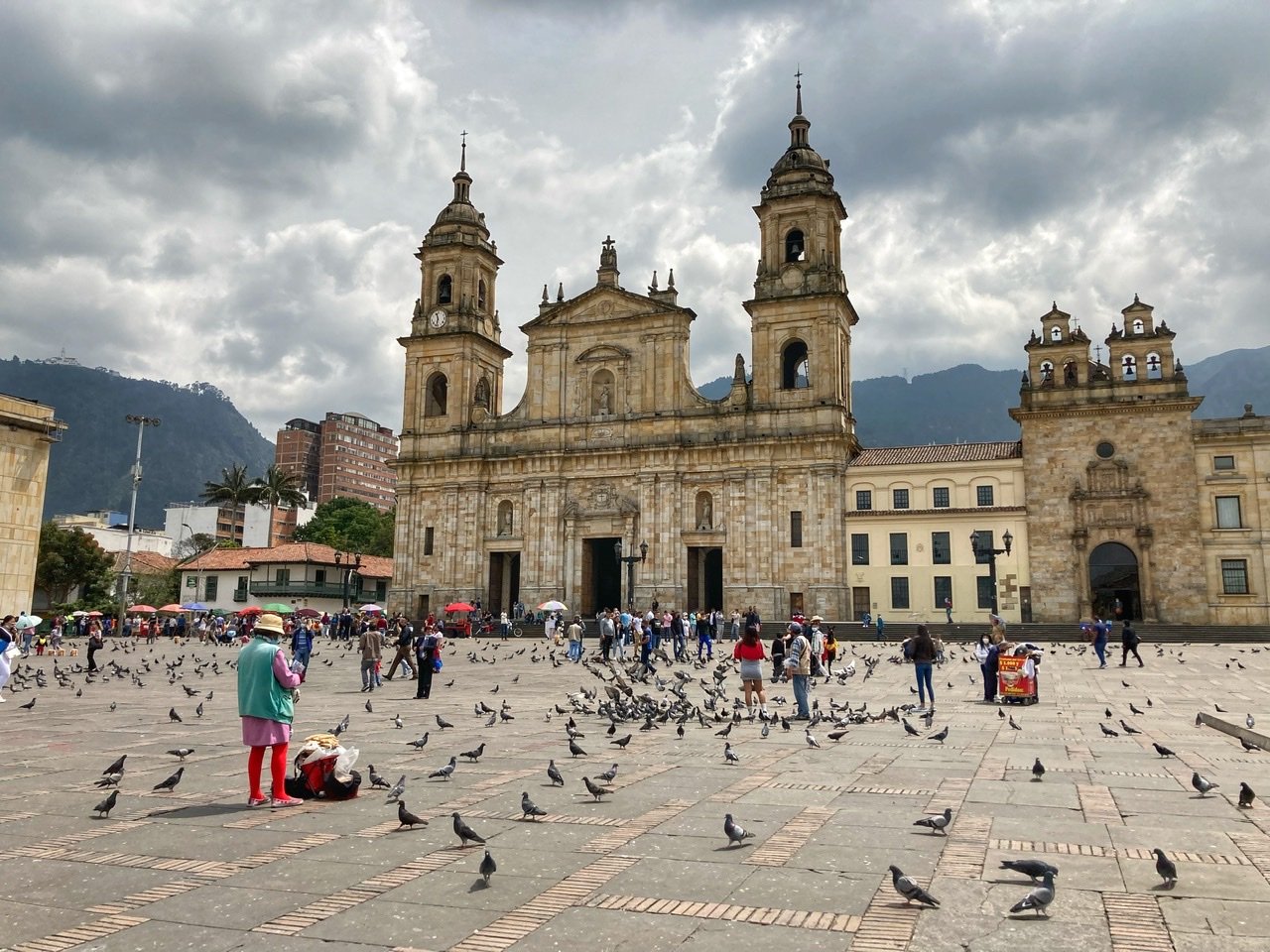

Plaza de Bolivar is the historic center of the center, and also, of the country. It dates back to pre-Columbian (yes, spelled correctly) times when the site was part of the Muisca Confederation (the indigenous people). The first building was a primitive cathedral was constructed in 1539. During the Spanish colonial period, Bolívar Square was the stage for circus acts, public markets and bullfights. The area is a massive 150k square feet and holds up to 55,000 people. (Wikipedia) Trying to capture the grand scale of the plaza isn’t easy.
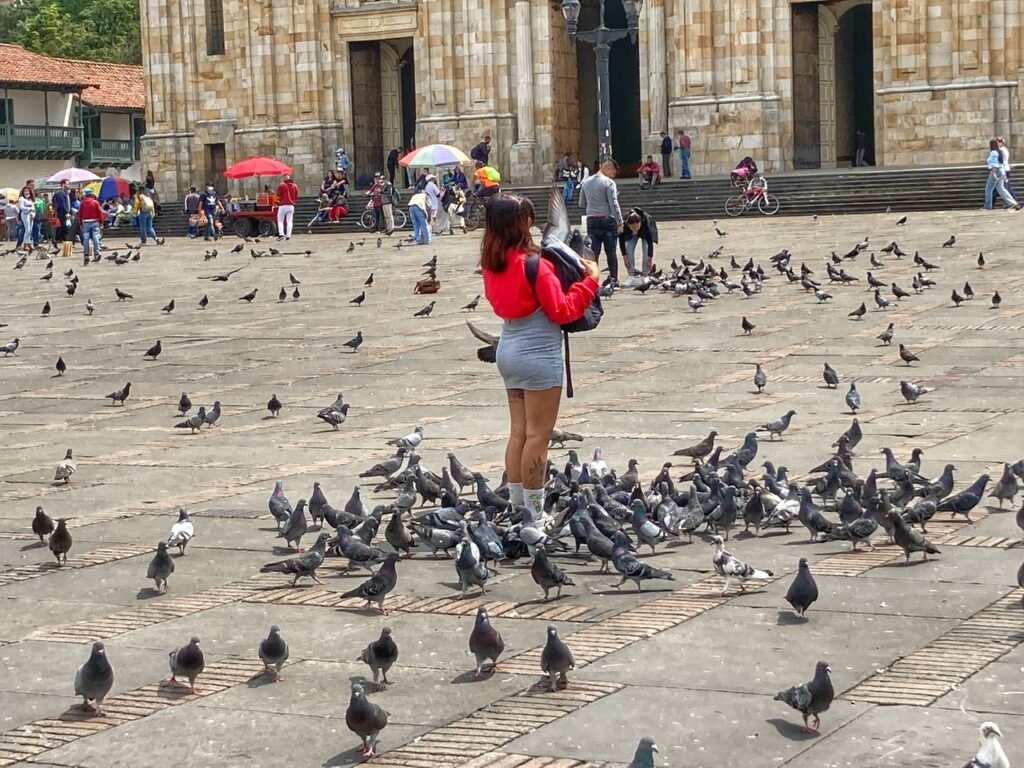
Never understood the appeal of letting air rats…aka…pigeons climb all over you.

La Puerta Falsa is a tiny shop that has been serving tamales in Bogota for more than 200 years. Its notoriety has landed it in every guidebook you’ll read about Bogota. In fact, it was just this that drove us there last time. The atmosphere was definitely unique, and you could tell it had a long and fascinating history, but the tamales were, in our opinion…not good. So we chose not to return!
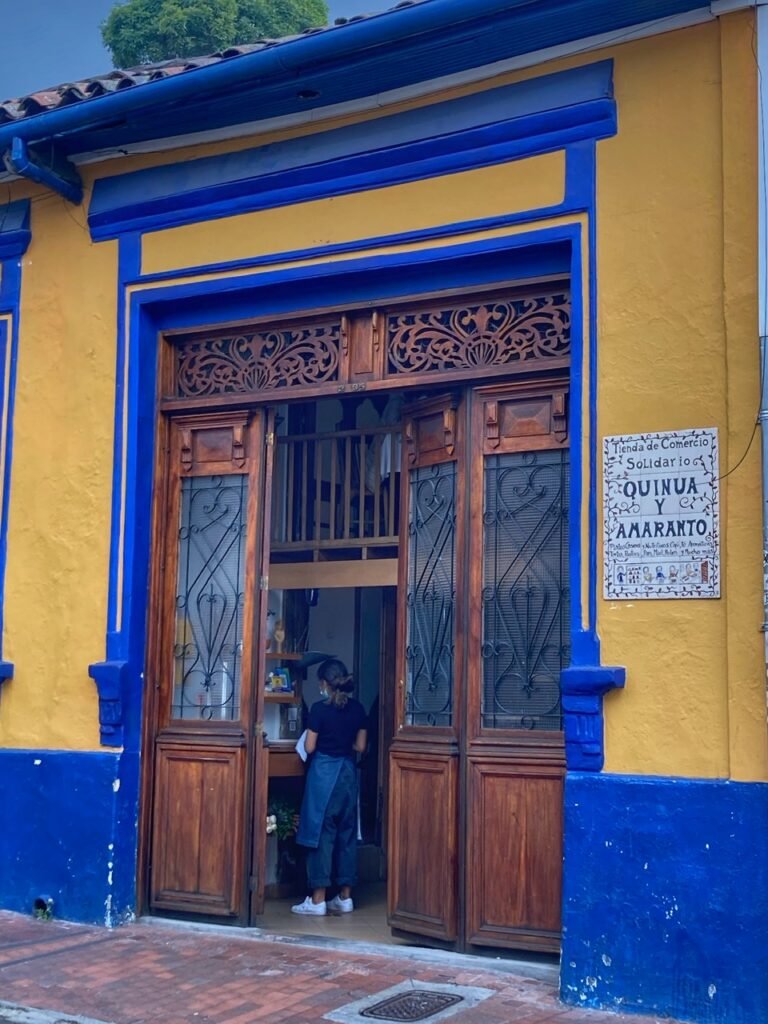
Instead, we grabbed lunch at a delicious vegan restaurant called Quinoa and Amaranth.
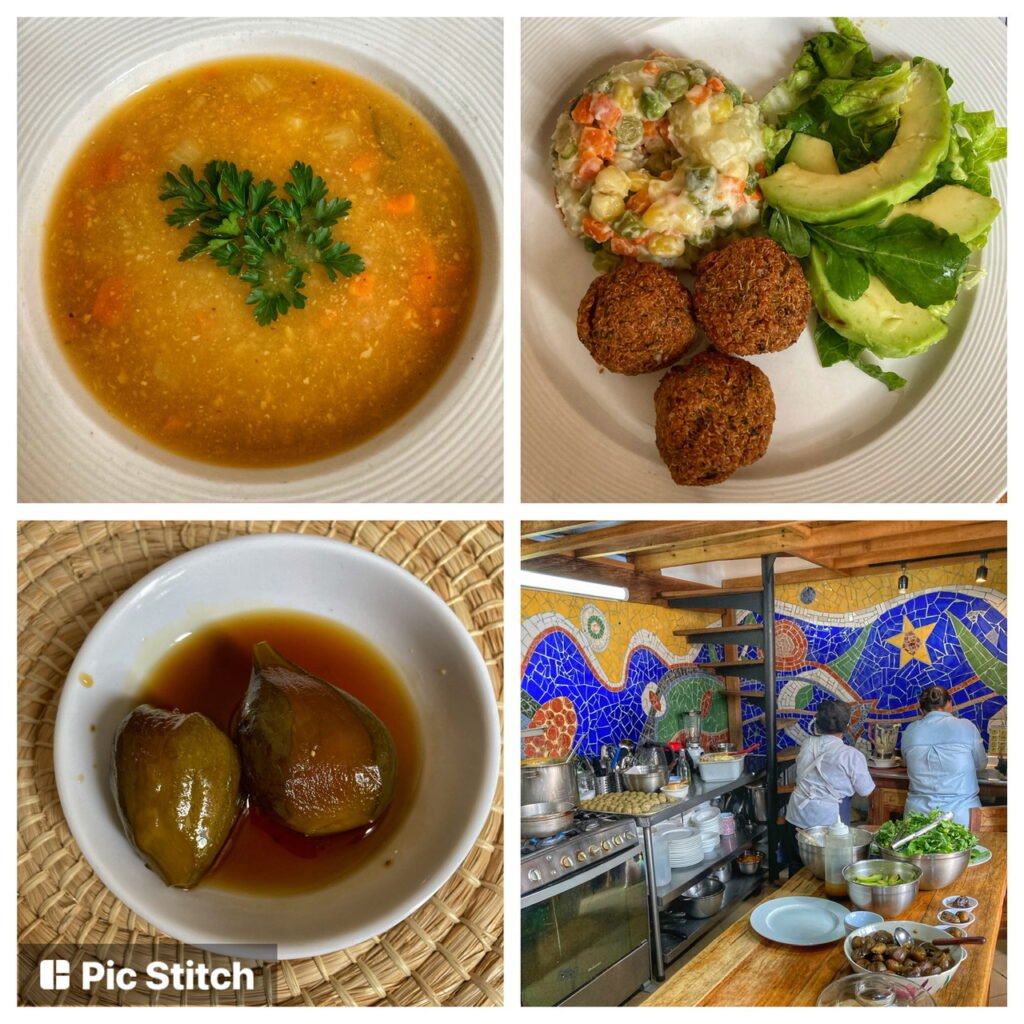
They had a Menu Del Dia of garbanzo soup, quinoa falafel balls, salads and figs for dessert. Loved this local place and their open kitchen. Cost was $22,000 pesos a plate, which at $5.50 was a bit high for Menu Del Dia, even of the vegan variety.
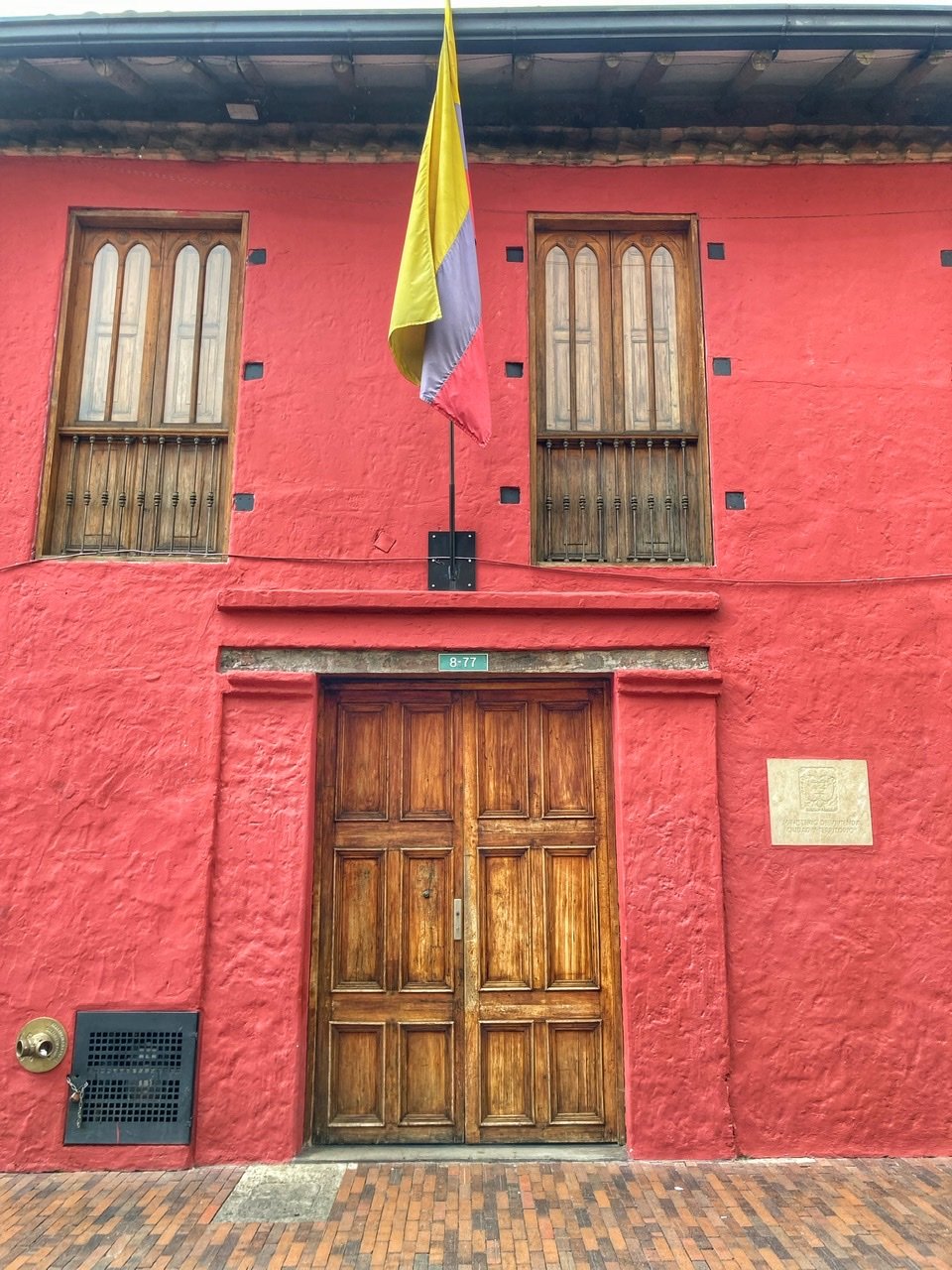
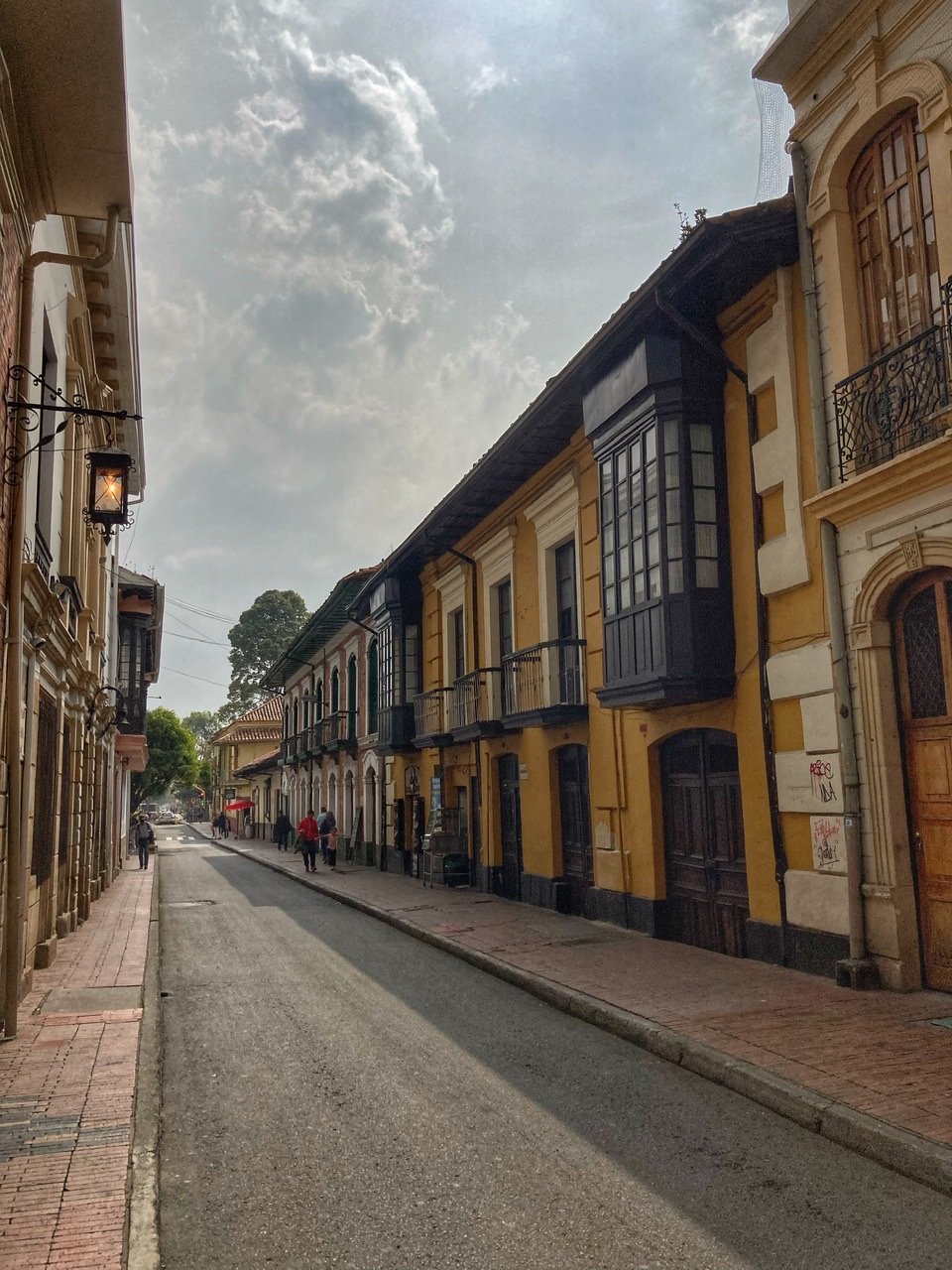
Brightly colored buildings boasting the Colombian flag.
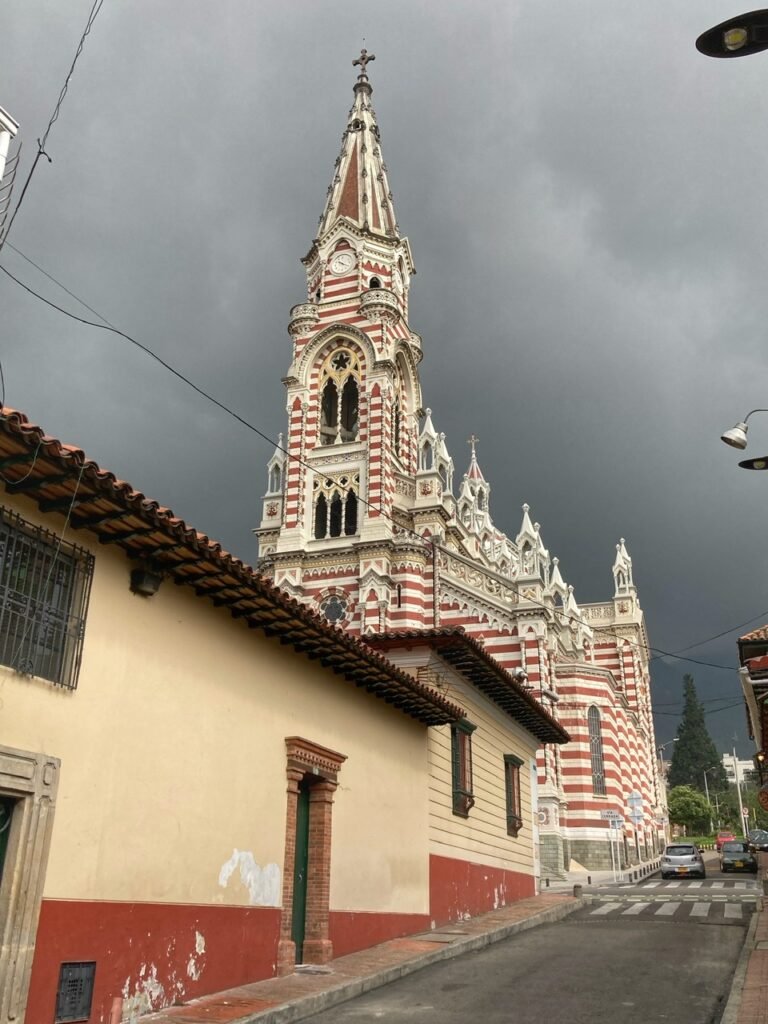
And of course, the Peppermint Church. Mandy deemed the Sanctuary of our Lady El Carmen this in 2014 after an incredibly long holiday event season which included way too many peppermints. She evidently had real candy cane brain.
This Florentine gothic cathedral from the early 20th century definitely has a unique paint scheme. It’s also a very frustrating church to try and take a photo of because there’s no vantage point without some sort of obstruction.



In short, it’s too pretty to be concealed amongst city blocks. Sadly, also, this was the second time we didn’t get to enter the cheery gates. The photos on google make it seem like Santa’s (Catholic) Workshop inside so we were a bit disappointed about that.

While roaming around behind the peppermint church, we somehow stumbled upon adorable Carrera 3 for the second time in eight years. This doesn’t seem to be a street that many tourists know about because both times it was…totally desolate. Naturally, this delighted us and gave us the chance to feel transported from chaotic Bogota to what instead mimicked an inviting Colombian village.
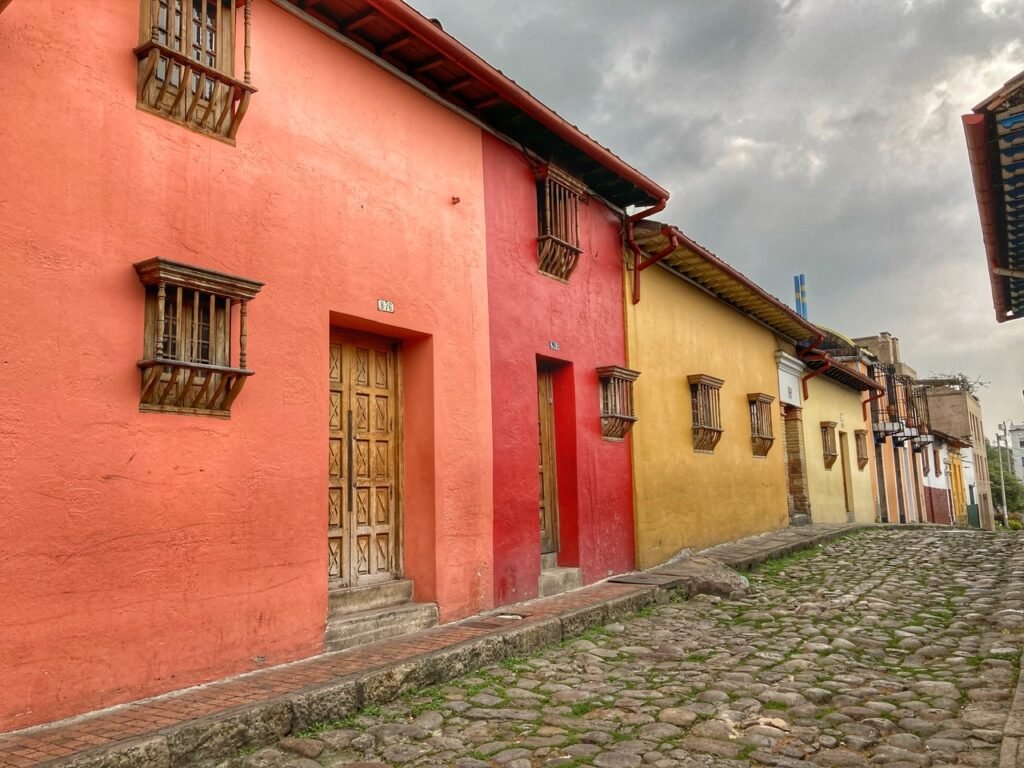
Another photo of Carrera 3. This very street was Mandy’s very first exposure to how Crayola-laden Latin America can be. And the moment she saw it, she needed more.

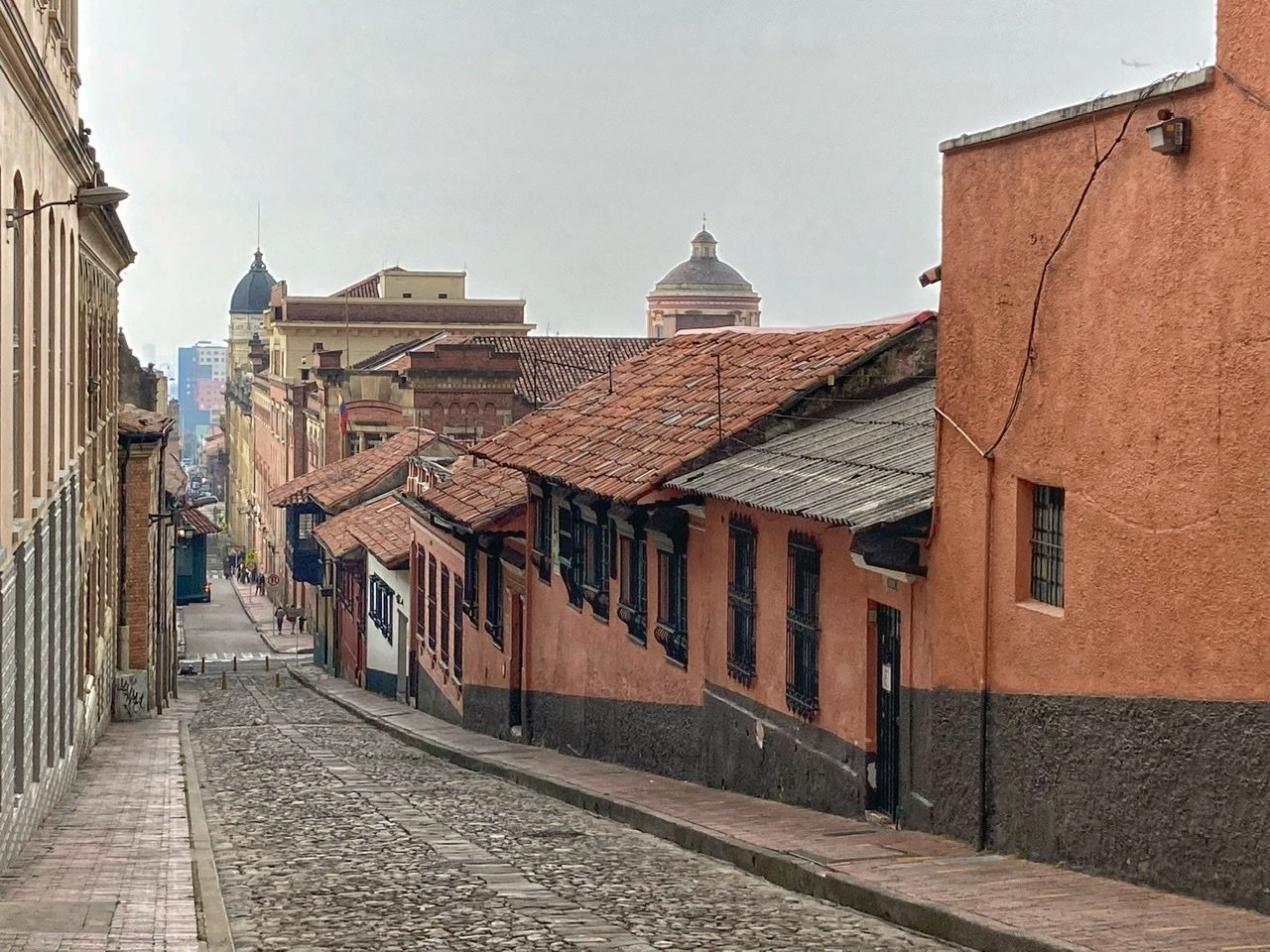
Another Candelaria Street scene. It’s interesting how different the color palettes varied from street to street. We bet the people inside are pretty different as well.

Don’t jump….little person on the roof!!
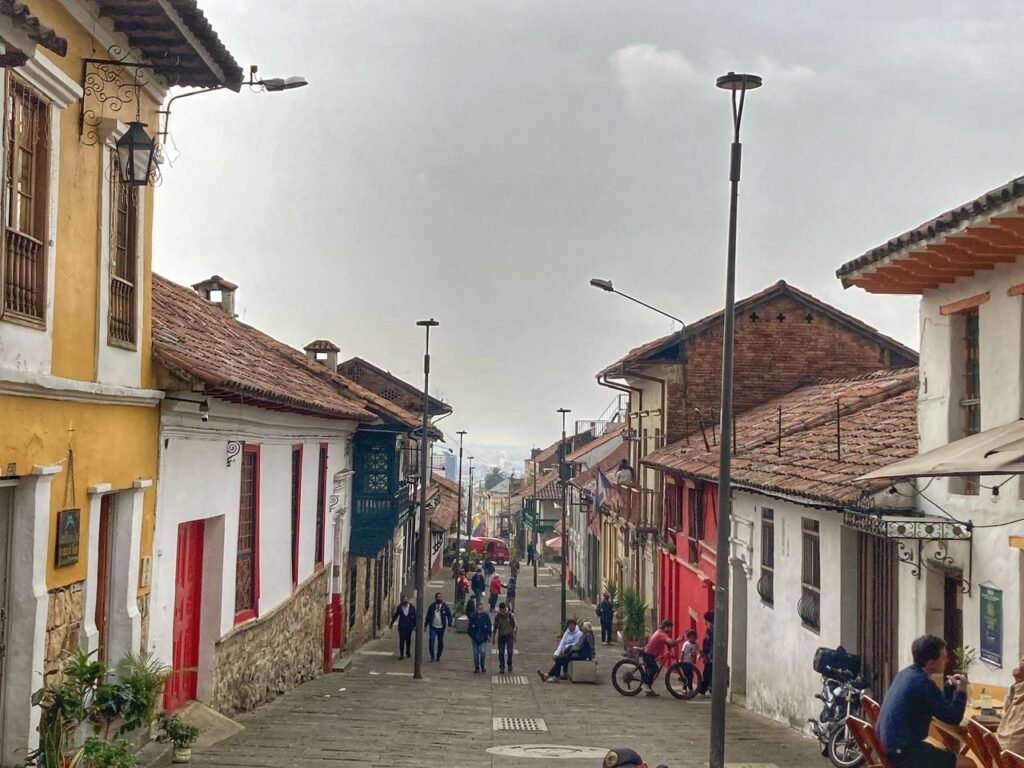
One of the pedestrian streets.



The Bogota Beer Company is on practically every corner and we have to admit, they make some damn good brews including this one infused with Colombian coffee. It’s one the strongest and most wonderfully fragrant coffee beer we’ve ever had.
It’s not as cheap as in other cities throughout Colombia. We got these pints for about $4 and $5 while in others its been $3! Bogota is definitely more expensive by Colombian standards, which is why were glad to be parked in one place for a bit.
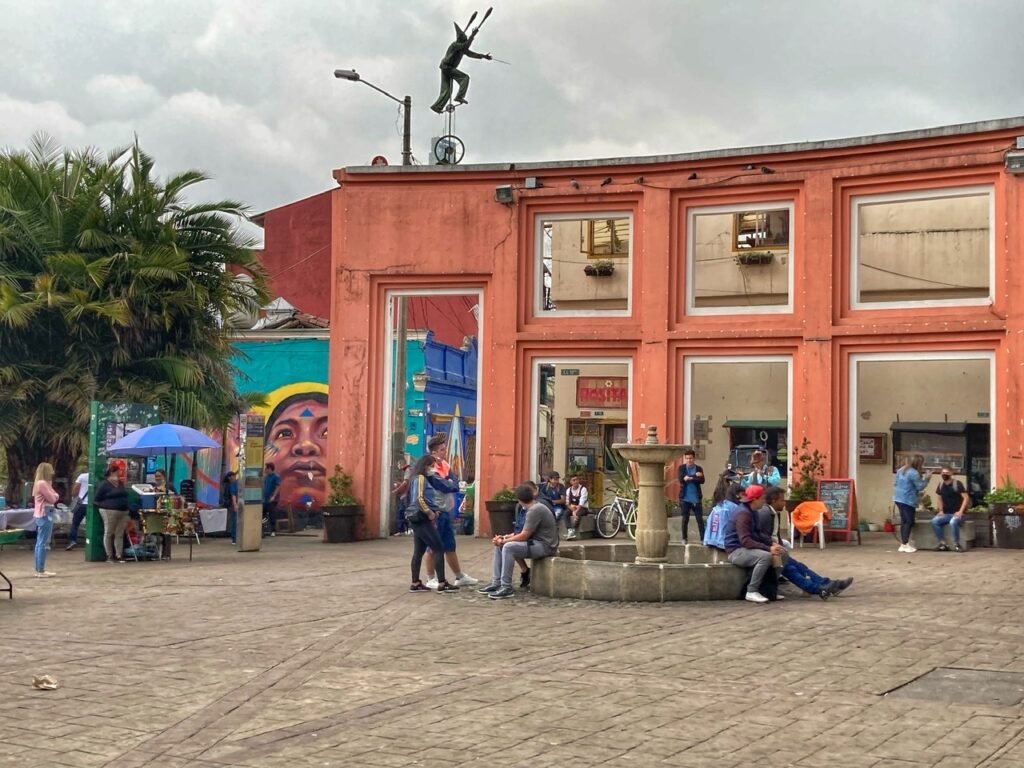
The Plazoleta de Chorro de Quevado purportedly signifies where Gonzalo Jimenez de Quesada, a Spanish Conquistador, first established the foundation of Bogota in 1538. Today, it seems to be where everyone goes to have a good time as it was bumping with music and nearly everyone had a cerveza or Chicha in their manos. It’s also a very famous plaza for movie sets.

In the plaza, there lies a small chapel called the Hermitage of San Miguel del Principe that was built in 1969 on the site of the very first chapel in Bogotá.It is based on a reconstruction of a church that was once in Santander Plaza but razed because the external appearance was “too plain.” The church steps and the nearby arch was built by Javier Olave to recognize the local “lunatics” Bobo del Tranvía, the Conde Cuchute, the Loca Margarita. (Wikipedia)
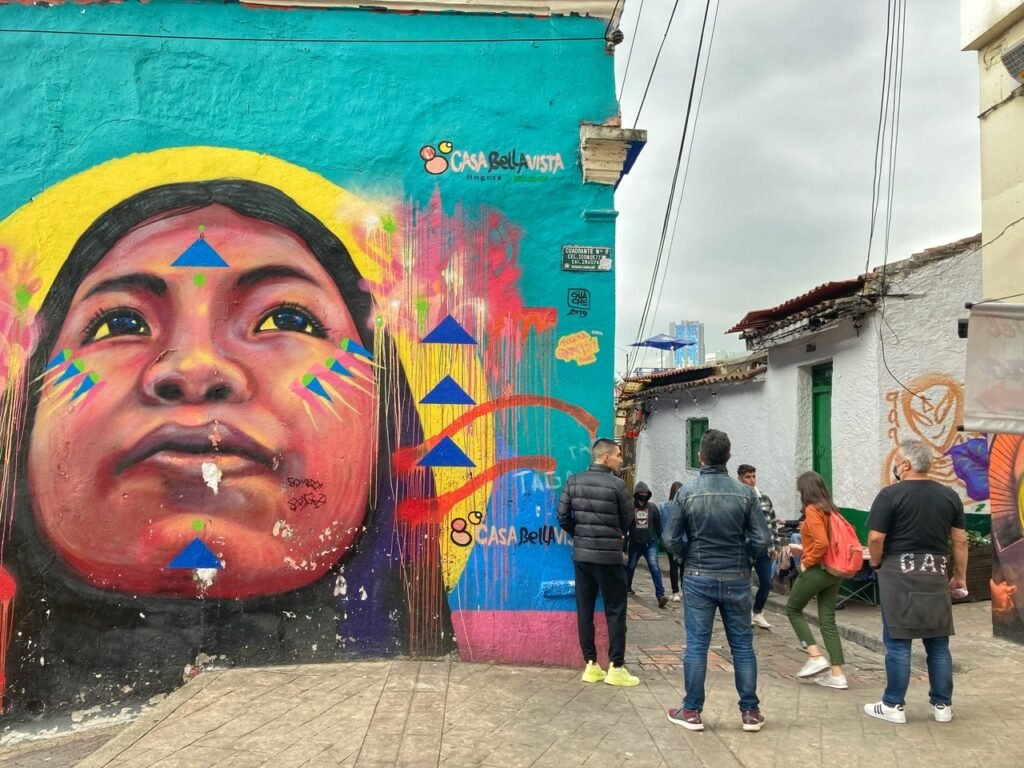
There is tons of spectacular graffiti in this area.
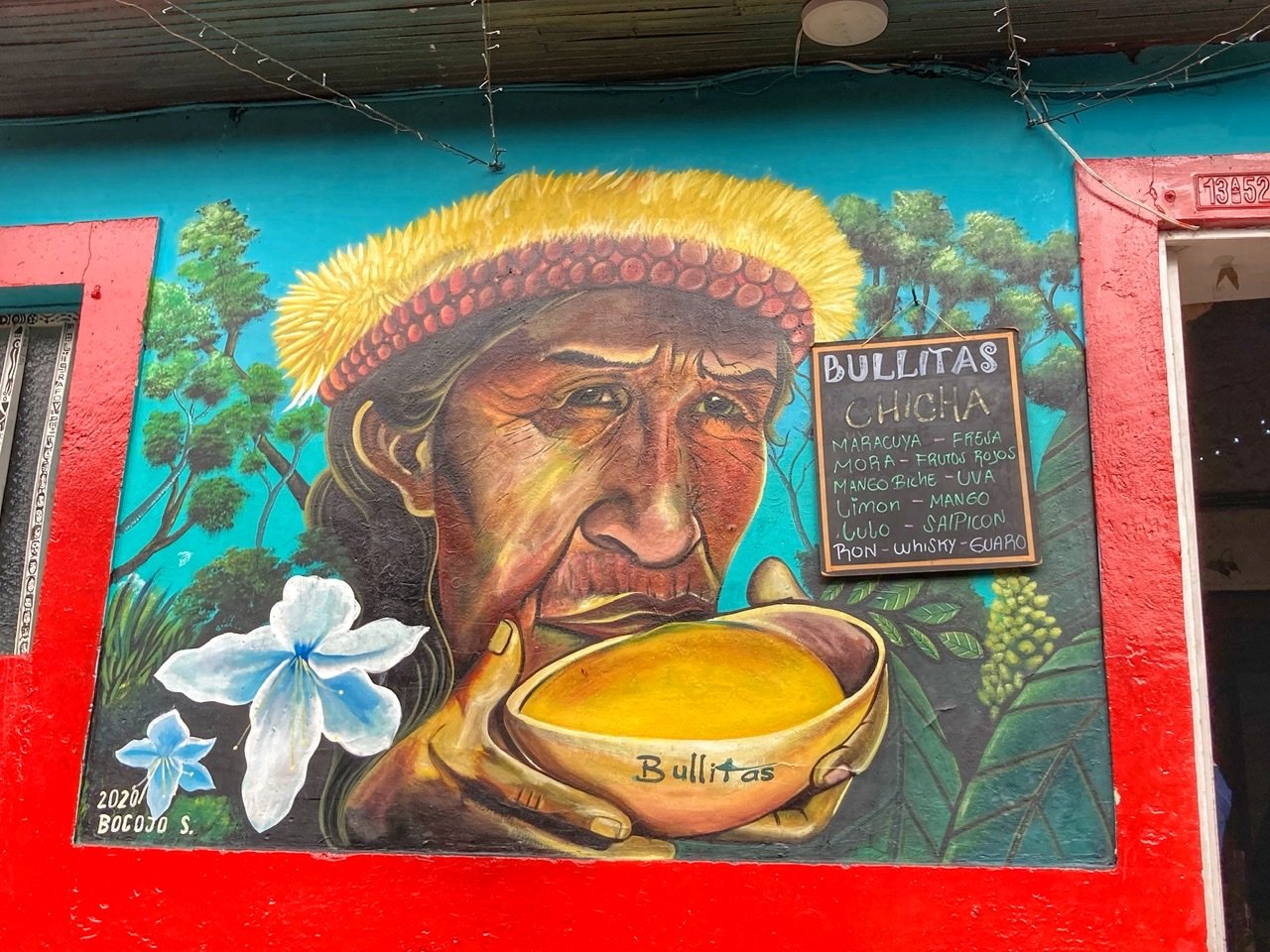
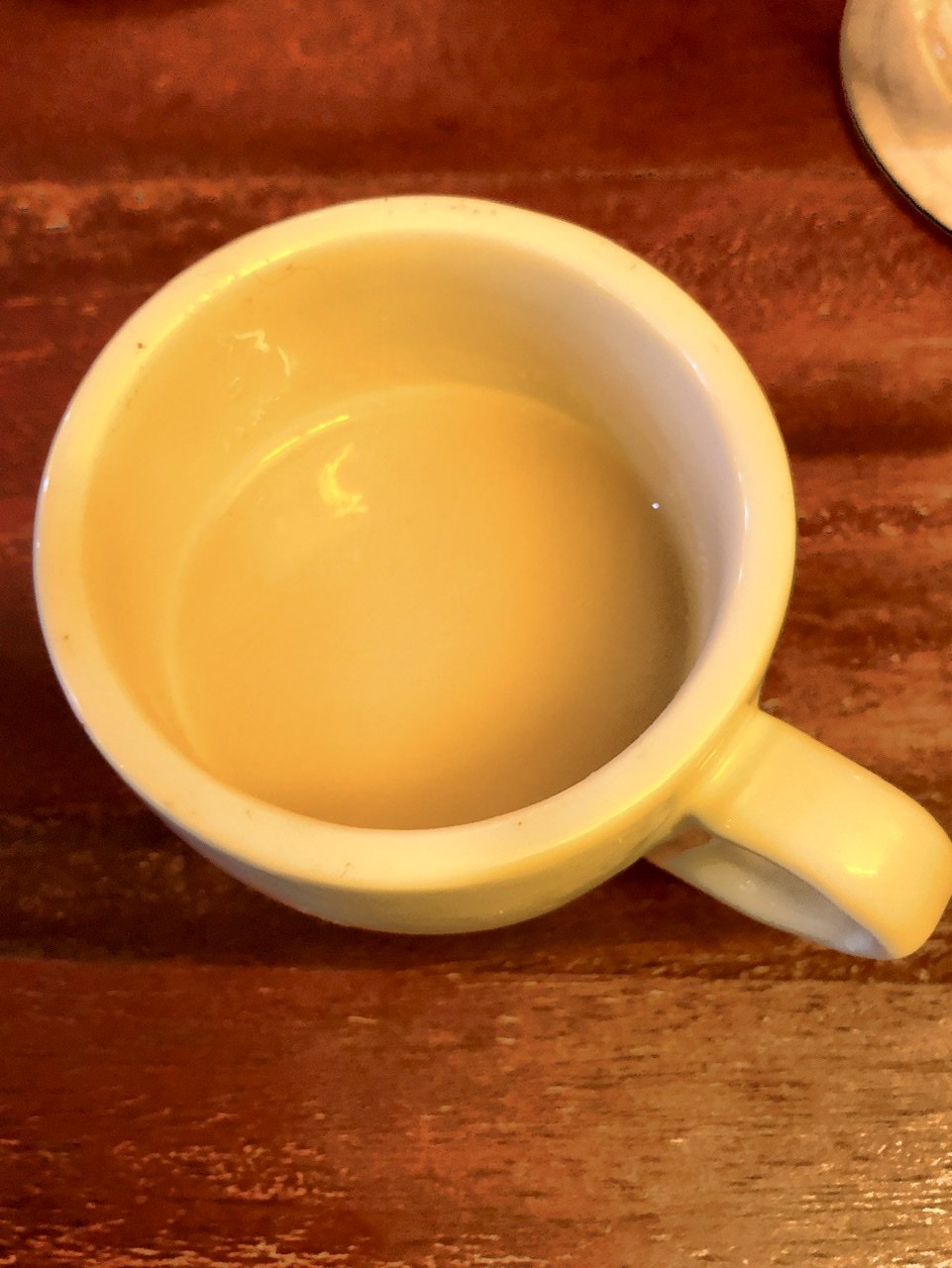
Including this beautiful image of a woman drinking Chicha. By now, you might be wondering, what IS chicha??? Chicha is a fermented drink dating back from Inca times with about the same alcohol content as beer. It was traditionally made in a clay pot with corn and pineapple, and sweetened with panela (hard brown cane sugar), also known as piloncillo. Traditionally, the fermentation process begins by putting the corn kernels in “someone’s” mouth, chewing a few times and spitting it out into a bucket. The saliva that human mouths contribute to the grains contains enzymes that breaks down the starches and starts the fermentation process. For this reason, it is exactly why we have been AVOIDING it. We could just picture someone’s abuela chewing corn for hours on end to spit into the drink we would enjoy… HAHA.
However, we found out that chicha, at least in places like Bogota, is no longer made with spit (score!) so it was worth a swallow. It tasted a bit like plain kombucha, but is thicker and creamier, like Cream of Wheat, although a bit sweeter. Still, one slurp was enough for us.
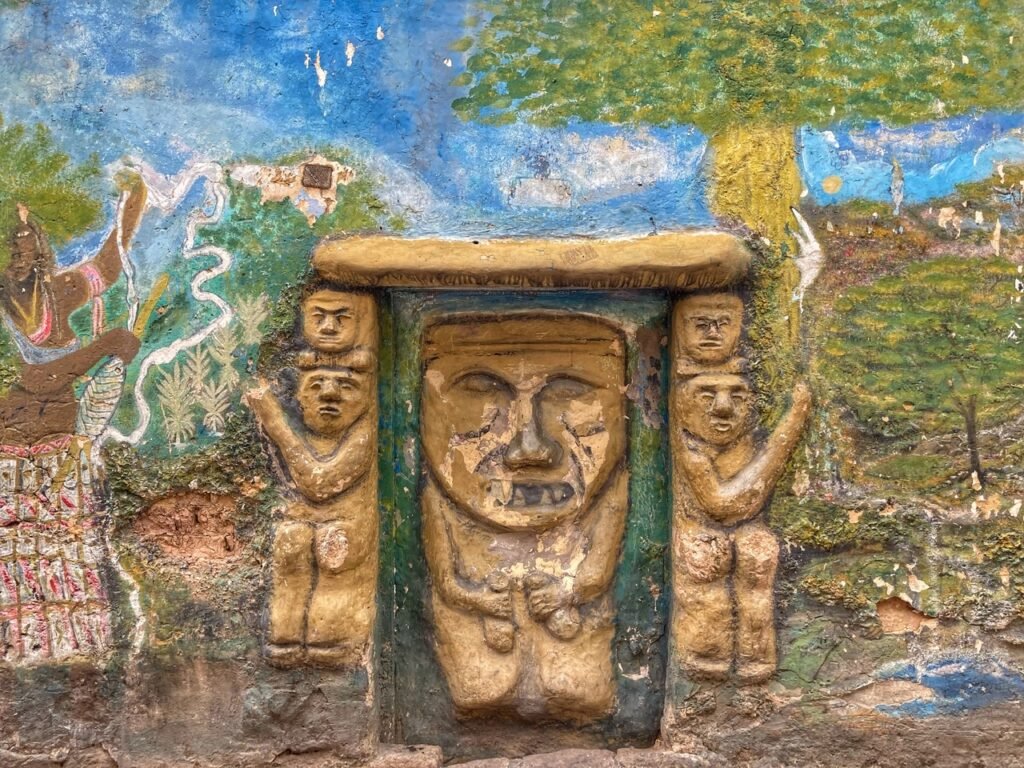
Preparing ourselves for Inca Land.

Back in the alley near Chorro de Quevado, there is no doubt in our mind, this is party central…
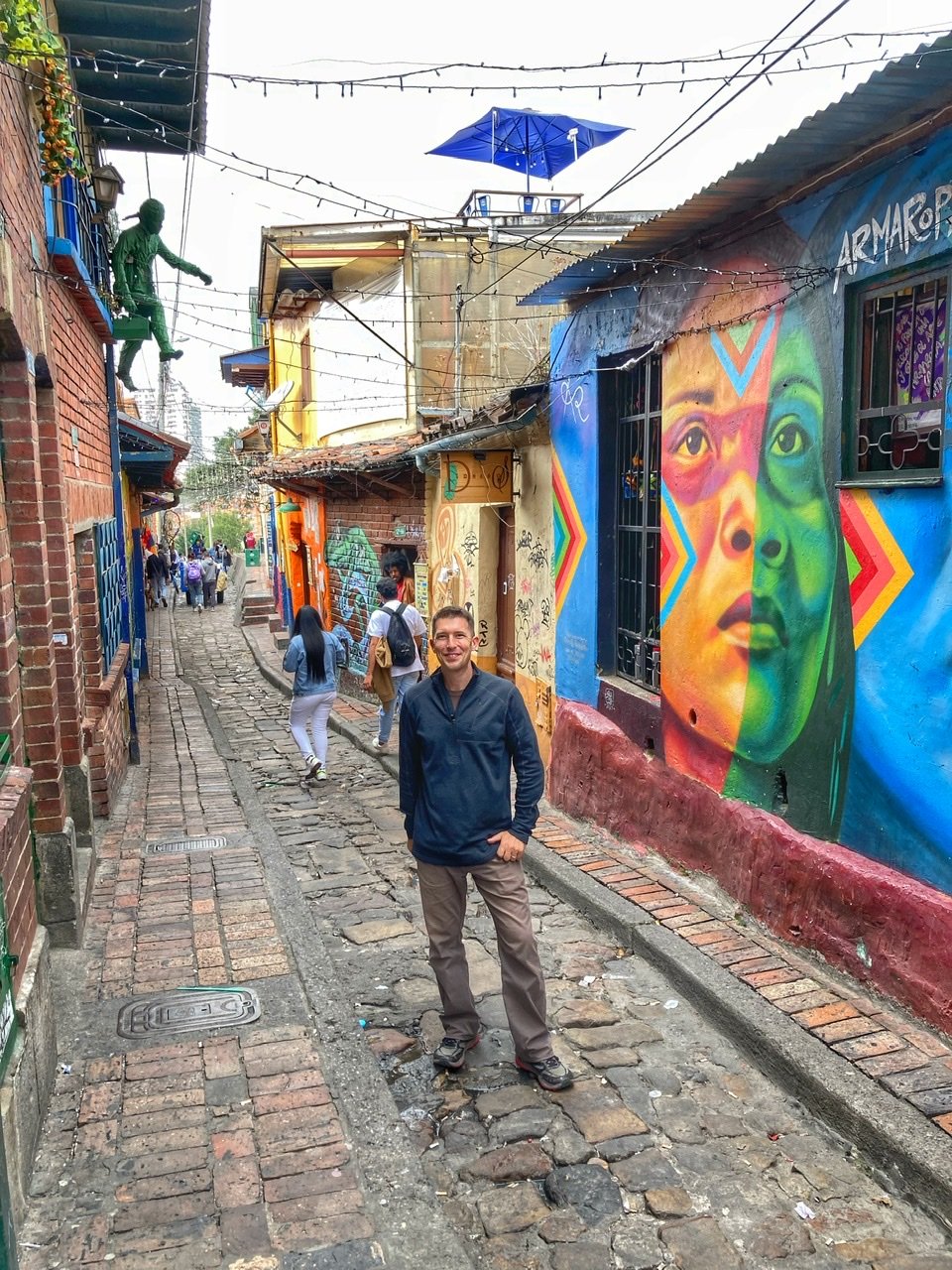
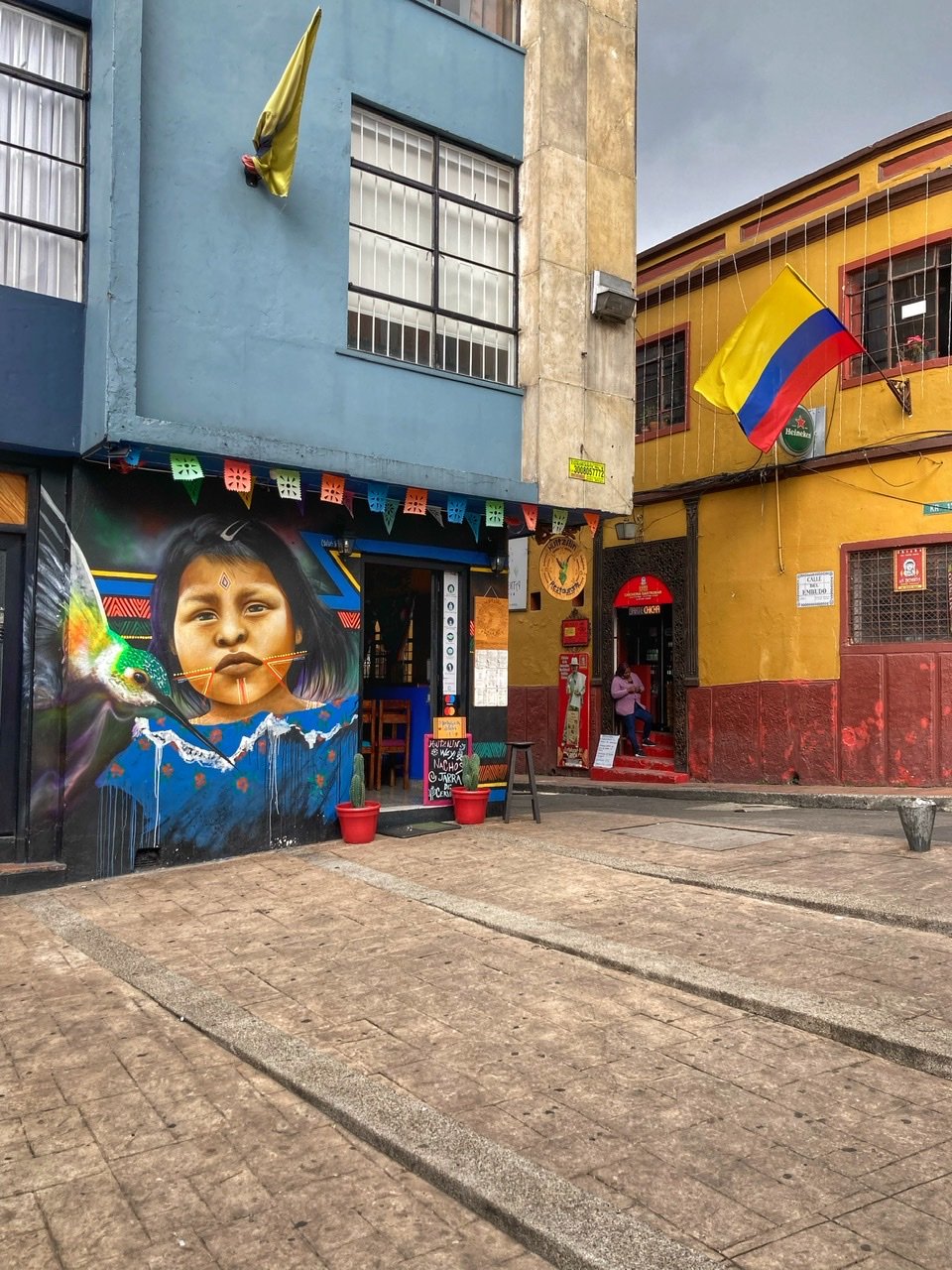
The essence of Colombia.
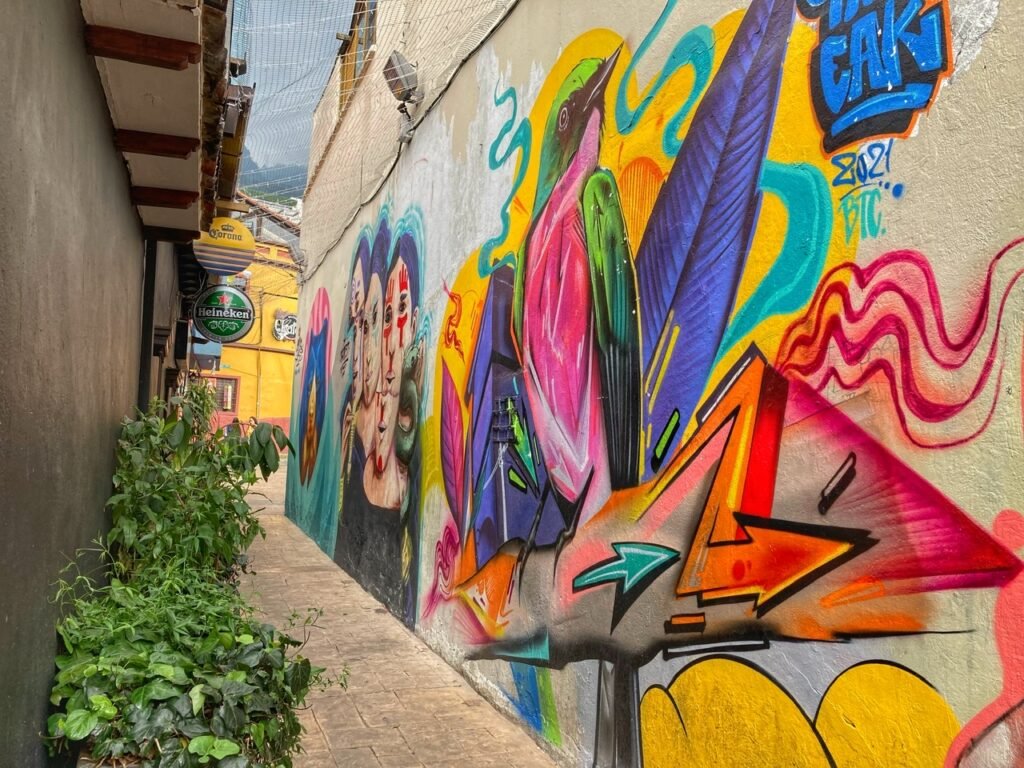
Small alleyways to weave your way through made this neighborhood great for the curious cats.
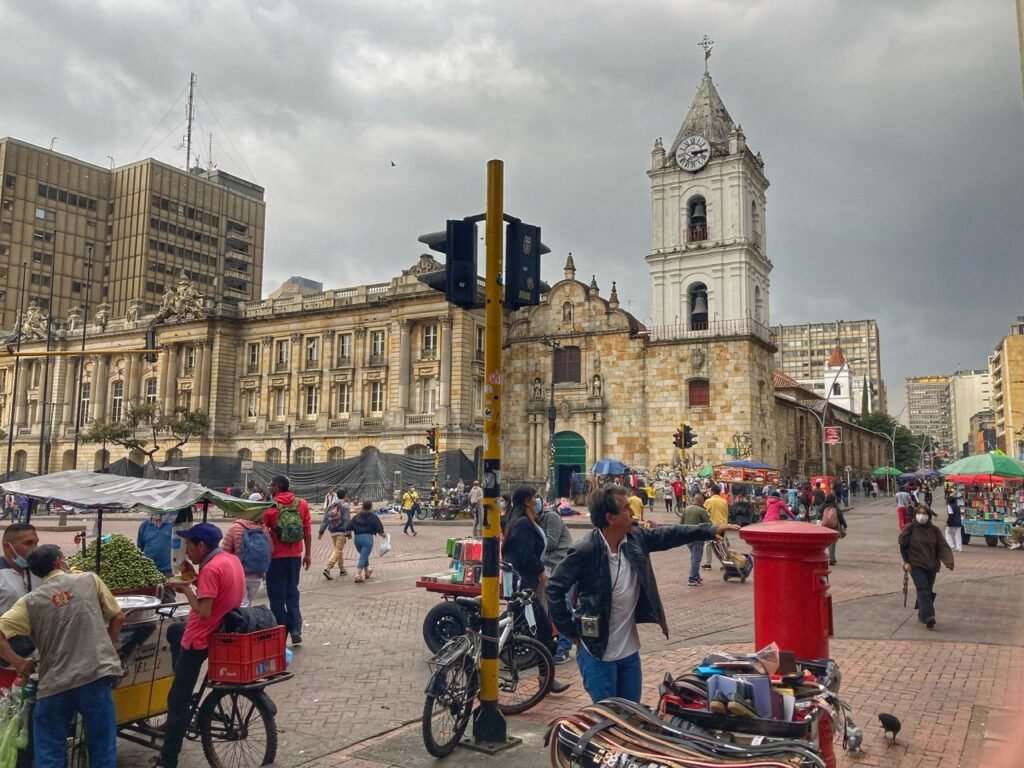
Iglesia de San Francisco is the oldest church in Bogota built between 1557 and 1621.
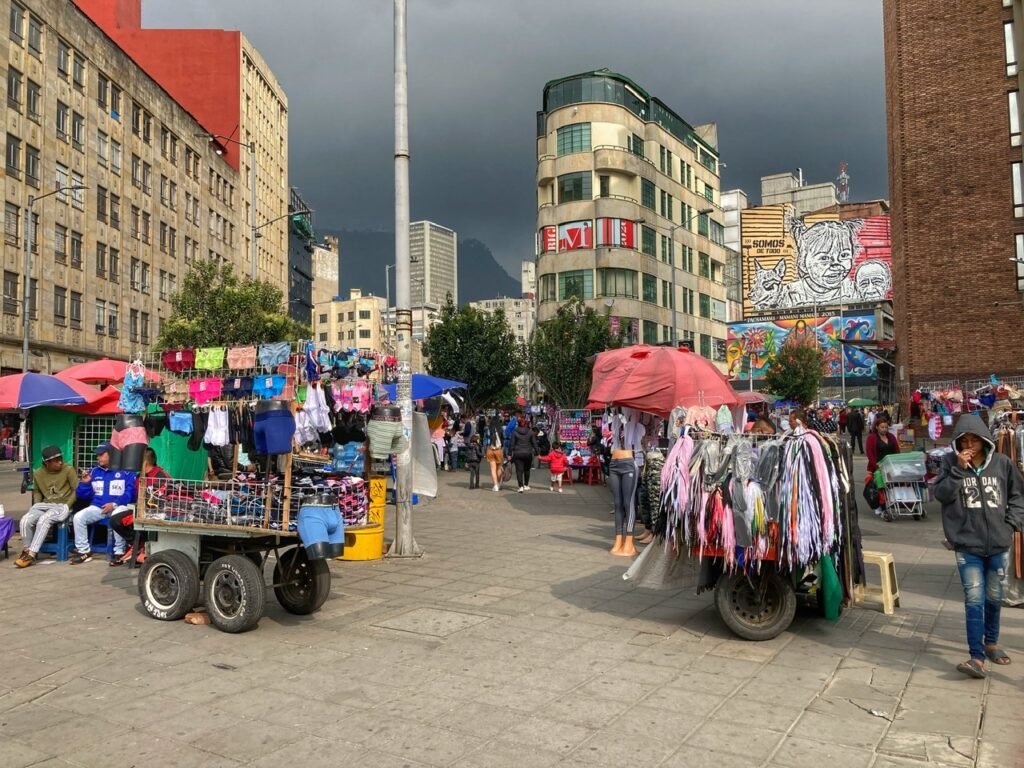
So many shopping opps!
Museo El Botero (Botero Museum)

Considered the most recognized artist in Latin America and one of the richest living artists in the world, checking out Fernando Botero’s work is a must do while in Colombia. And you can do it for free in Bogota! While we had already ambled amongst his amongst his sculptures in Medellin, this was our first large-scale introduction to his contemporary paintings, and wow, were they beguiling. His style, called “Boterismo”, depicts people and figures in large, exaggerated volume, (usually with undersized reproductive parts) which can represent political criticism or humor. So, according to Botero, they are not fat…they are voluminous.
One thing he is known for is copying the great masterpieces. You may slightly recognize this one…

El Estudio (the studio) from 1990. We presume Botero is also depicted in this one. Botero was born in 1932 and is still actively creating art 10 hours per day. He does this in his four houses in Paris, Italy, New York and Medellin. Each house is dedicated to a certain type of artistic creativity.
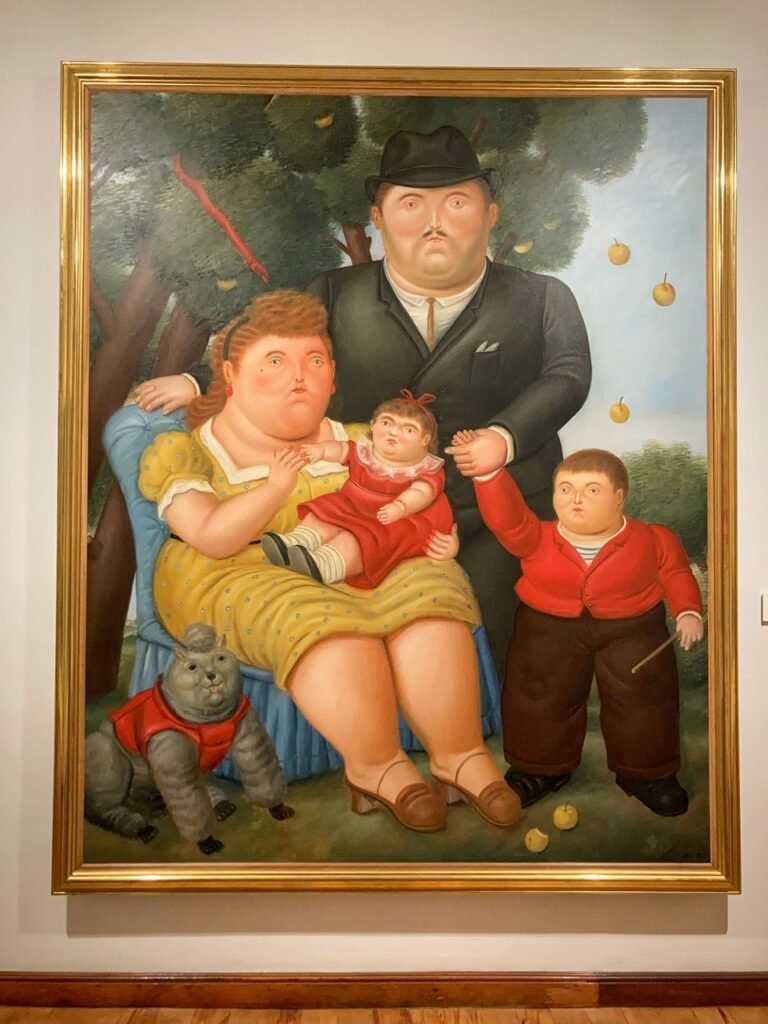
We particularly enjoyed the dog in “Una Familia.”
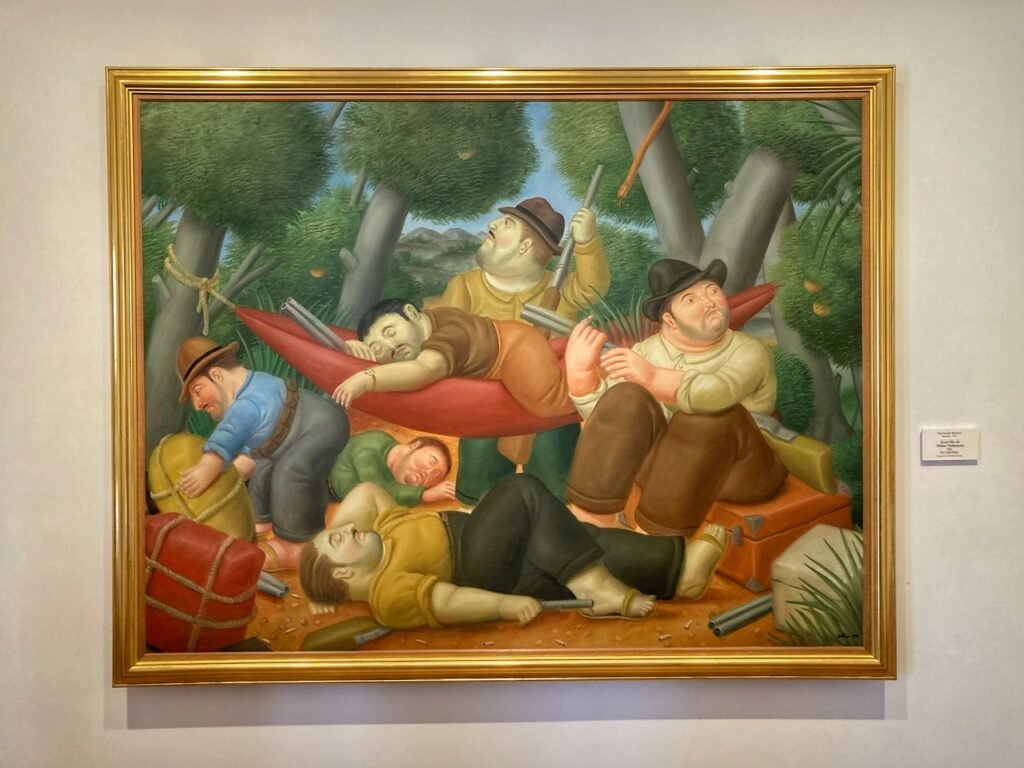
This painting depicts guerrillas led by Eliseo Velásquez in the early stages of “La Violencia”, a ten year period of violence/civil war that plagued Colombia from 1948-1958.
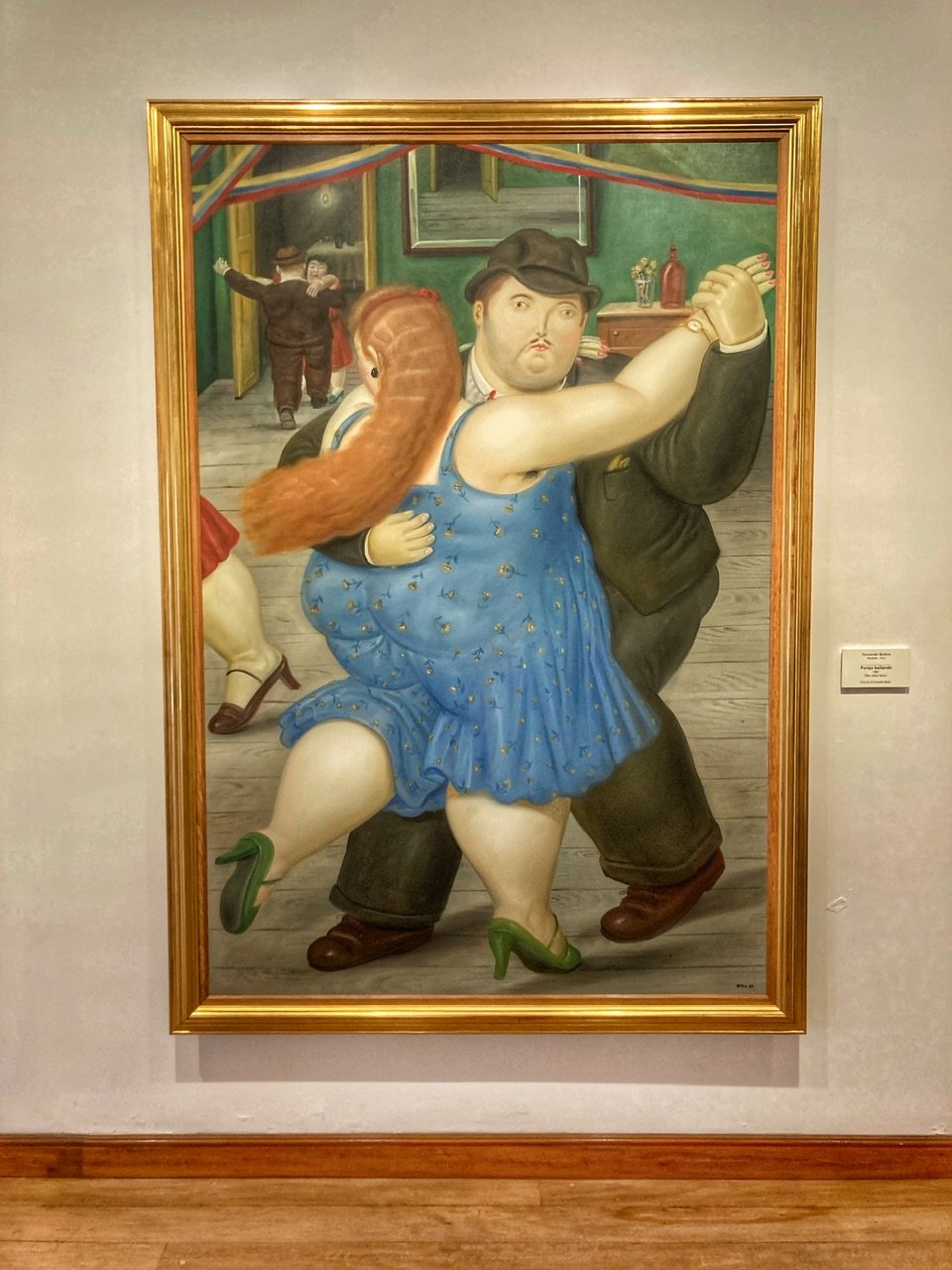
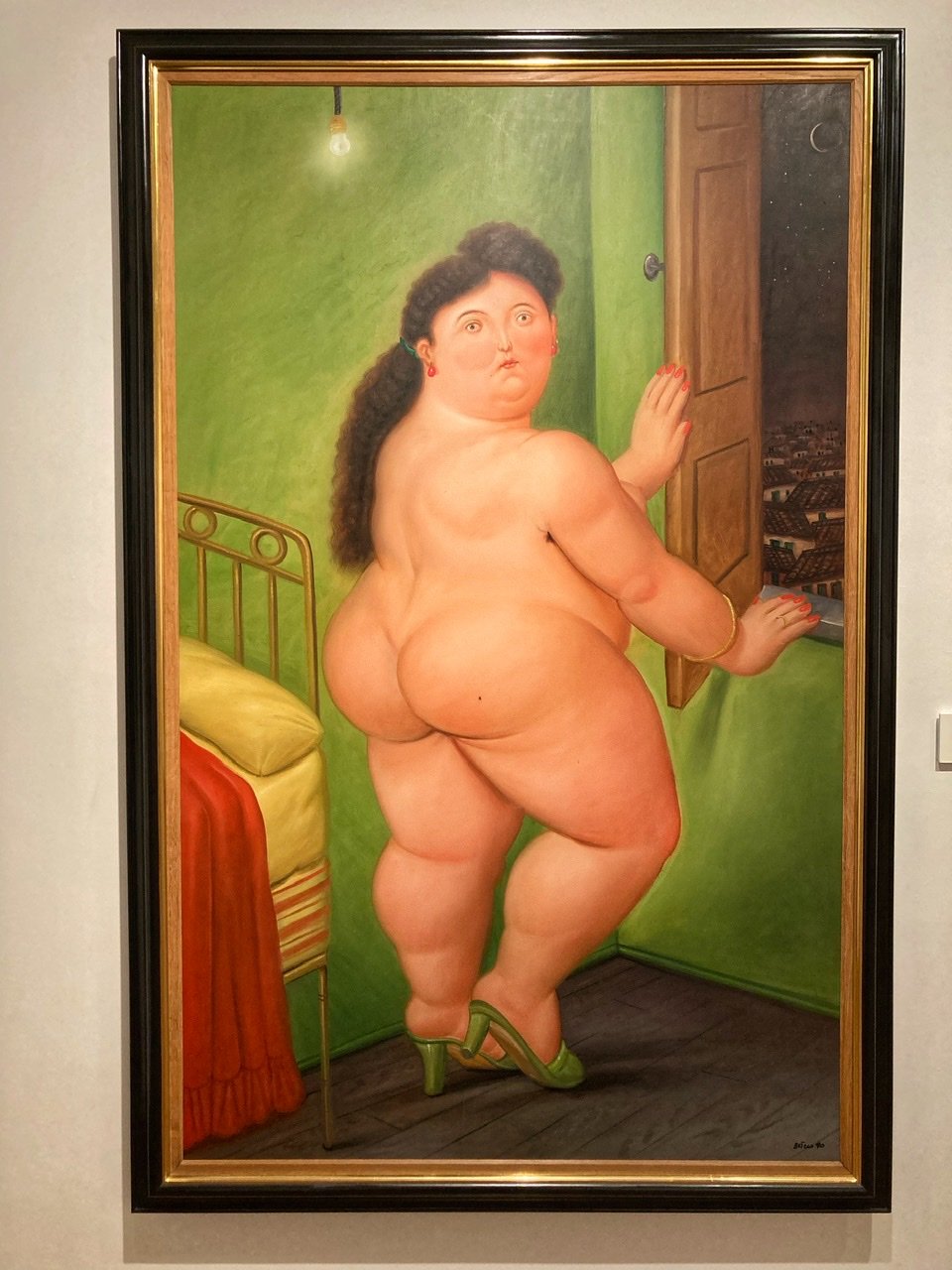
Pareja Bailando (Couple Dancing.) Same couple as in Una Familia, we believe. At right, this might be another lady or else she hit the color bottle.
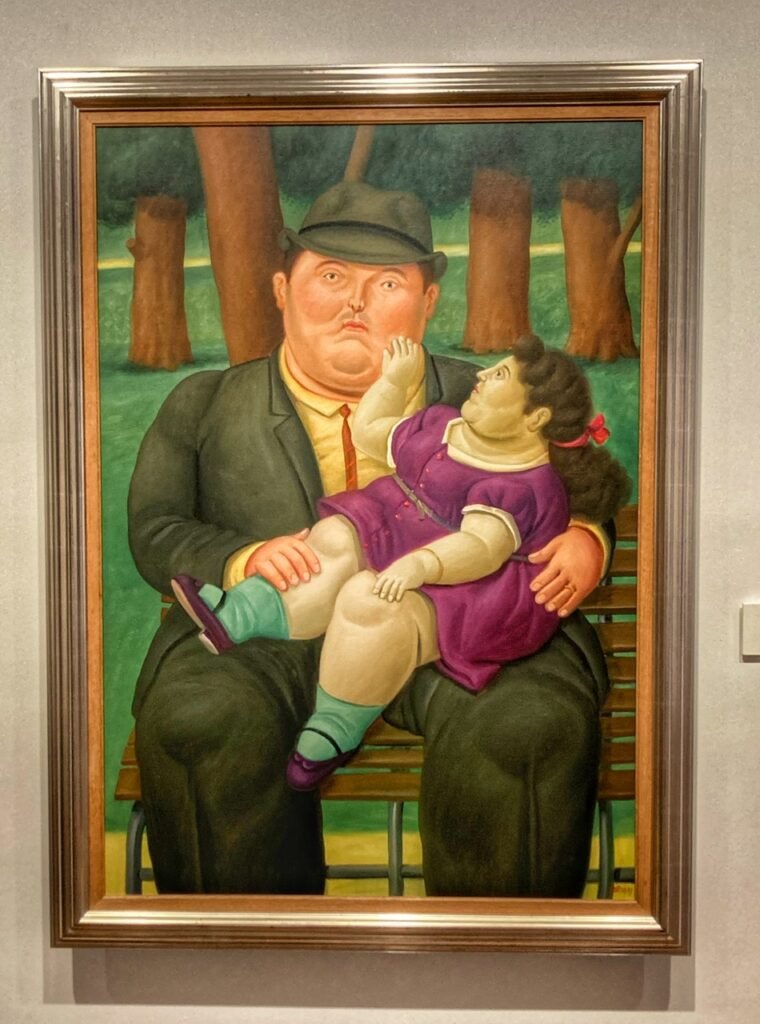
Wow! That is one large and unfortunate looking child.
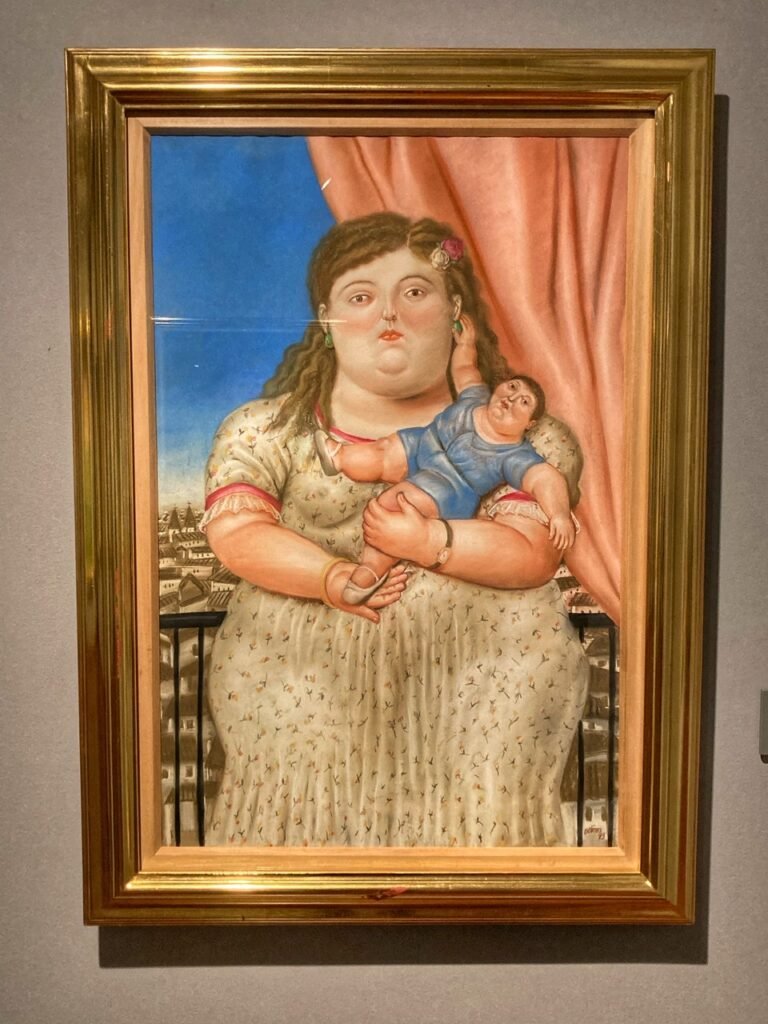
I guess all the kids in BoteroLand have bodies too big for their heads.

Awww. So endearing.

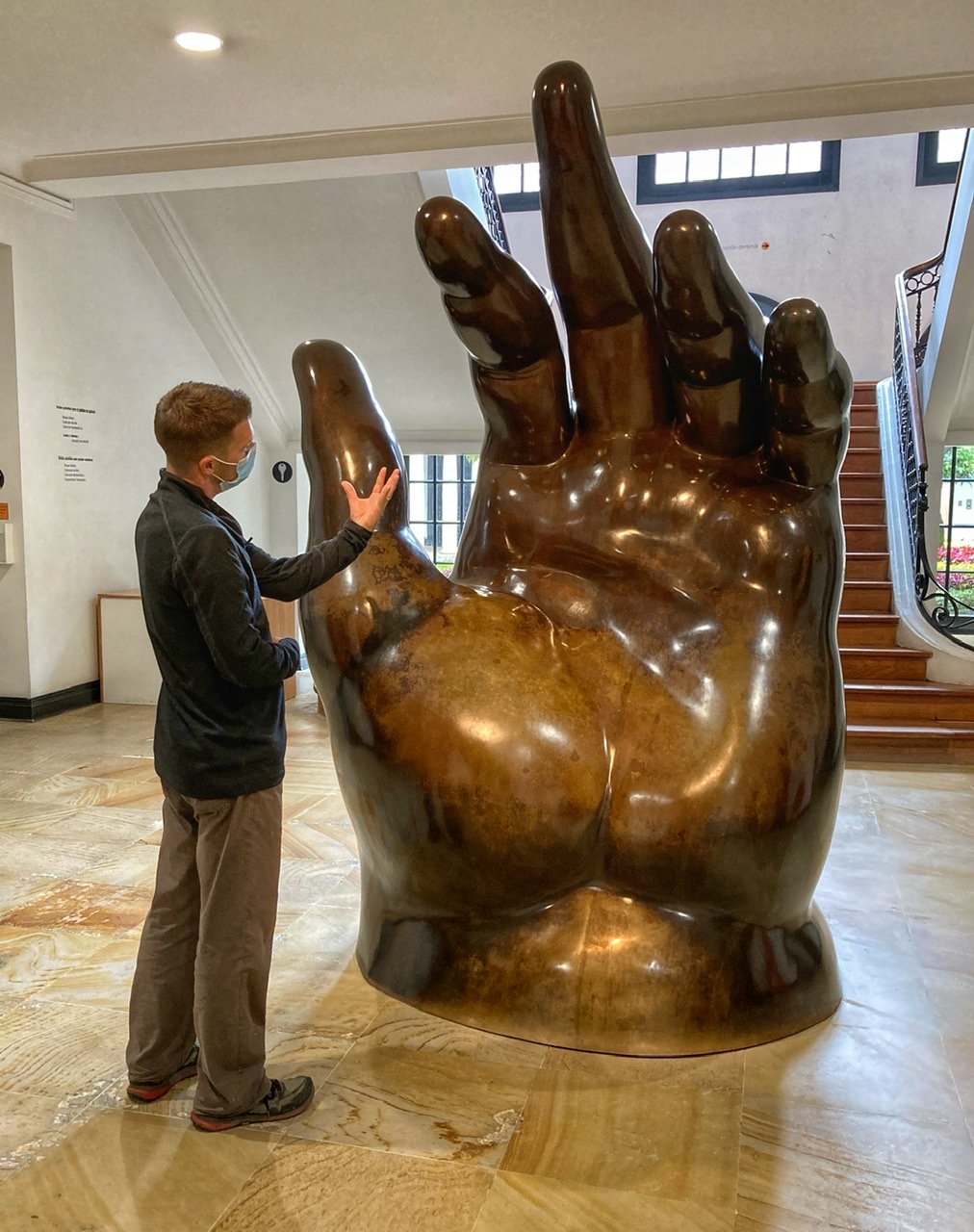
This pencil sketch is entitled “Manos” or “Hands.” We give it several thumbs ups. Or another finger?
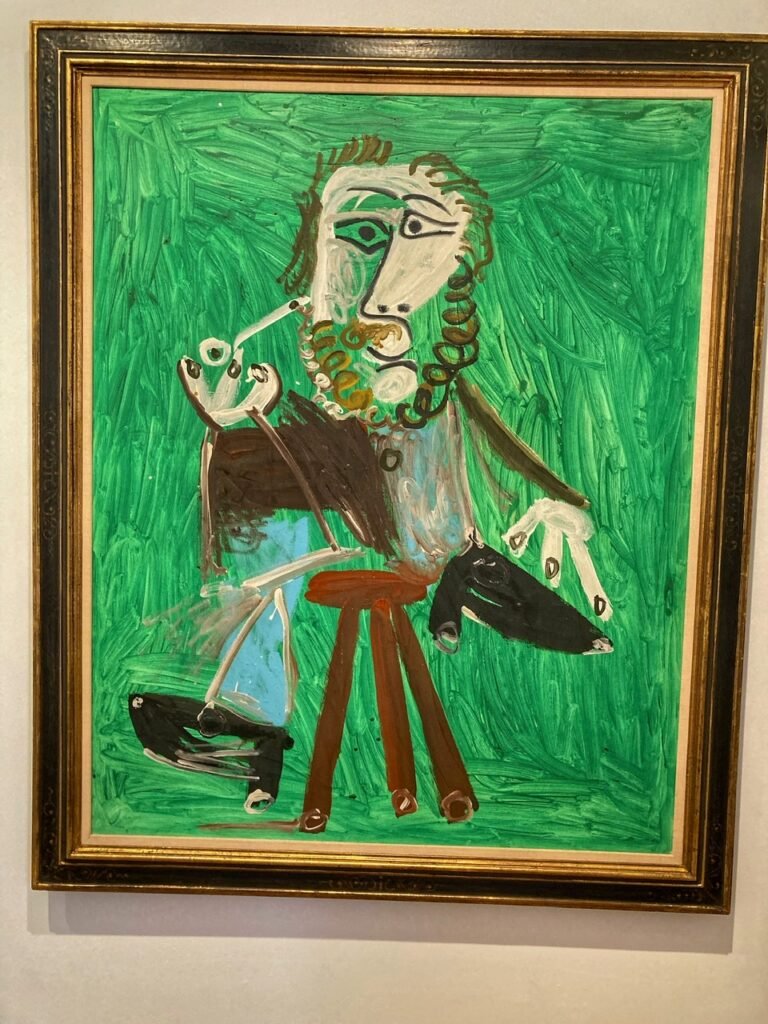
He also donated more than 300 of his to the museums in Bogota and Medellin. The value of his artistic donations is estimated at $200 million and included original works from Dali, Picasso, Renoir and Ernst. Here, of course is a painting by what appears to be an eight year old. Aka Pablo Picasso. Will never understand this one ?
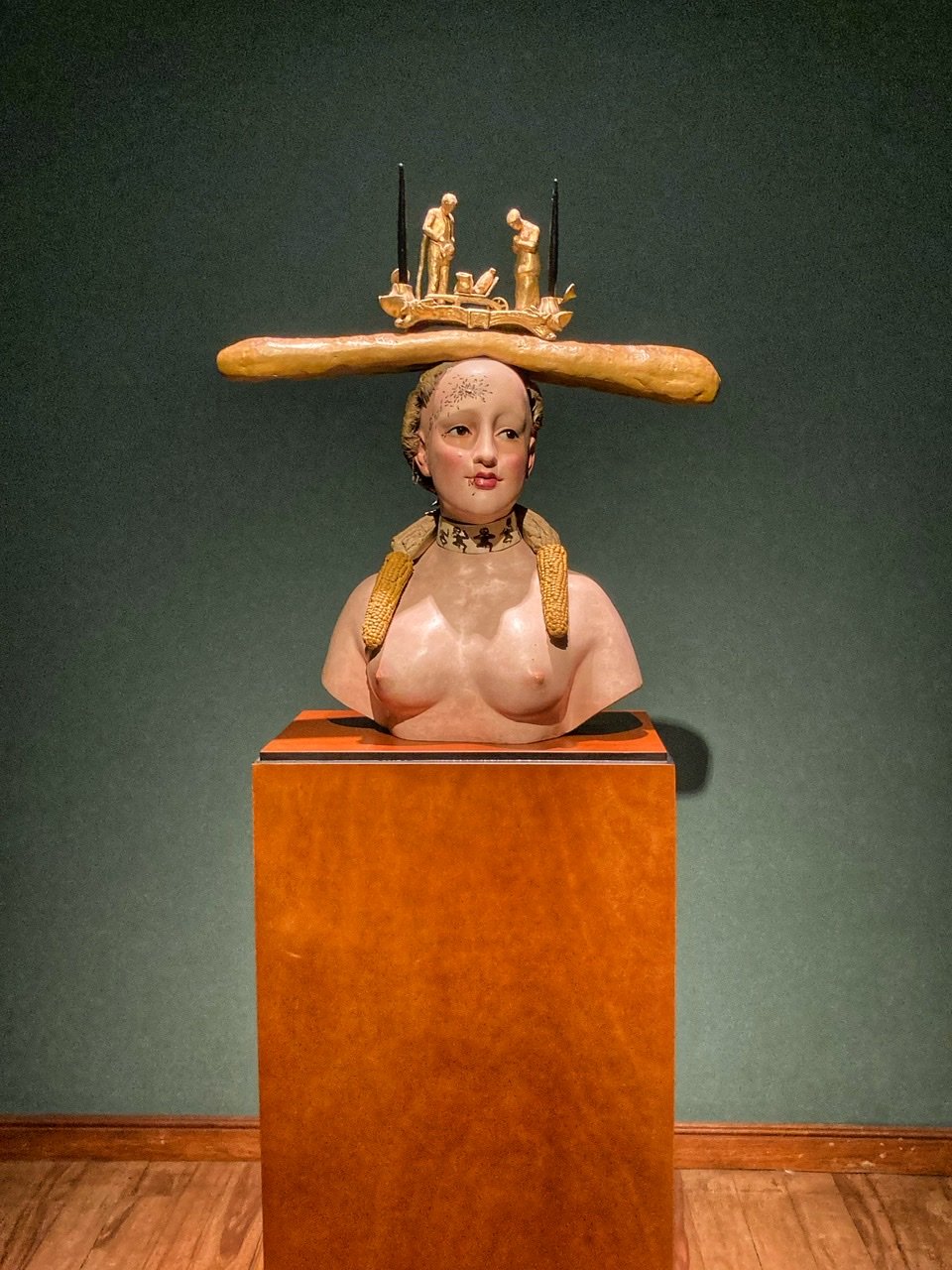
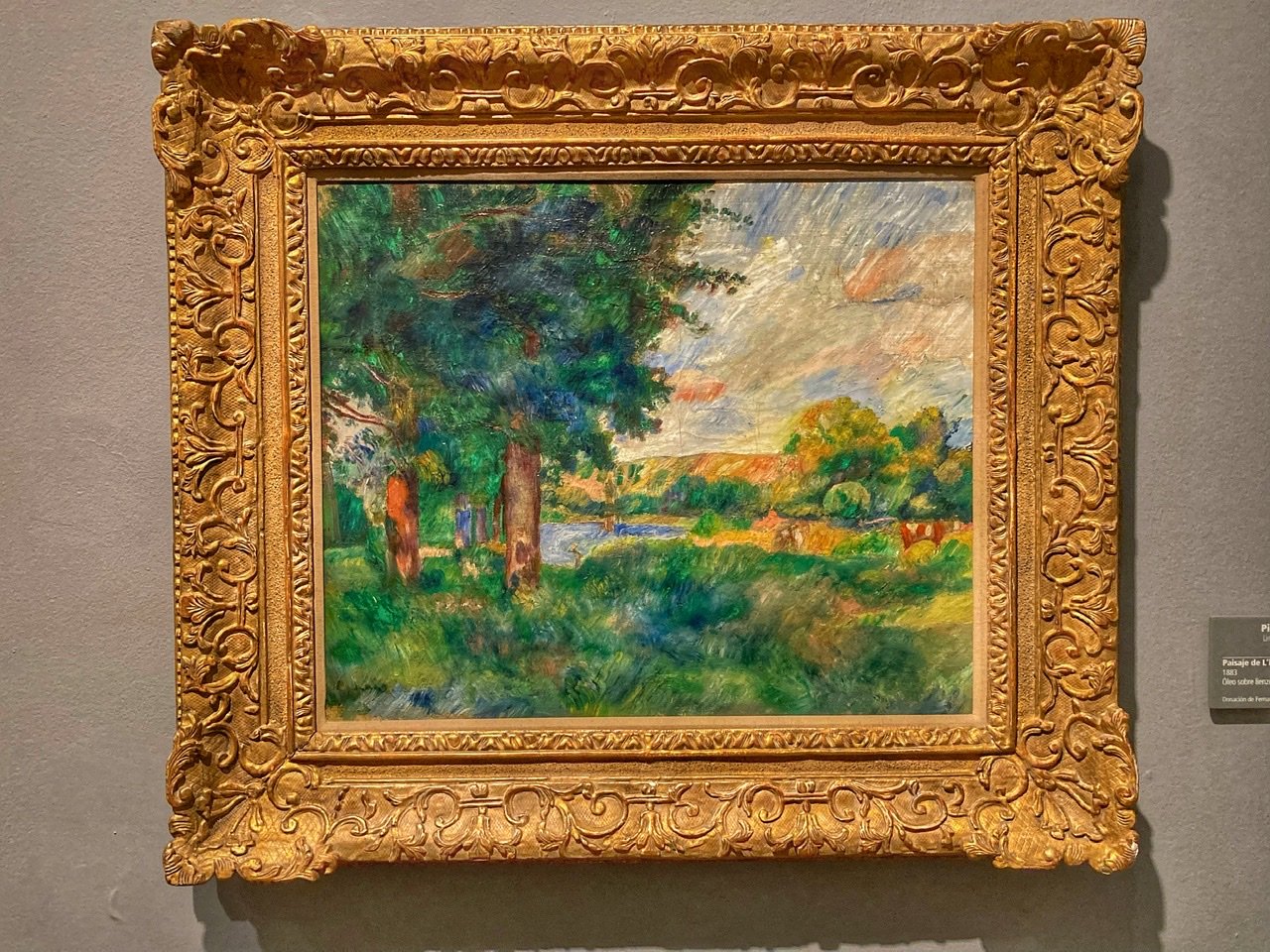
Such as “Bust of a Woman” by Salvador Dali, or no mistaking the one on the right is by Pierre-Augusta Renoir
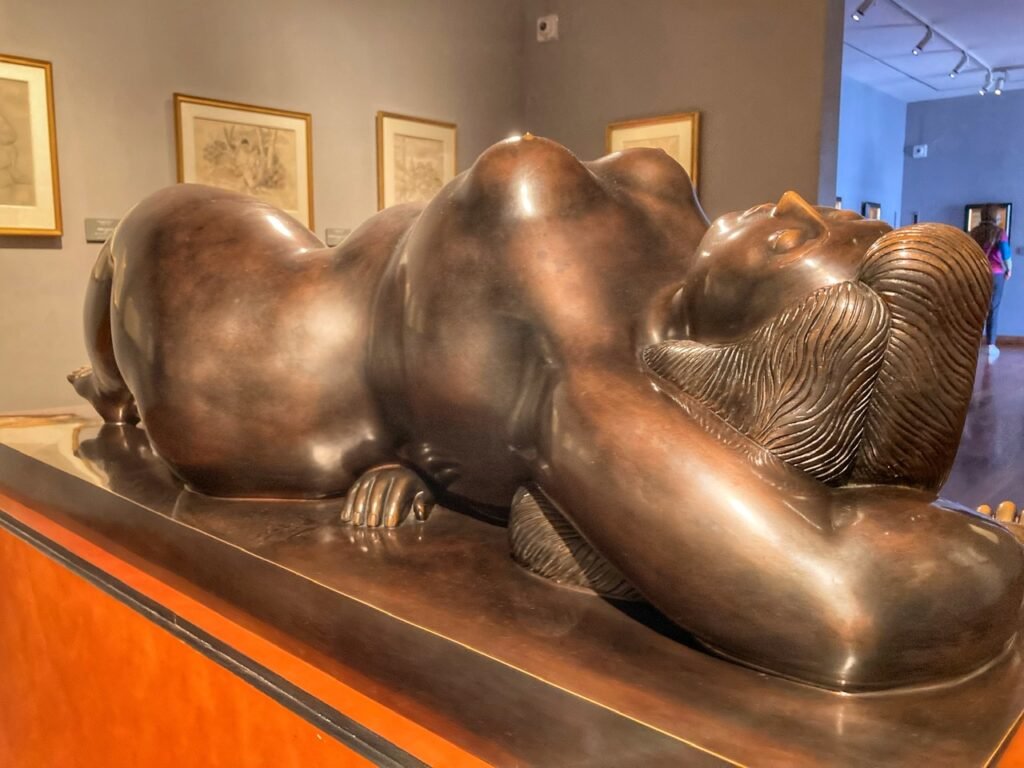
How’d that lady creep in here?
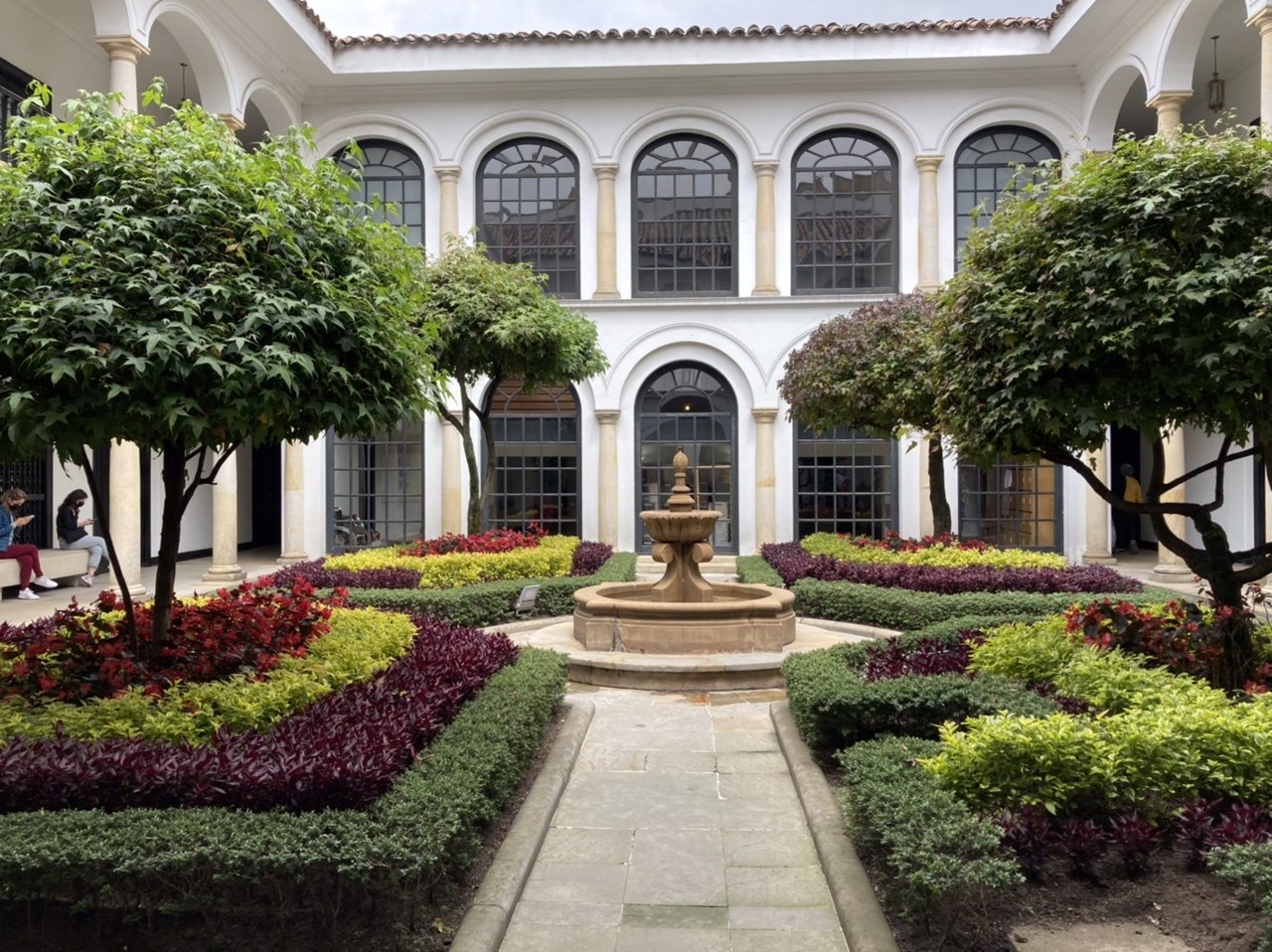
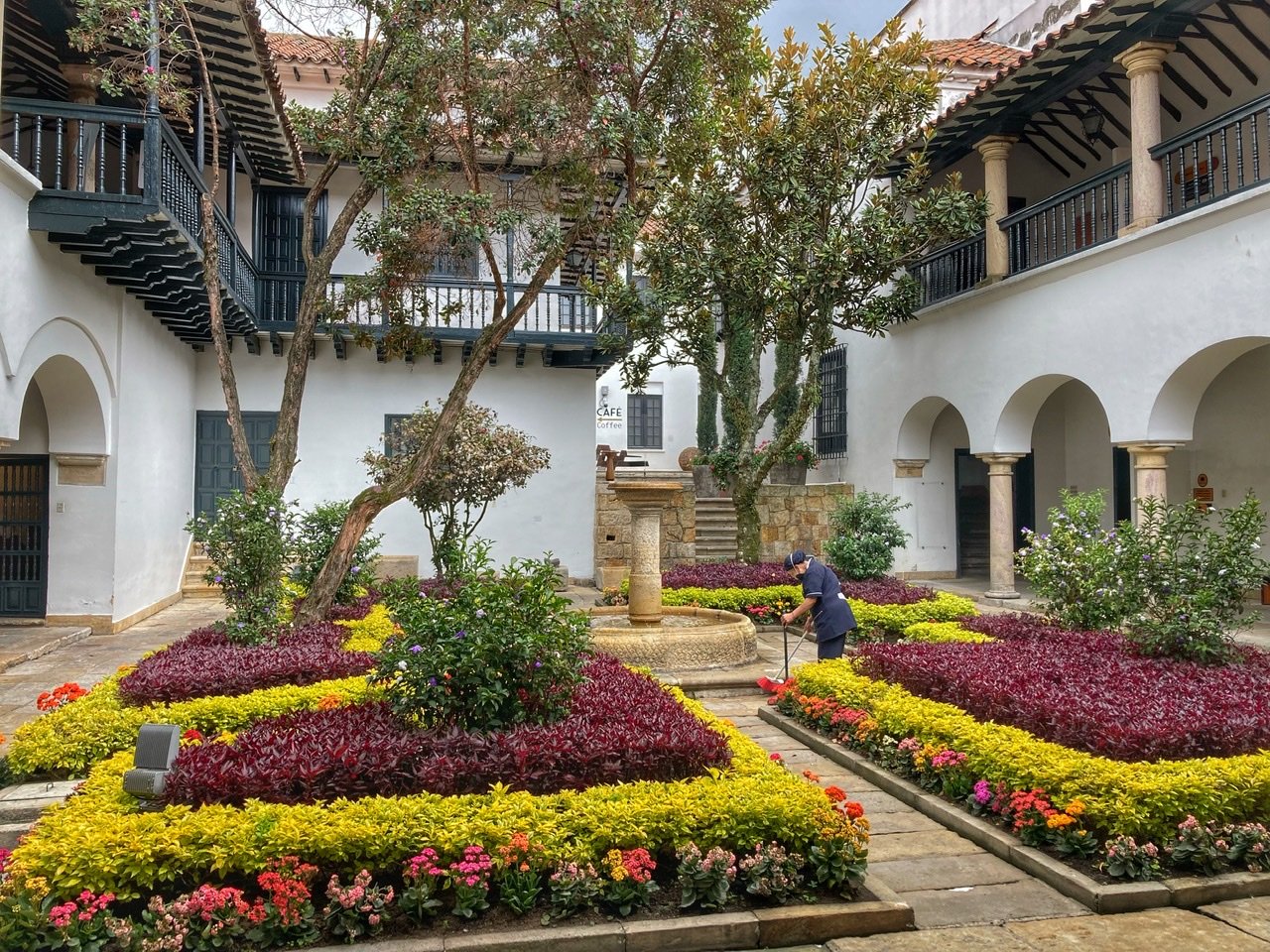
The outside of the museum has lovely grounds. Well worth a visit.
Jardin Botanico Bogota
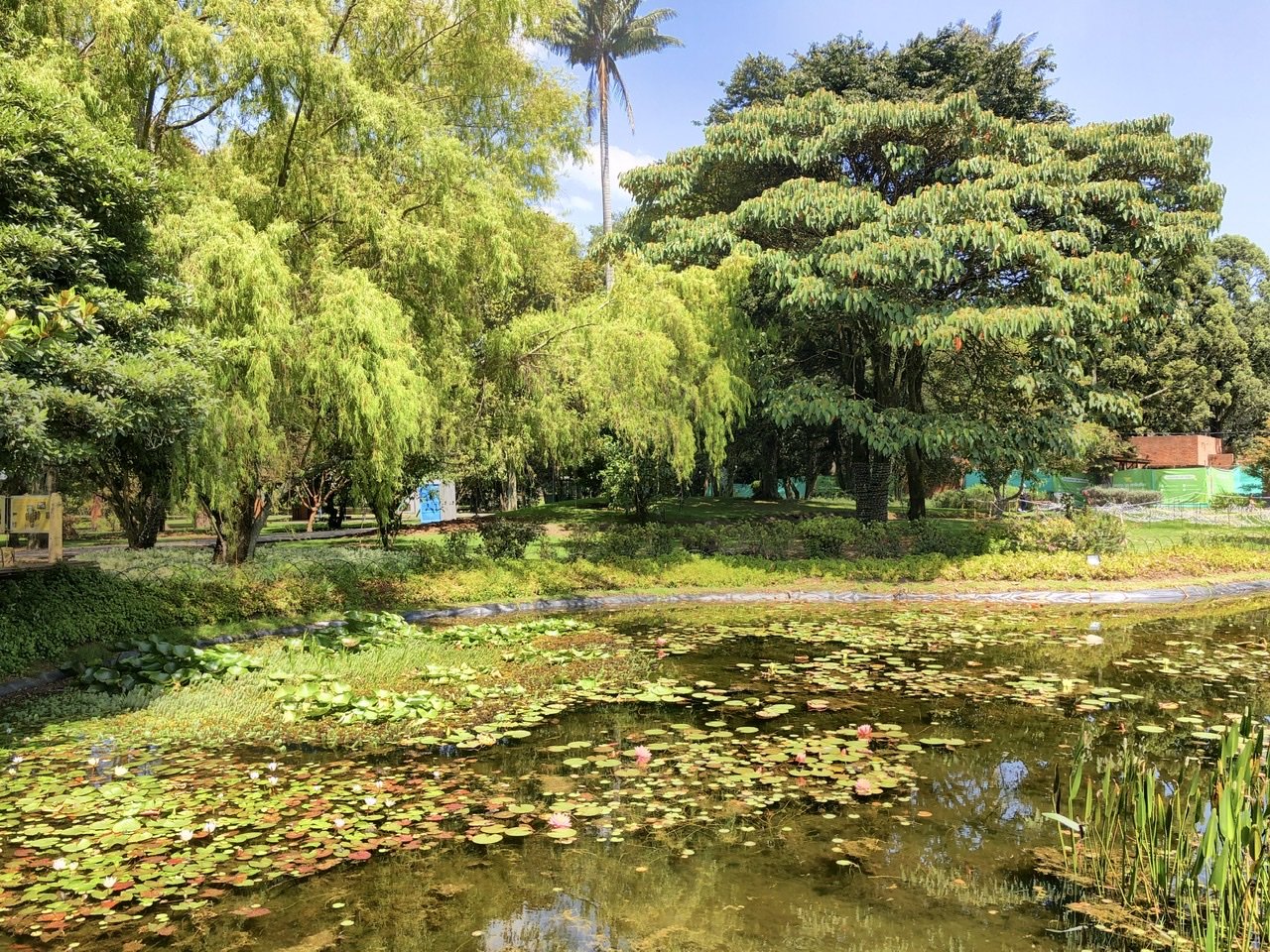
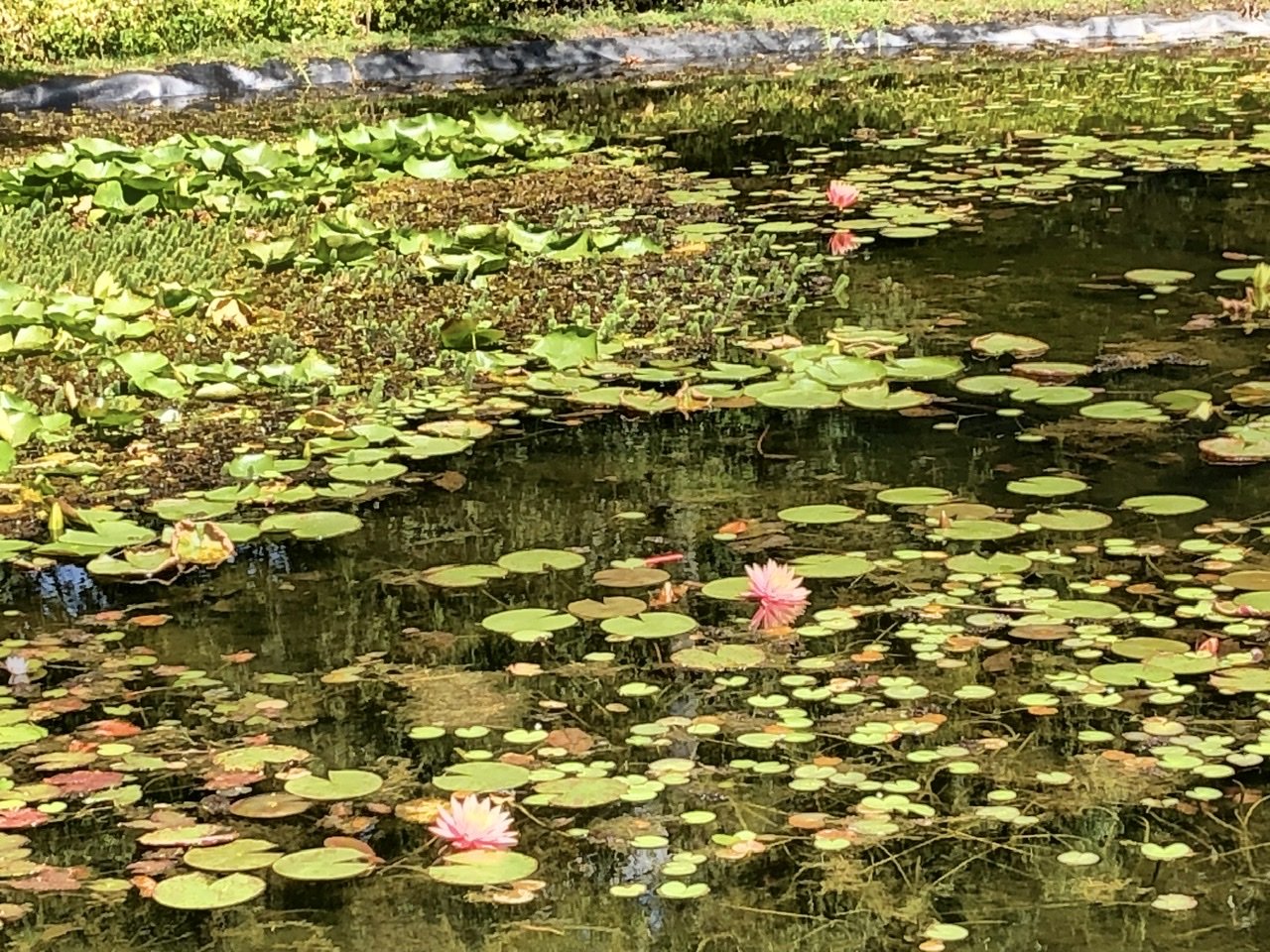
Colombia is one most of the mega diverse countries on earth, holding 10% of the planets’ species. It ranks first in bird and orchid species’ varieties and second in plants, butterflies, freshwater fishes and amphibians. This is why spending some time relaxing and strolling at Botanical Garden while in Bogota is an absolute must! Well worth the $5000 pesos to enter ($1.25.) Near, the entrance, what a dreamy little pond packed with pink water lilies.
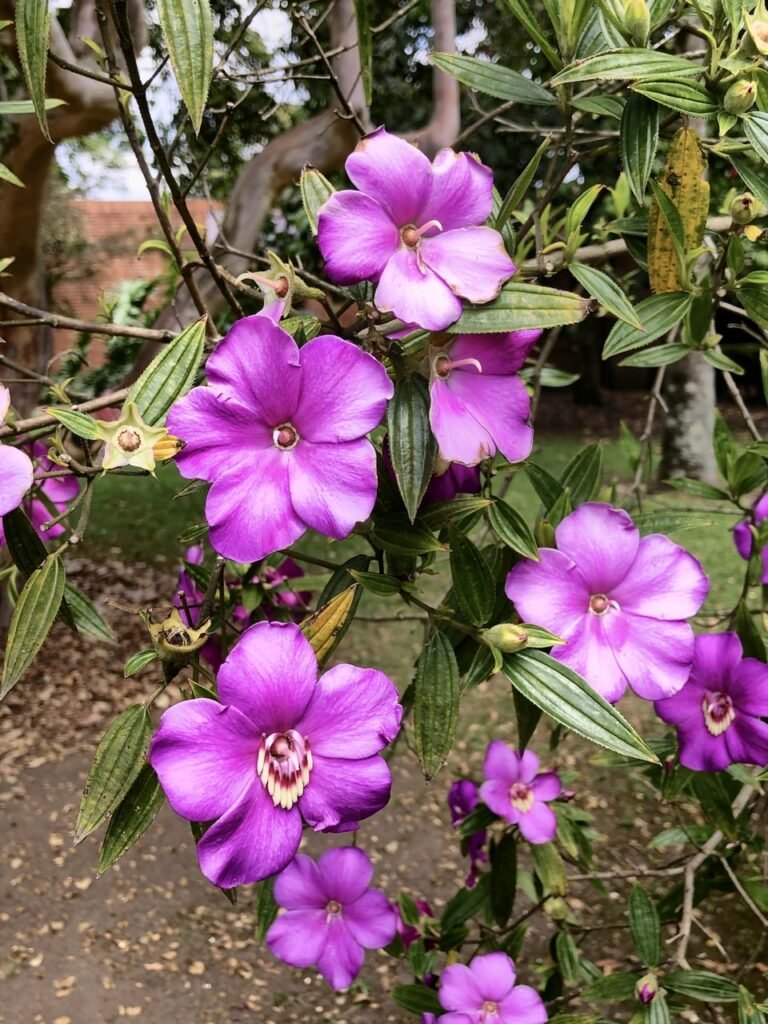
Native to Brazil, the Tibouchina is also called the Princess Flower. (These are all identified by an app we have called Leaf Snap so take our labels with a grain of salt!)
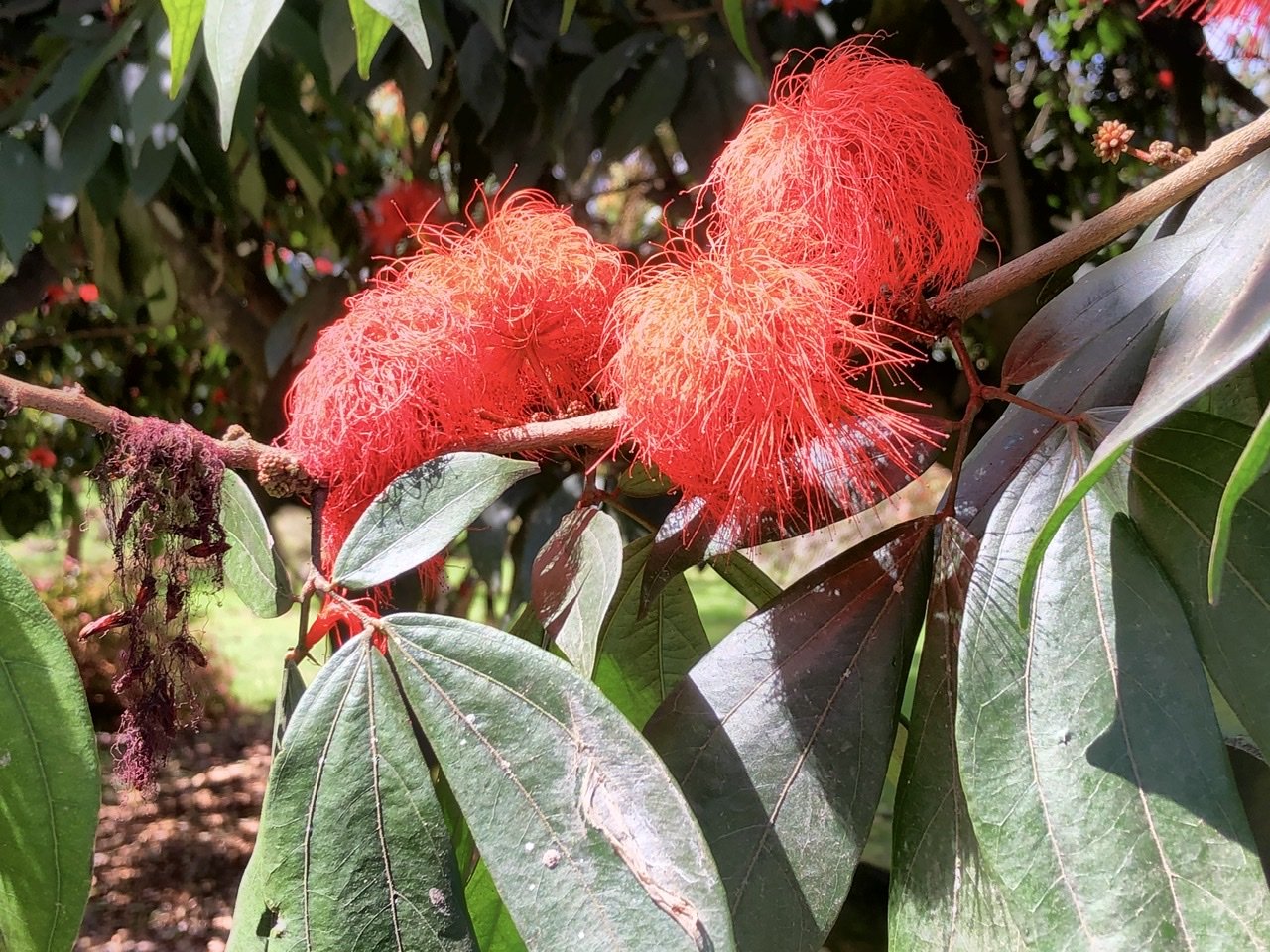
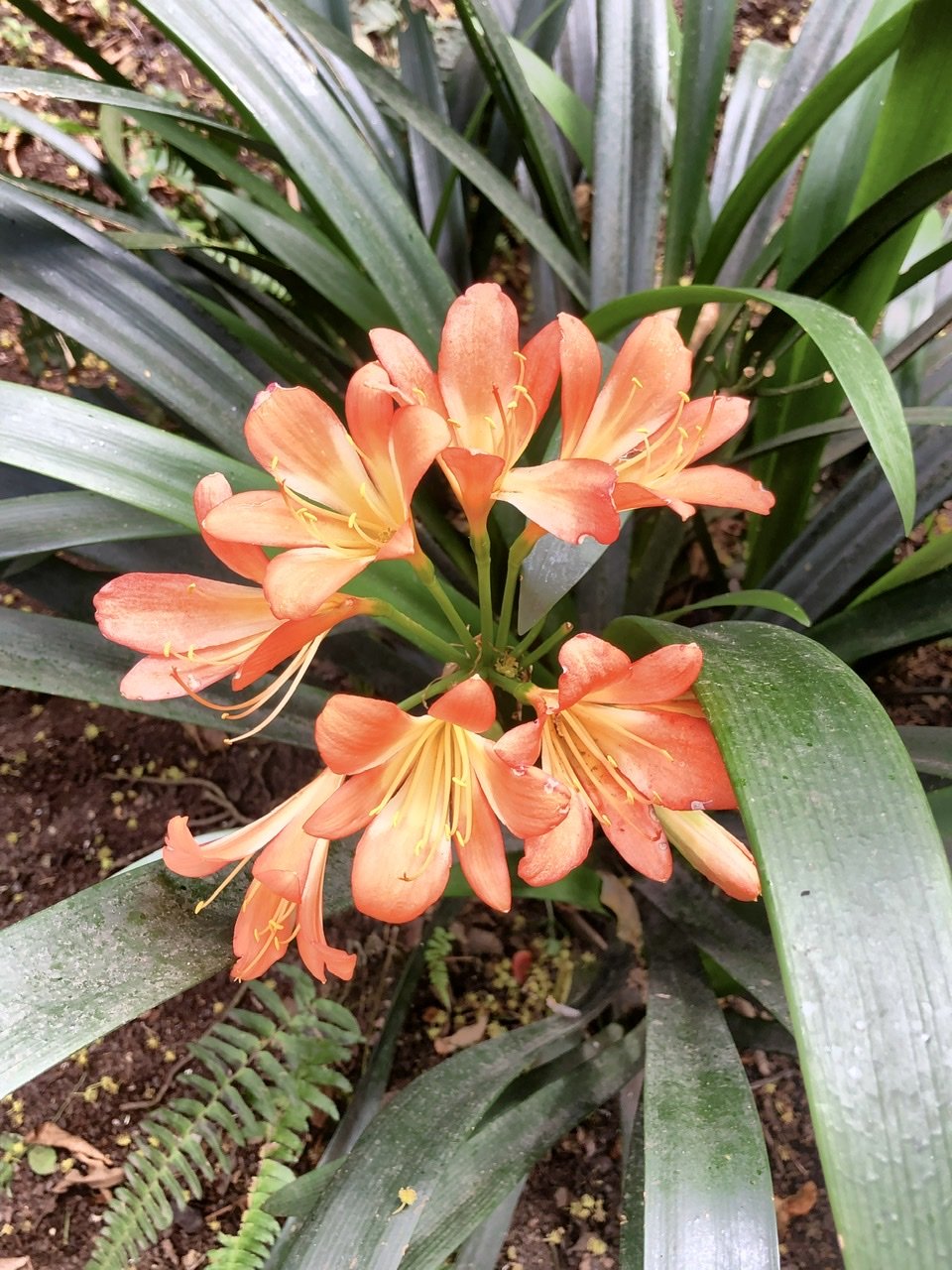
The Calliandra or Powder Puff, and orange bush lily

The landscaping of the massive garden was unbelievably tranquil.
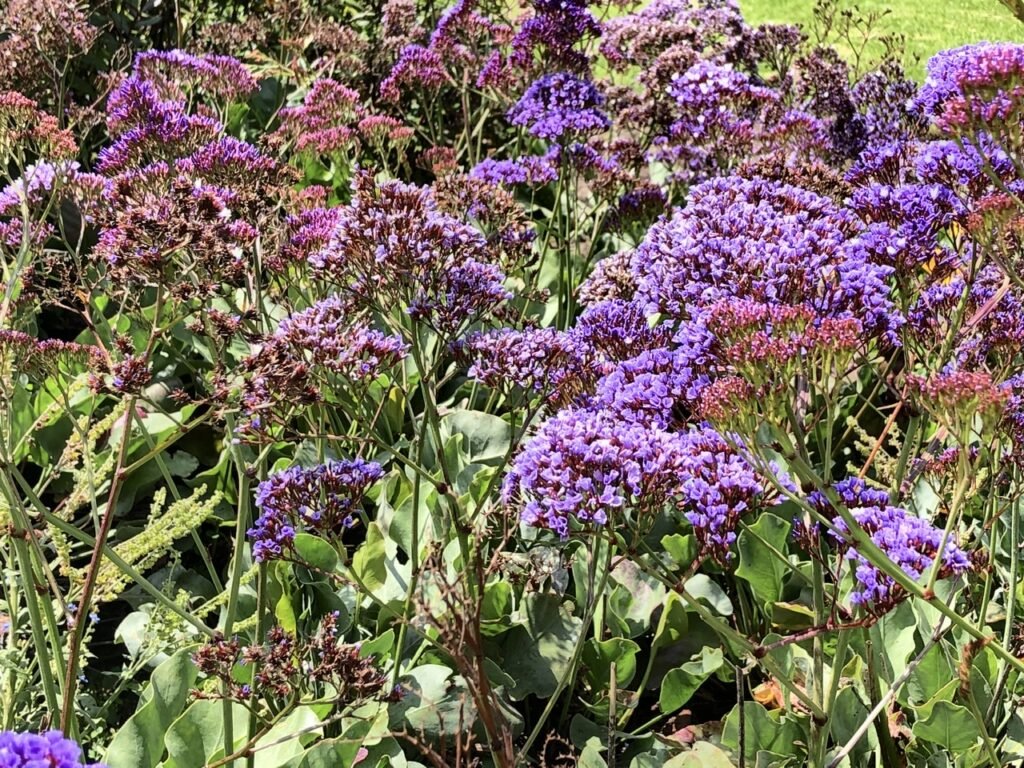
Sea lavender
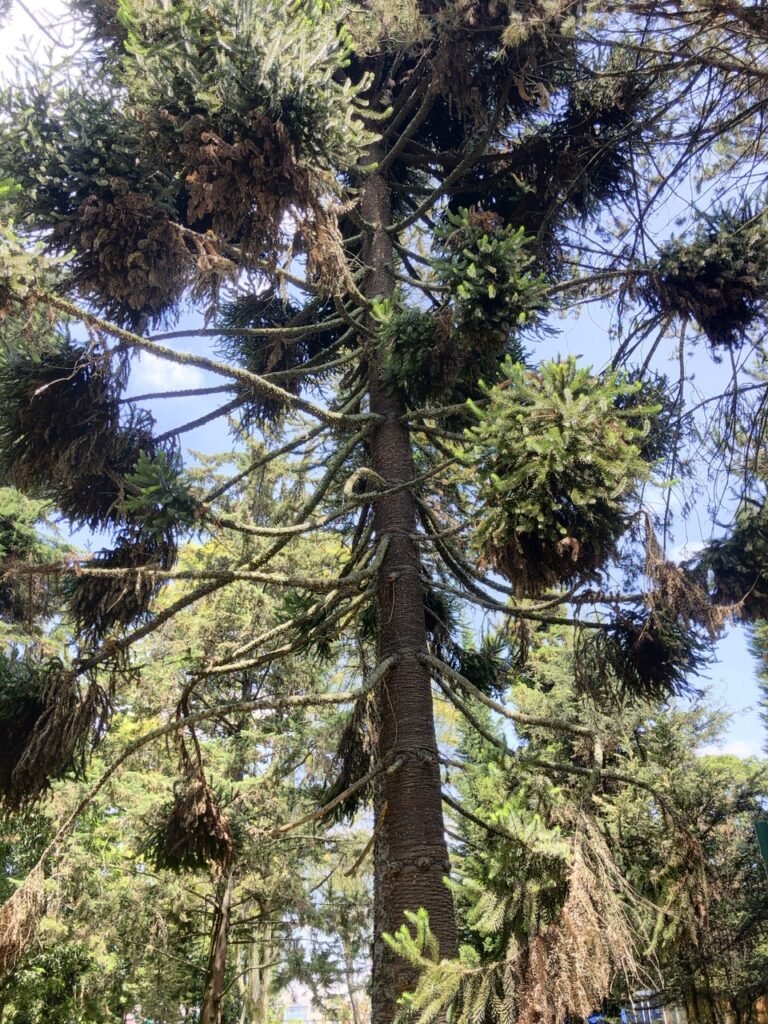
Looks like a form of Monkey Puzzle tree but with a variation that looks like poodle tails.
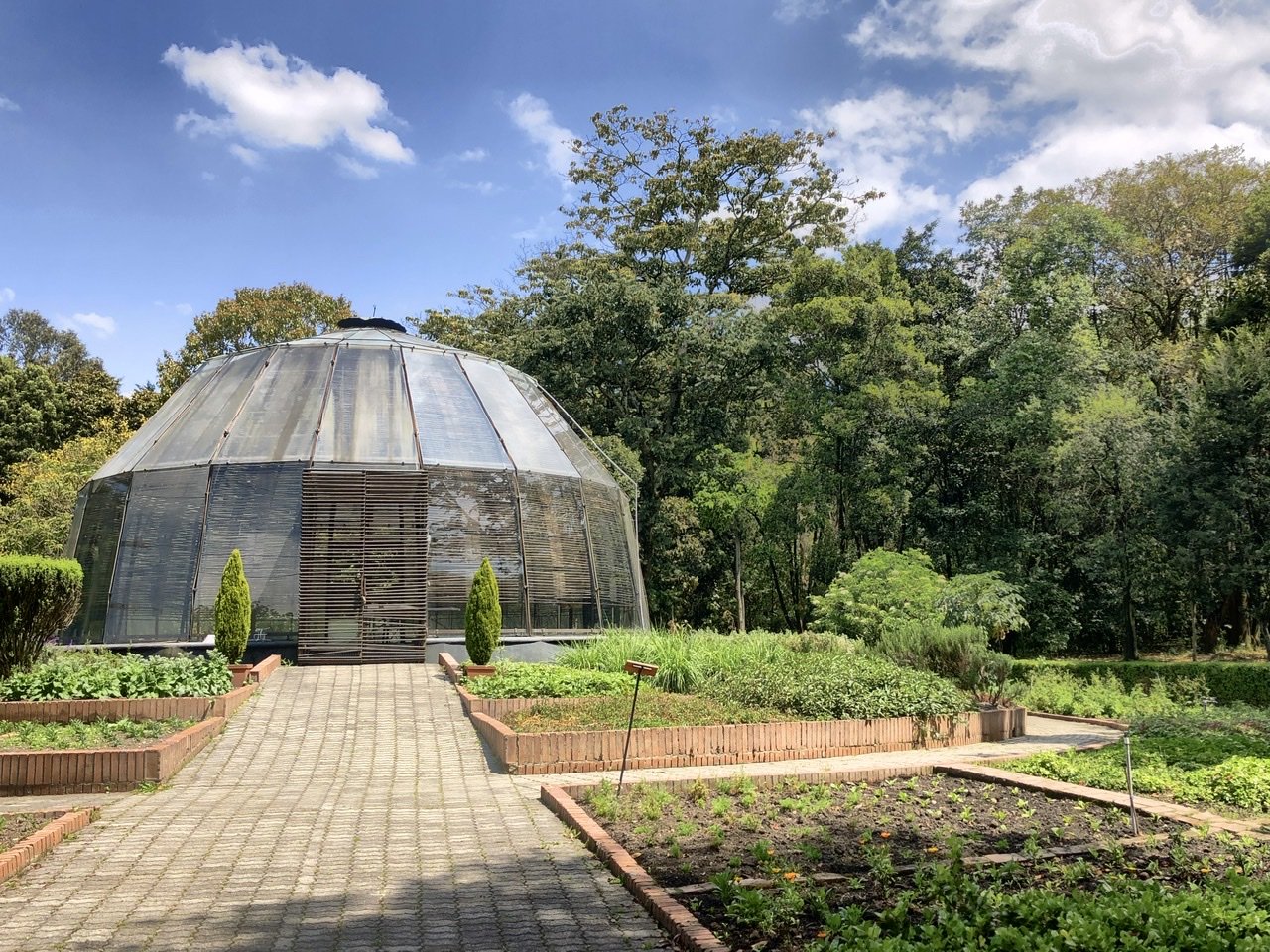

The herb garden was packed with every type you could ever want to grow! We think at right is an Indian Borage plant used to treat Hindi, this plant has been traditionally used as a remedy for common ailments like cold, flu, fever and respiratory-related issues, particularly in India.

Oooo! I know it without Leaf Snap. That’d be an artichoke!
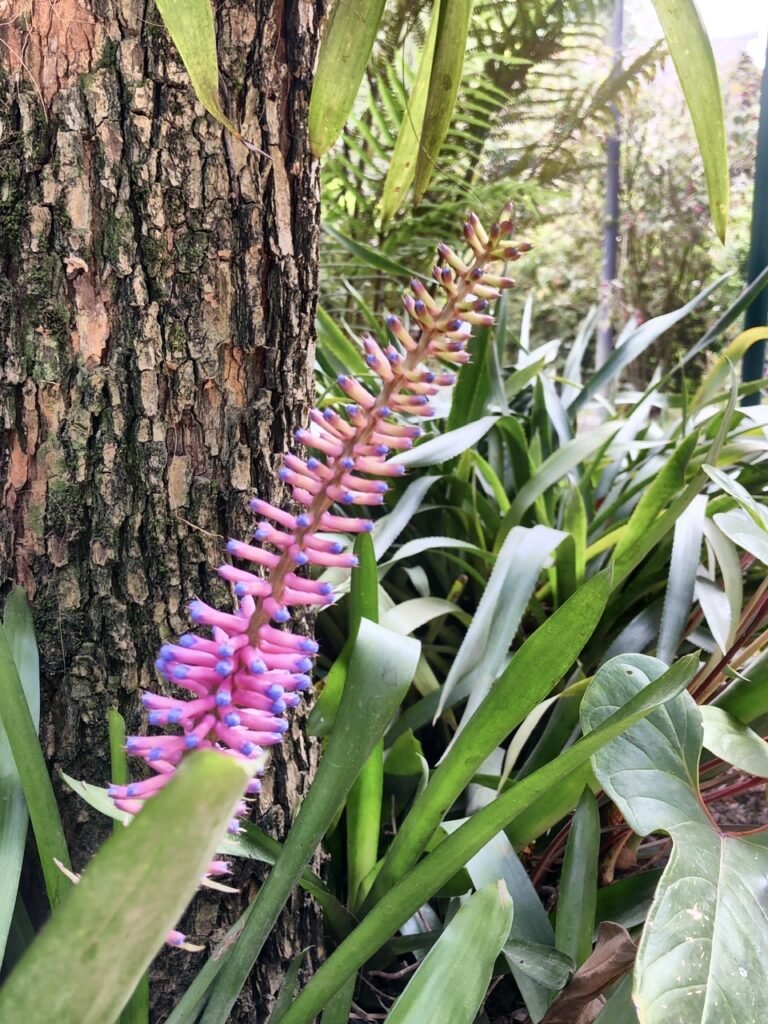
Native to southern Brazil, this ornamental plant is called Aechmea gamosepala. Mmmm. Ok…
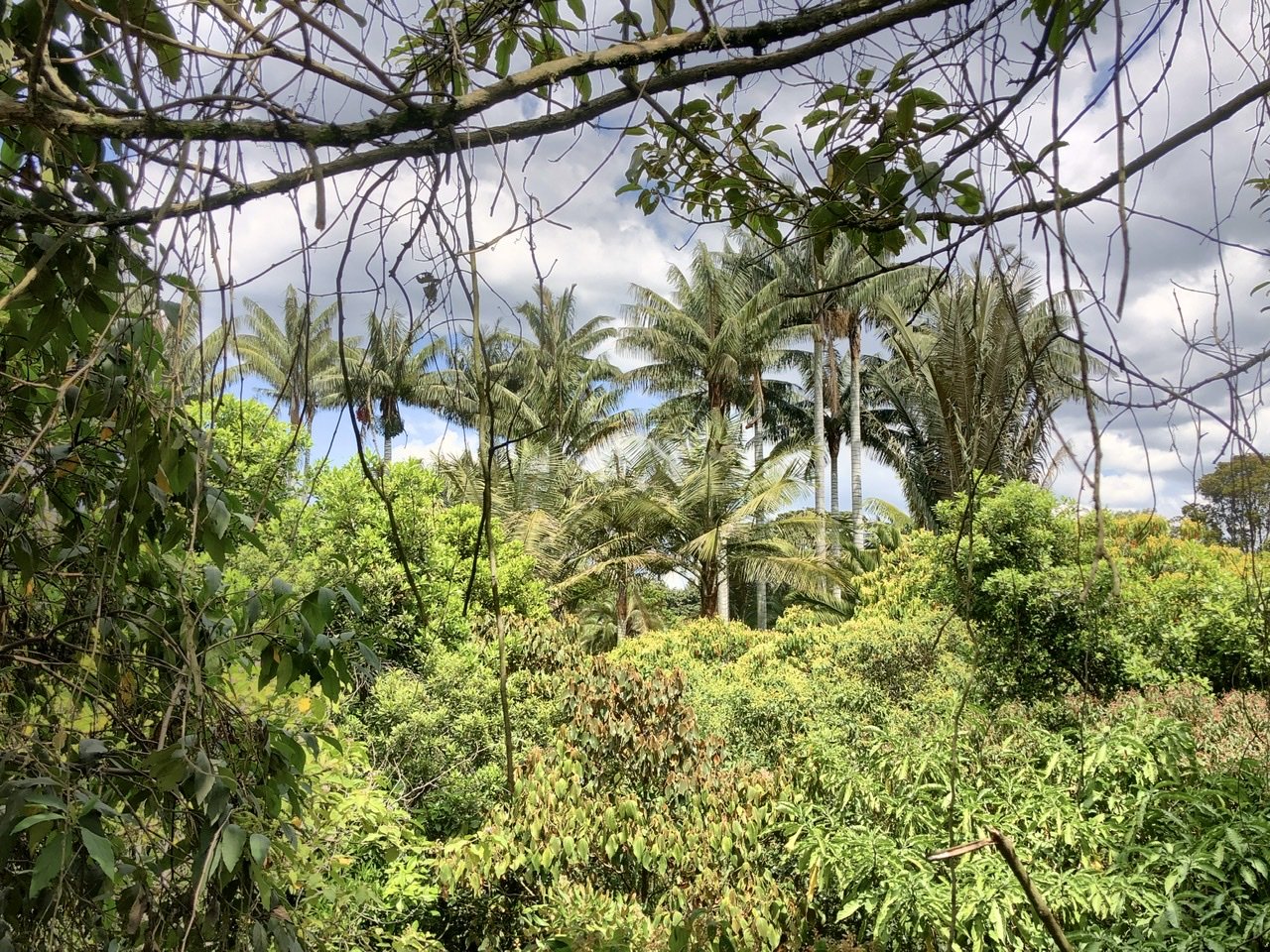
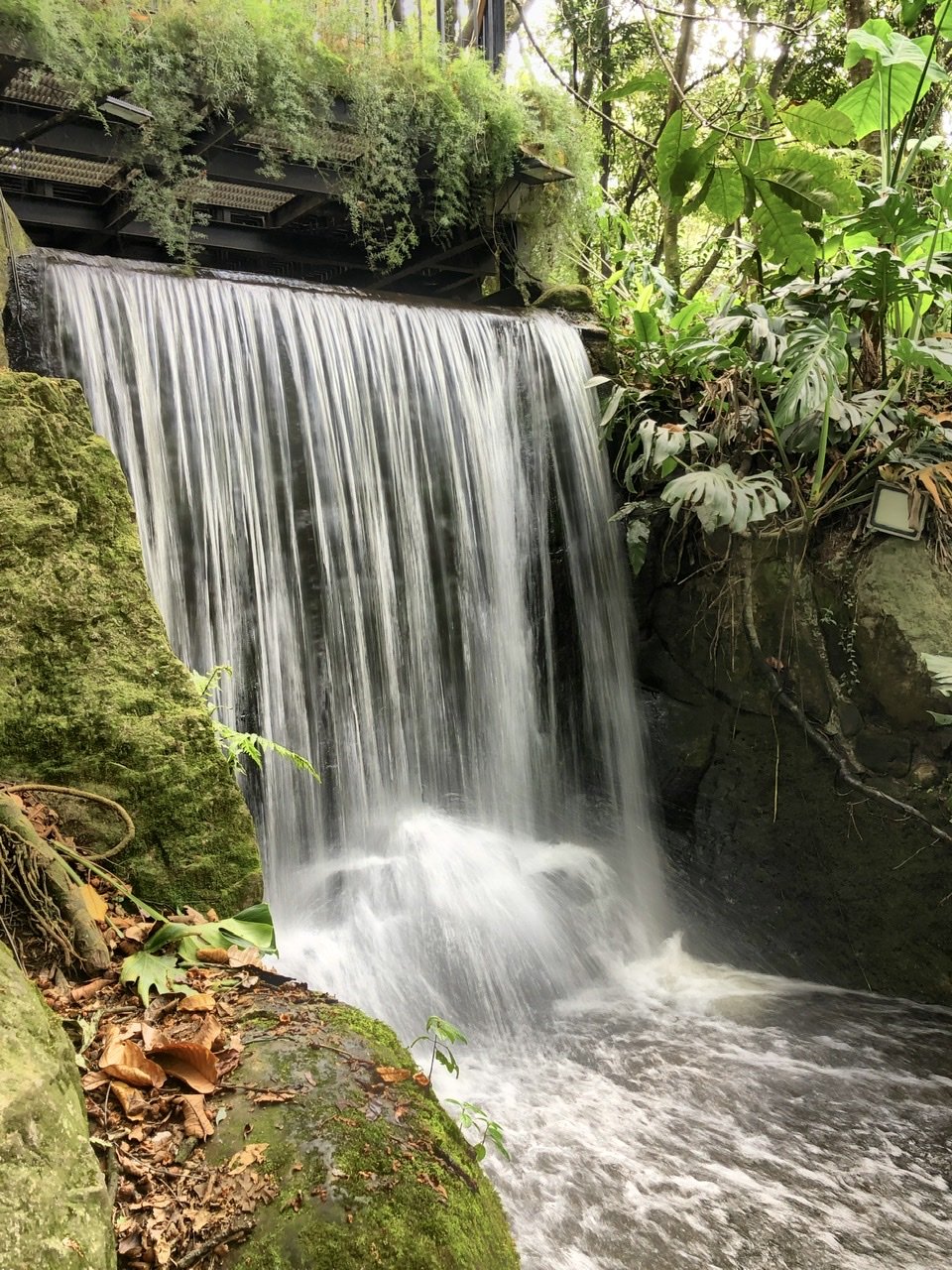
Peeking through the treetops and a tranquil waterfall inside the garden.
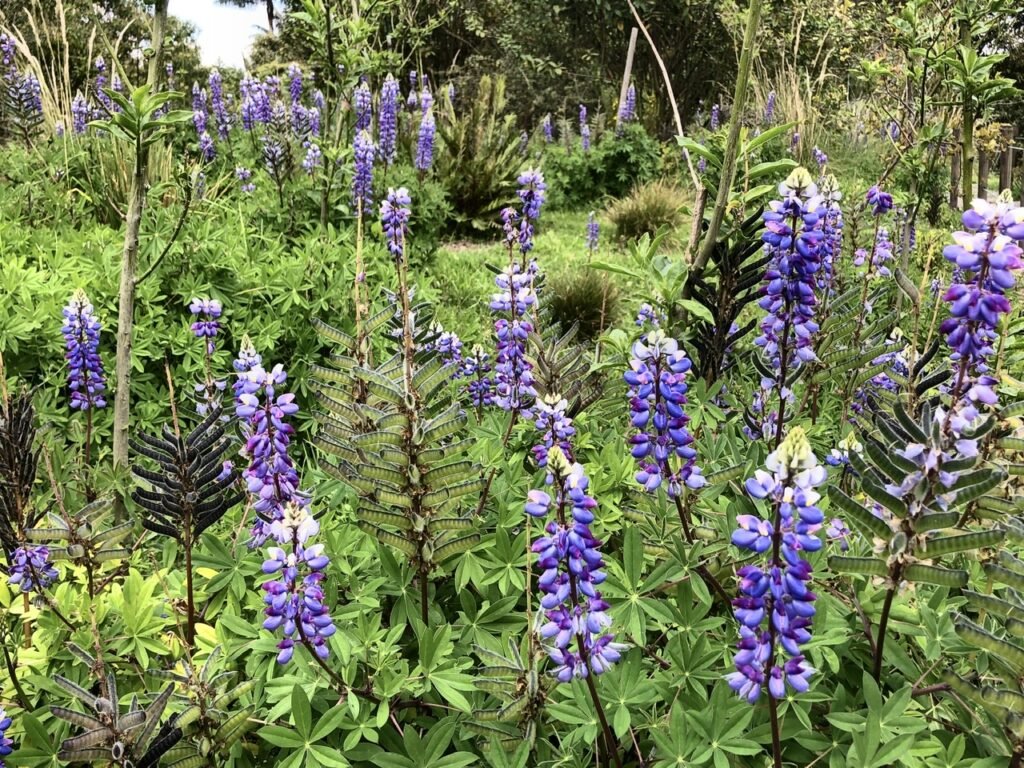
Oooo! We certainly know this one too! It’s a large leafed lupine grown all over the Pacific Northwest. But why is it growing here? This is a mystery to us? ?
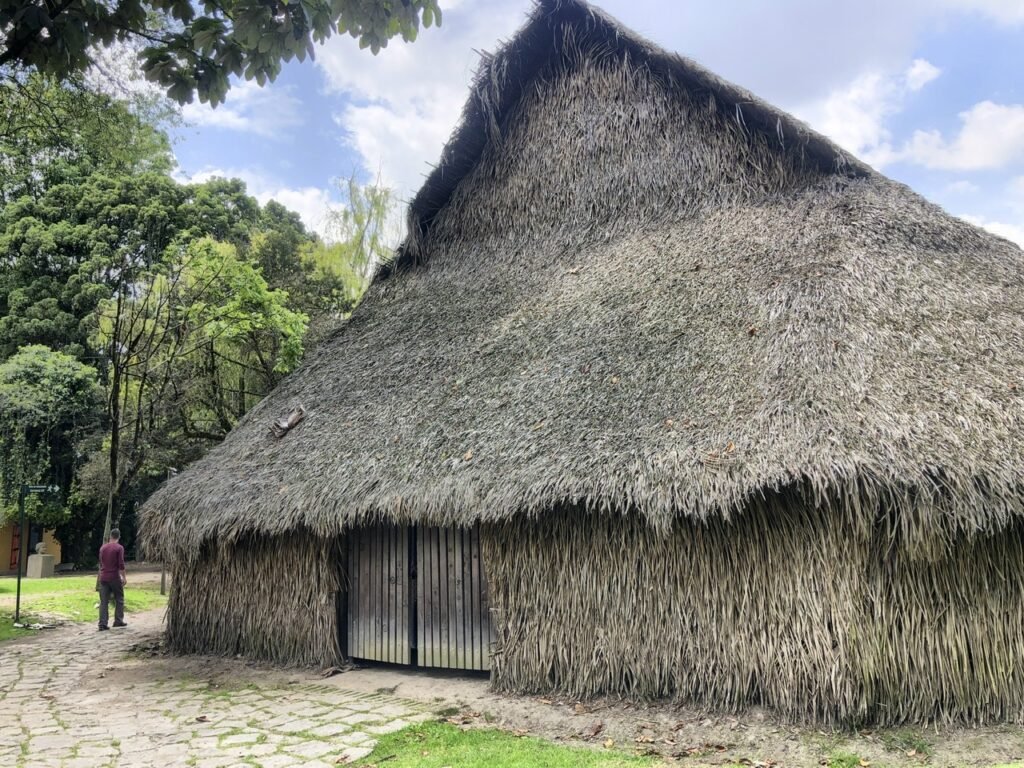
This represents a traditional Amazonian house, which of course covers a whopping third of Colombia’s landmass. (The Amazon not the house ?)
La Macarena Neighborhood

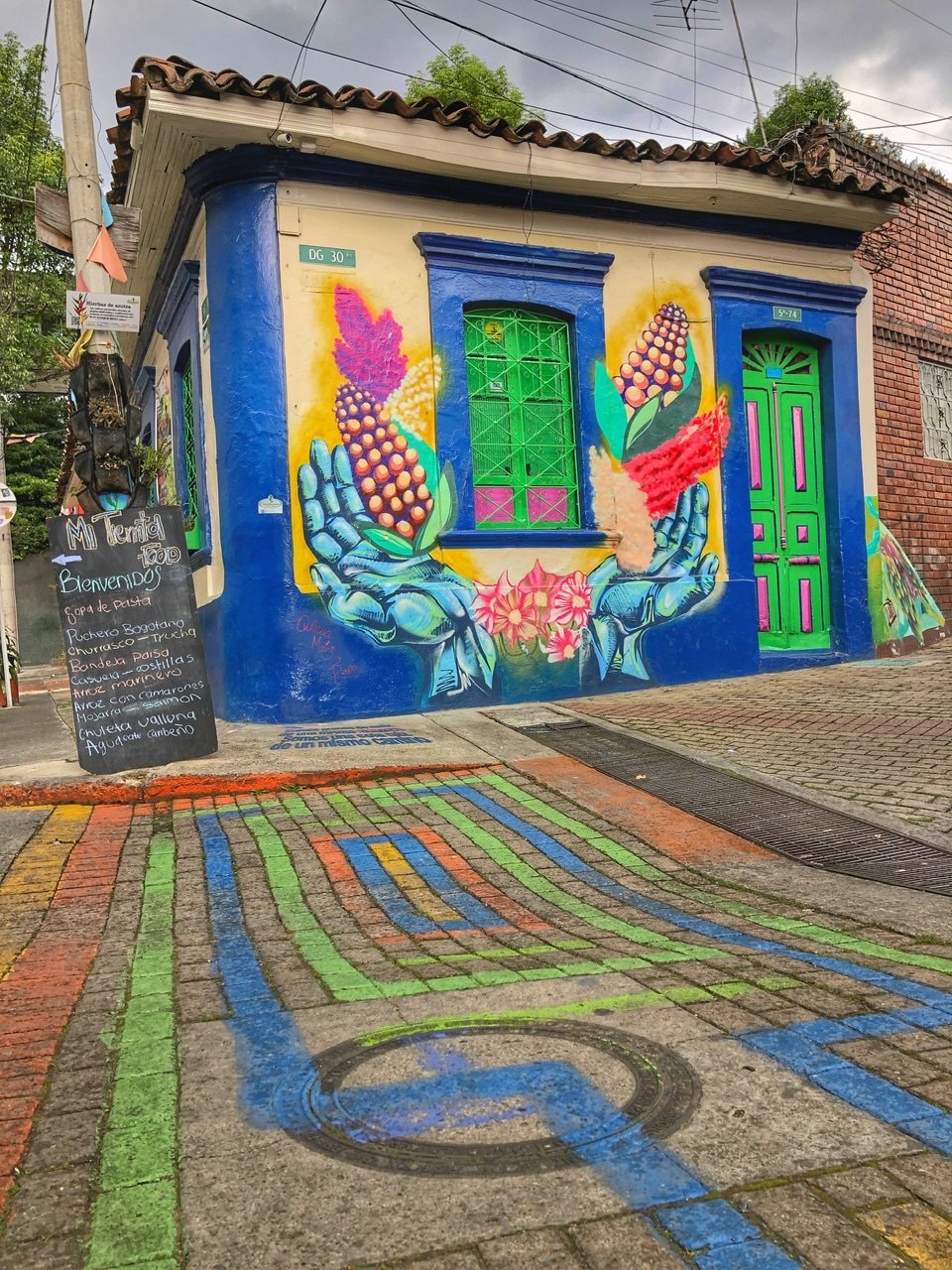
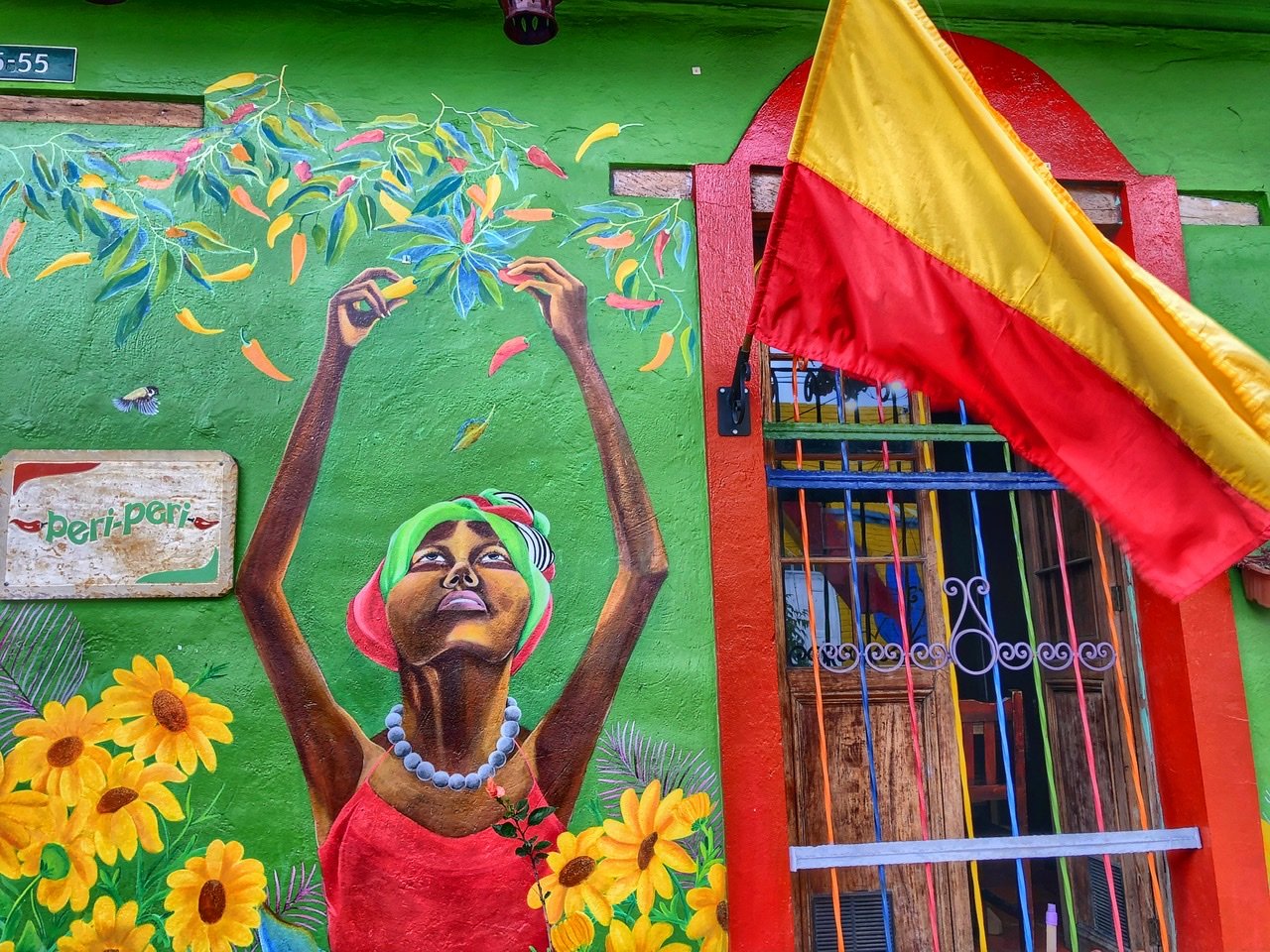

The La Macarena neighborhood is arguably a neighborhood in Bogota loaded with the ABC’s….Artsy, Bohemian, Colorful, and wow did we love it! Also, we loved it due to the fact that it’s namesake song was nowhere to be heard.
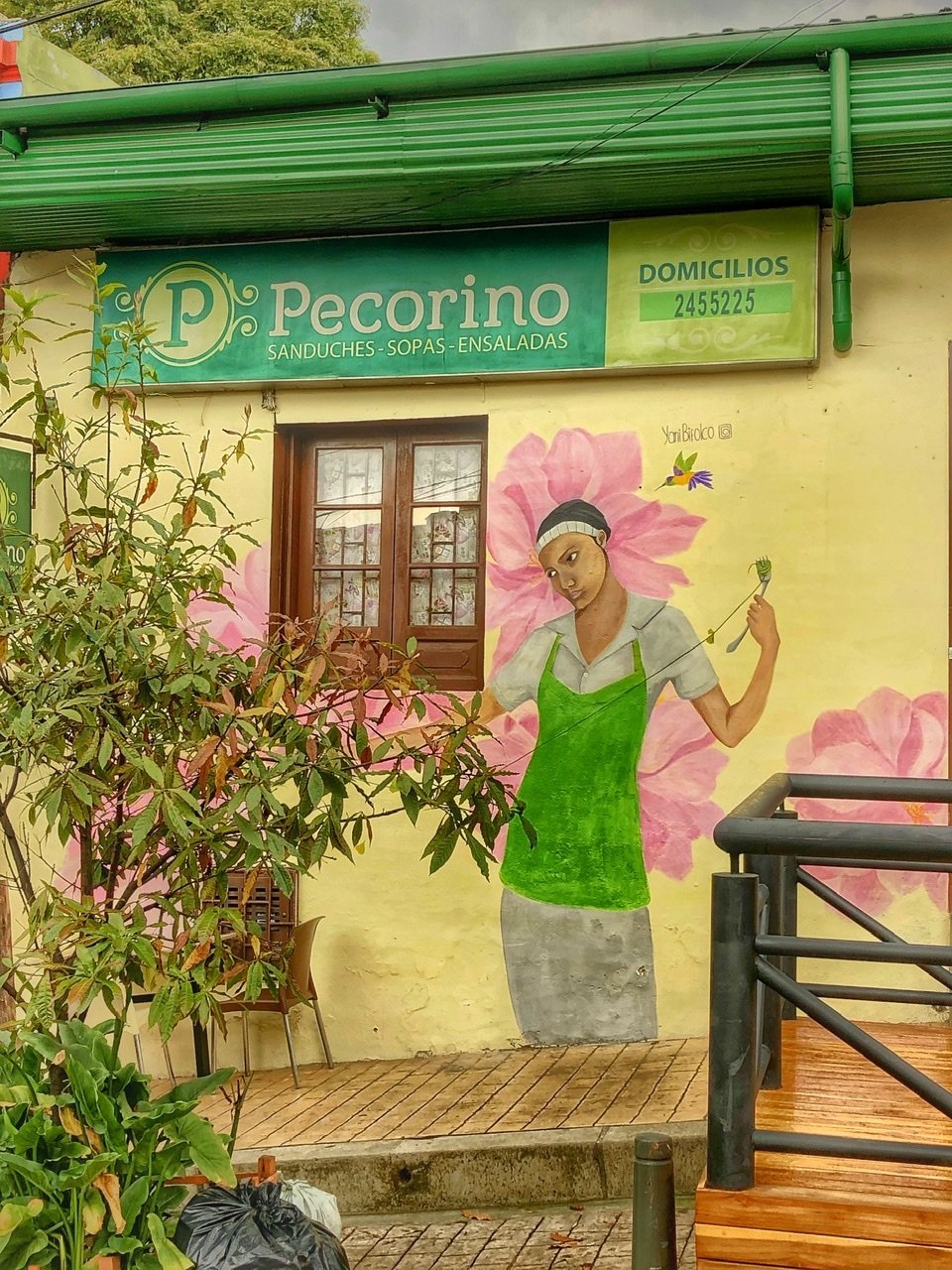
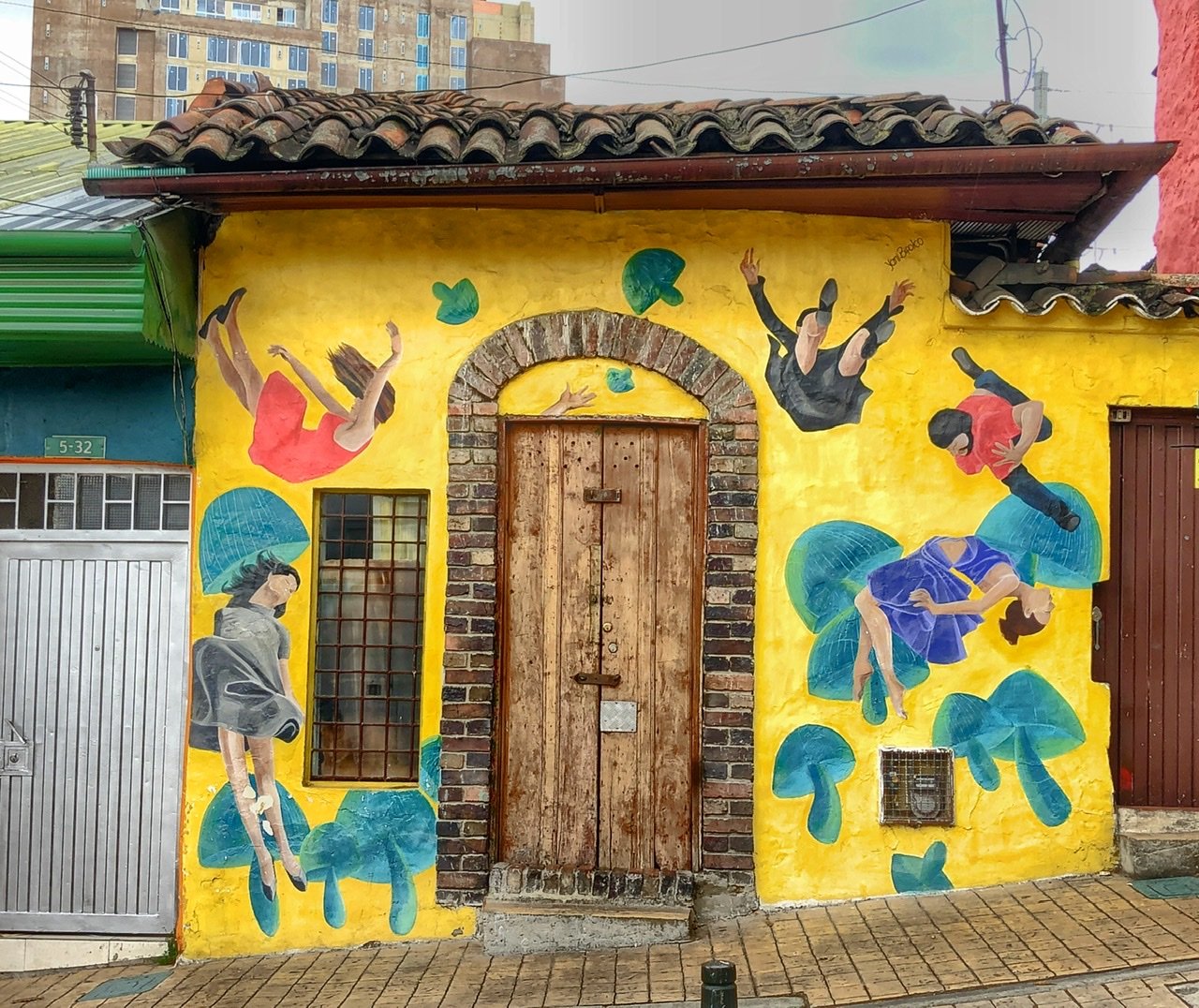
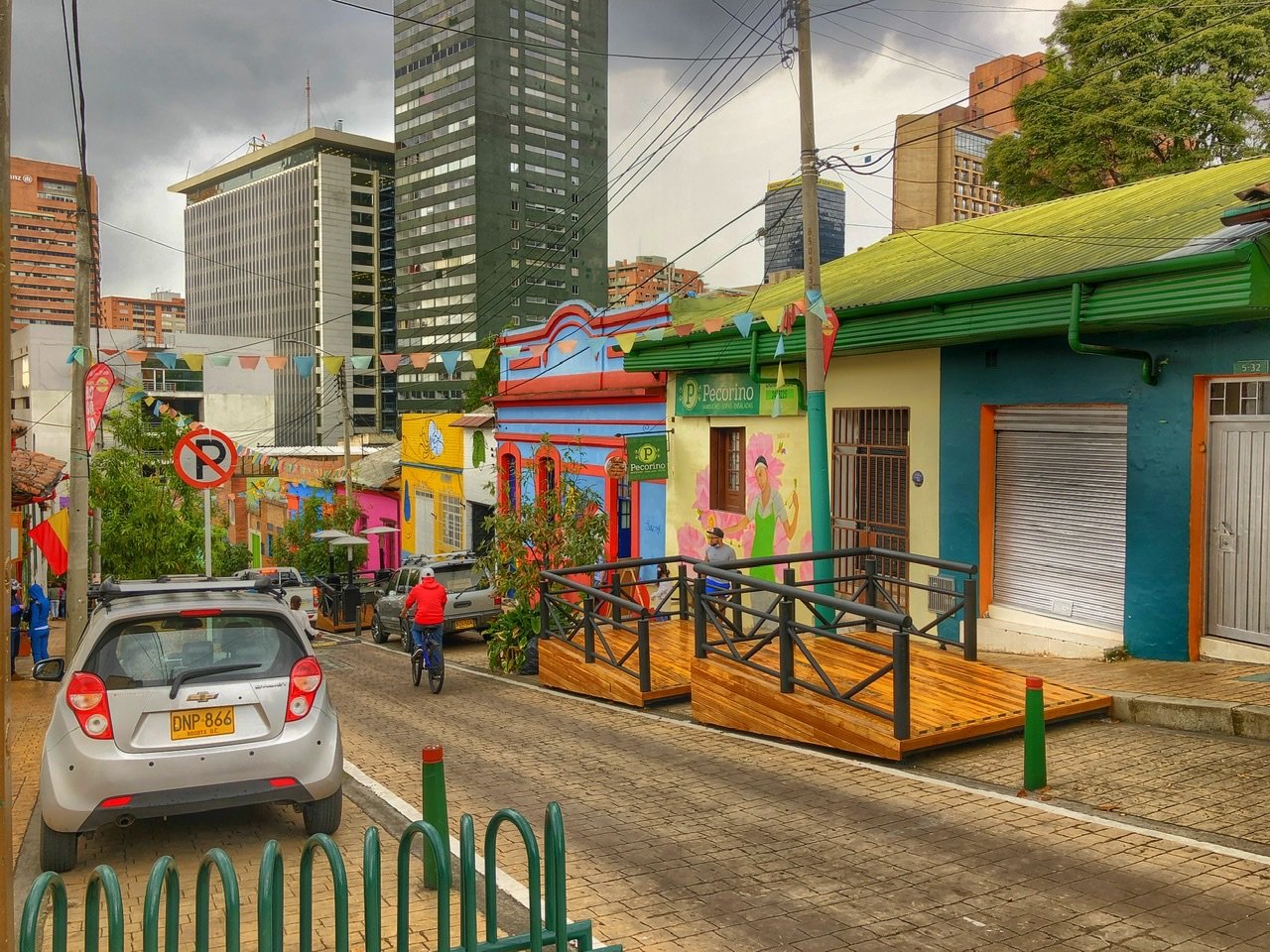
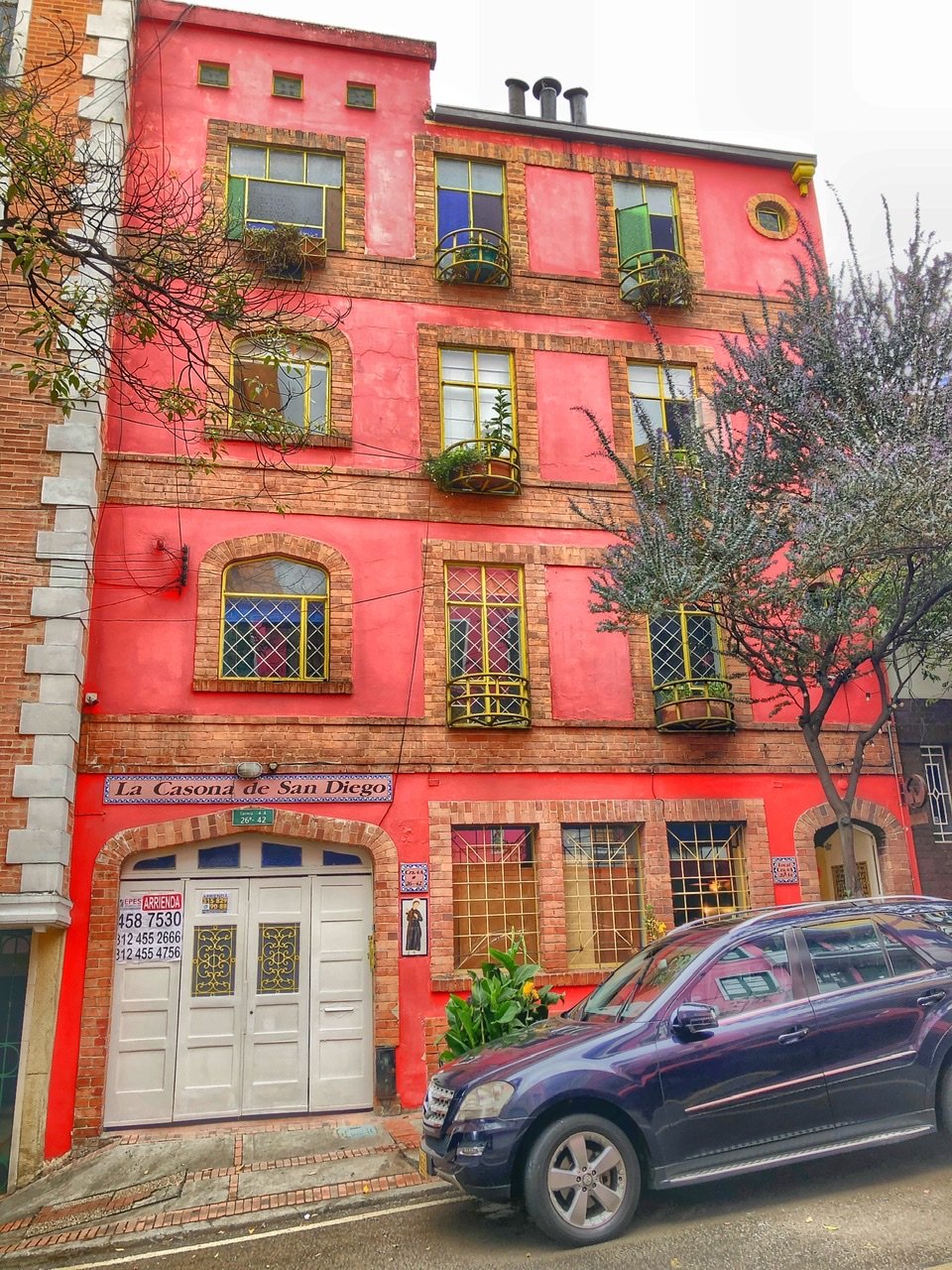
This fun and funky neighborhood was built in the 1930’s next to a very famous bullring at the foot of the famous Monserrate.
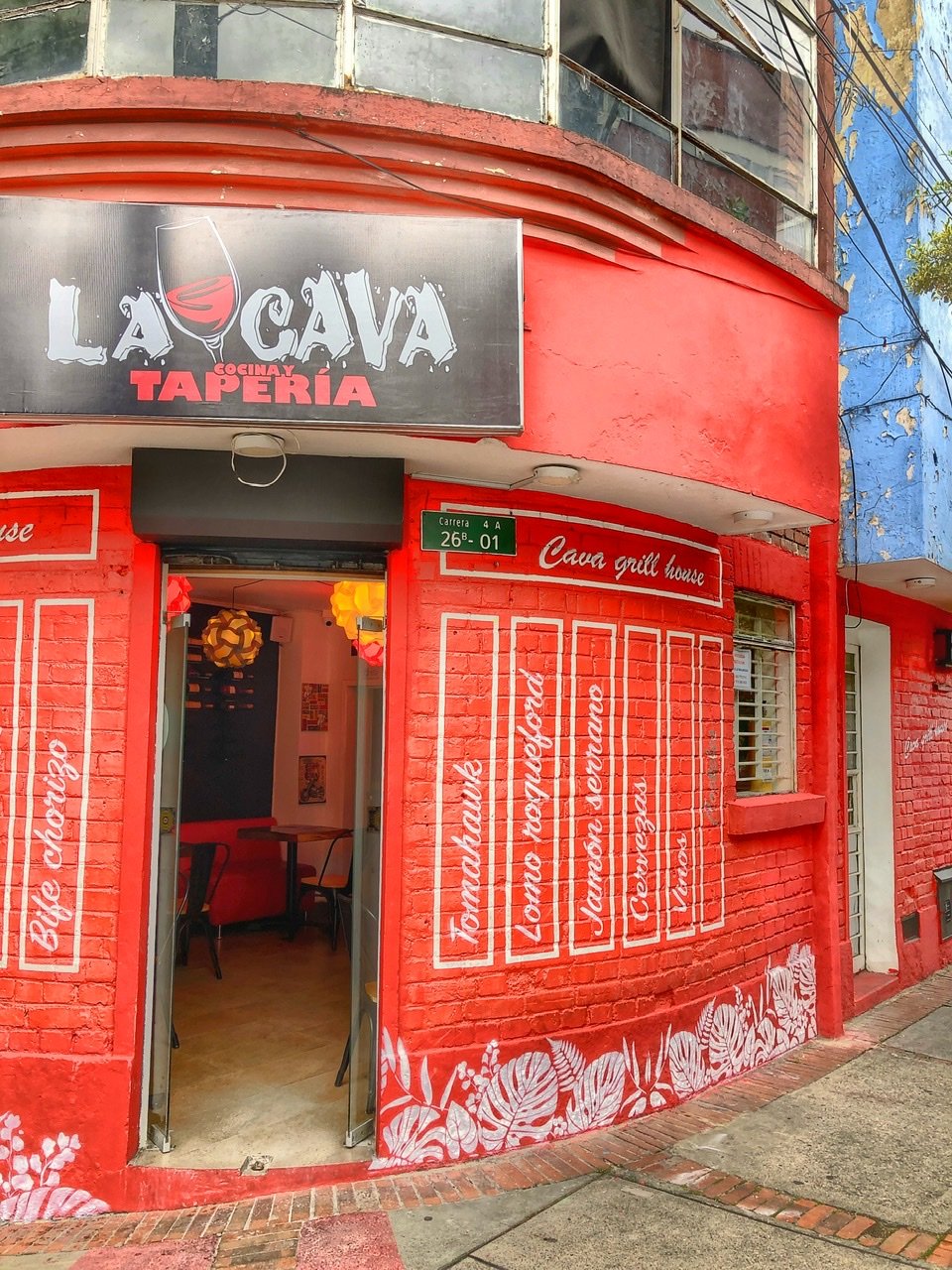
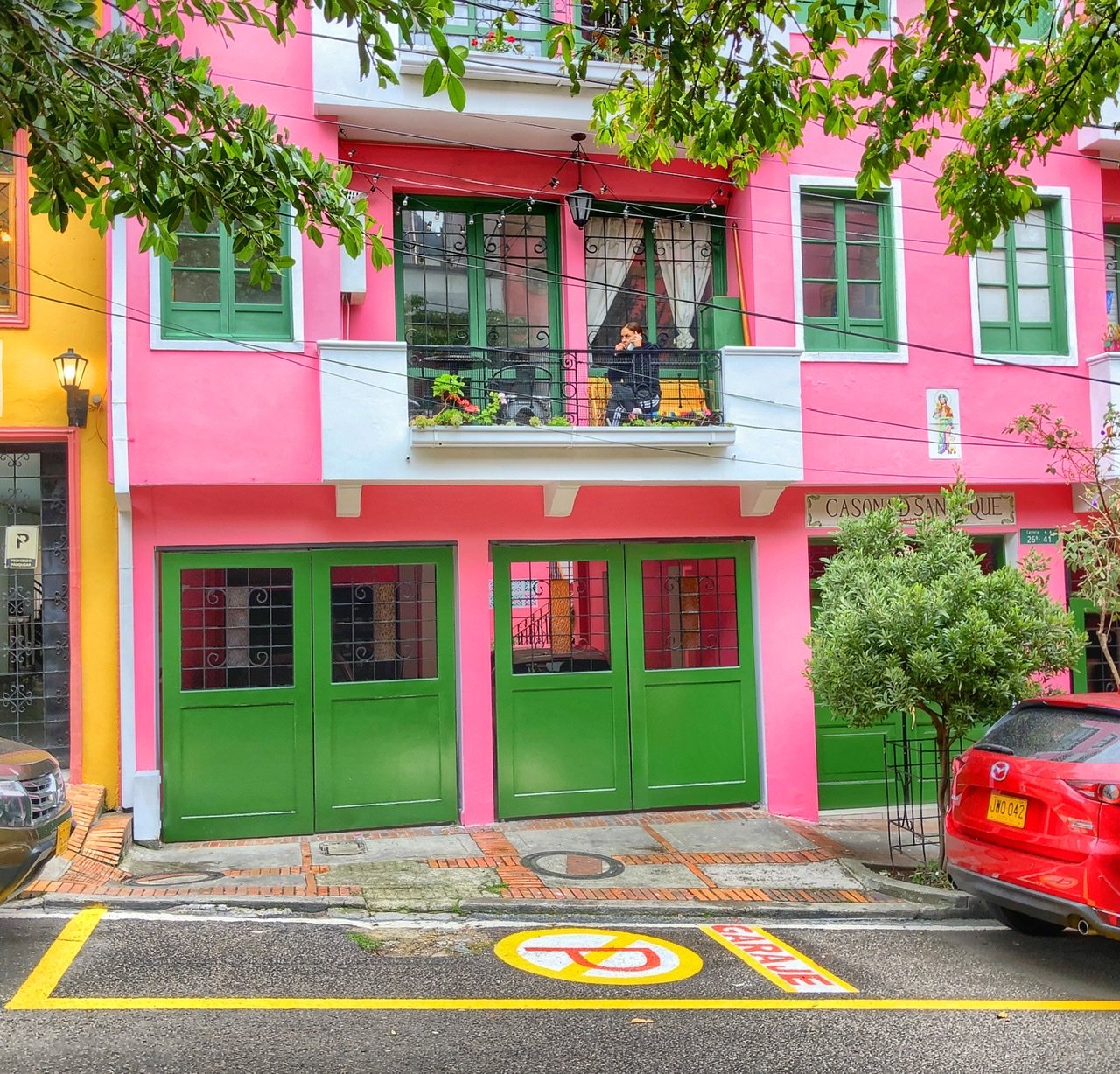
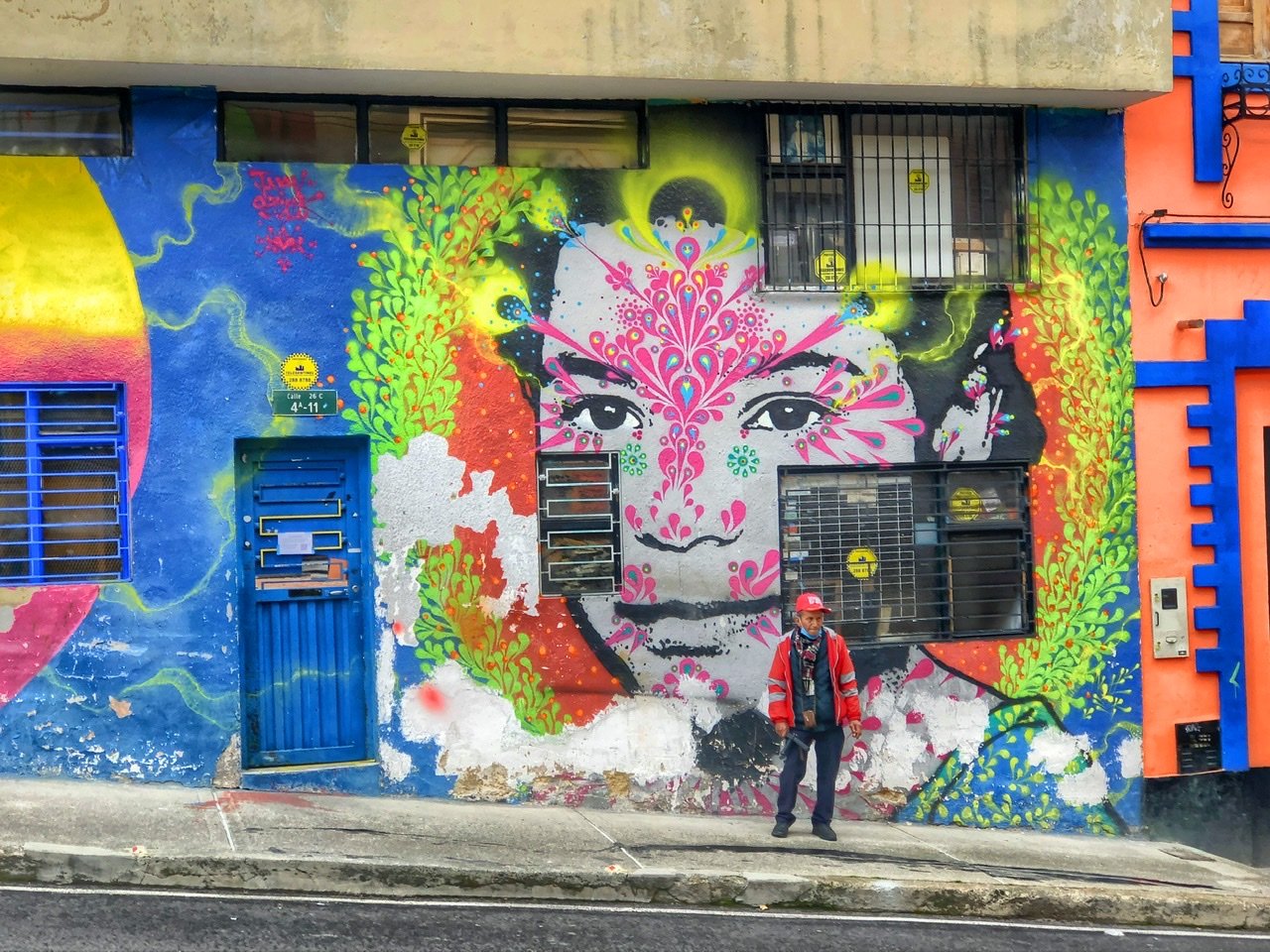

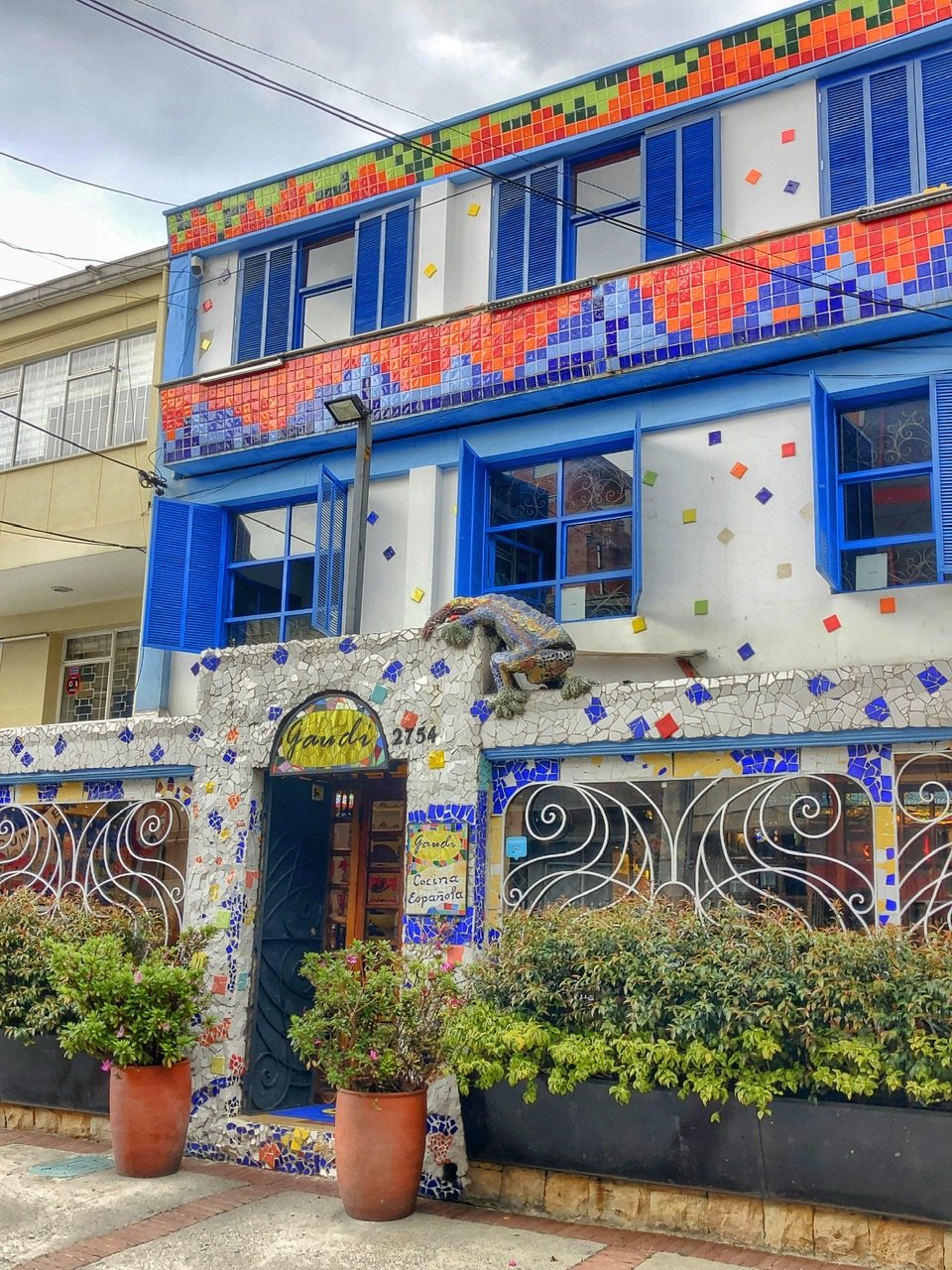
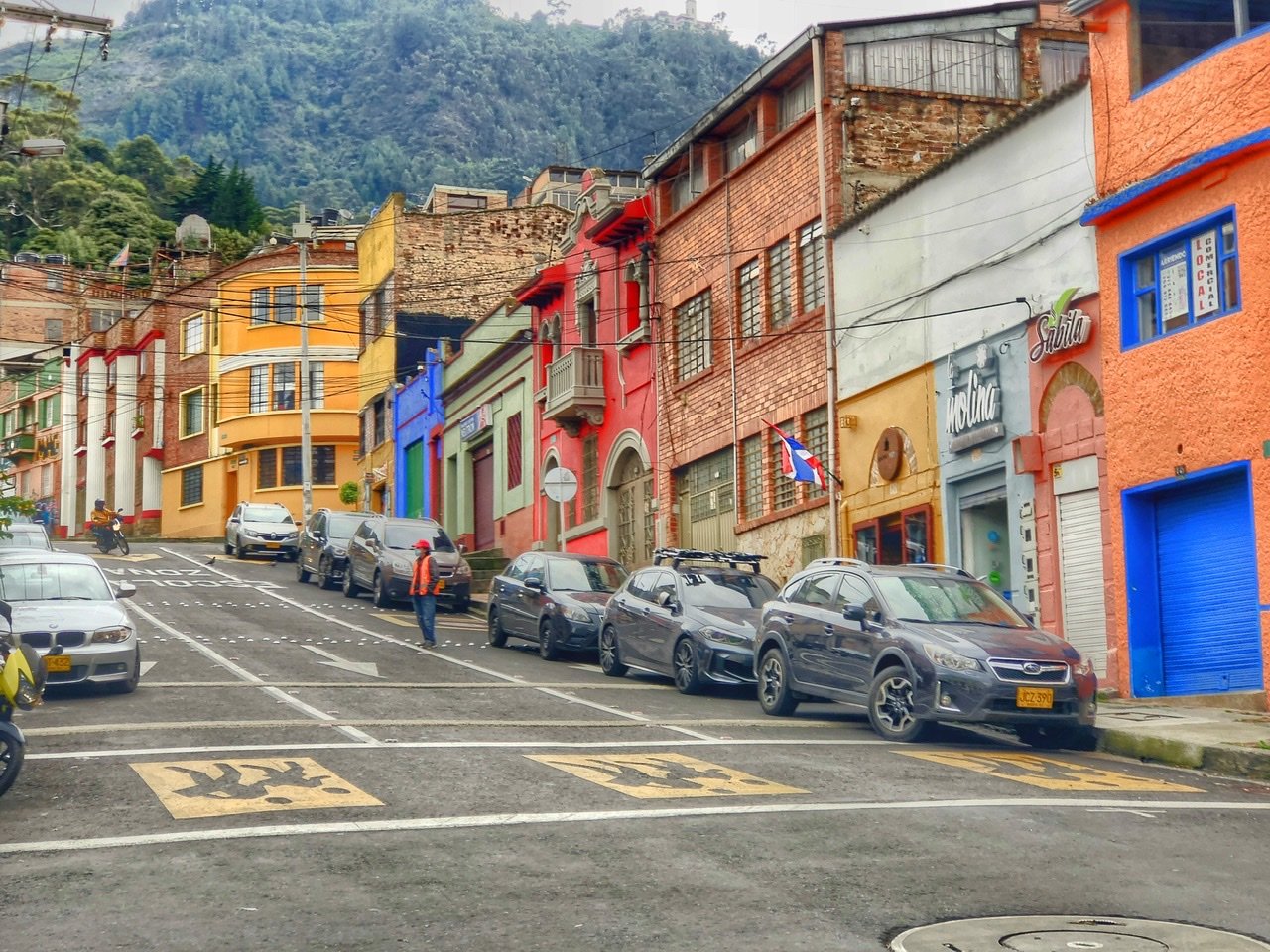
It’s loaded with cute bars, off-the-charts street art and eclectic and international restaurants from Spanish, to Peruvian to Mediterranean.
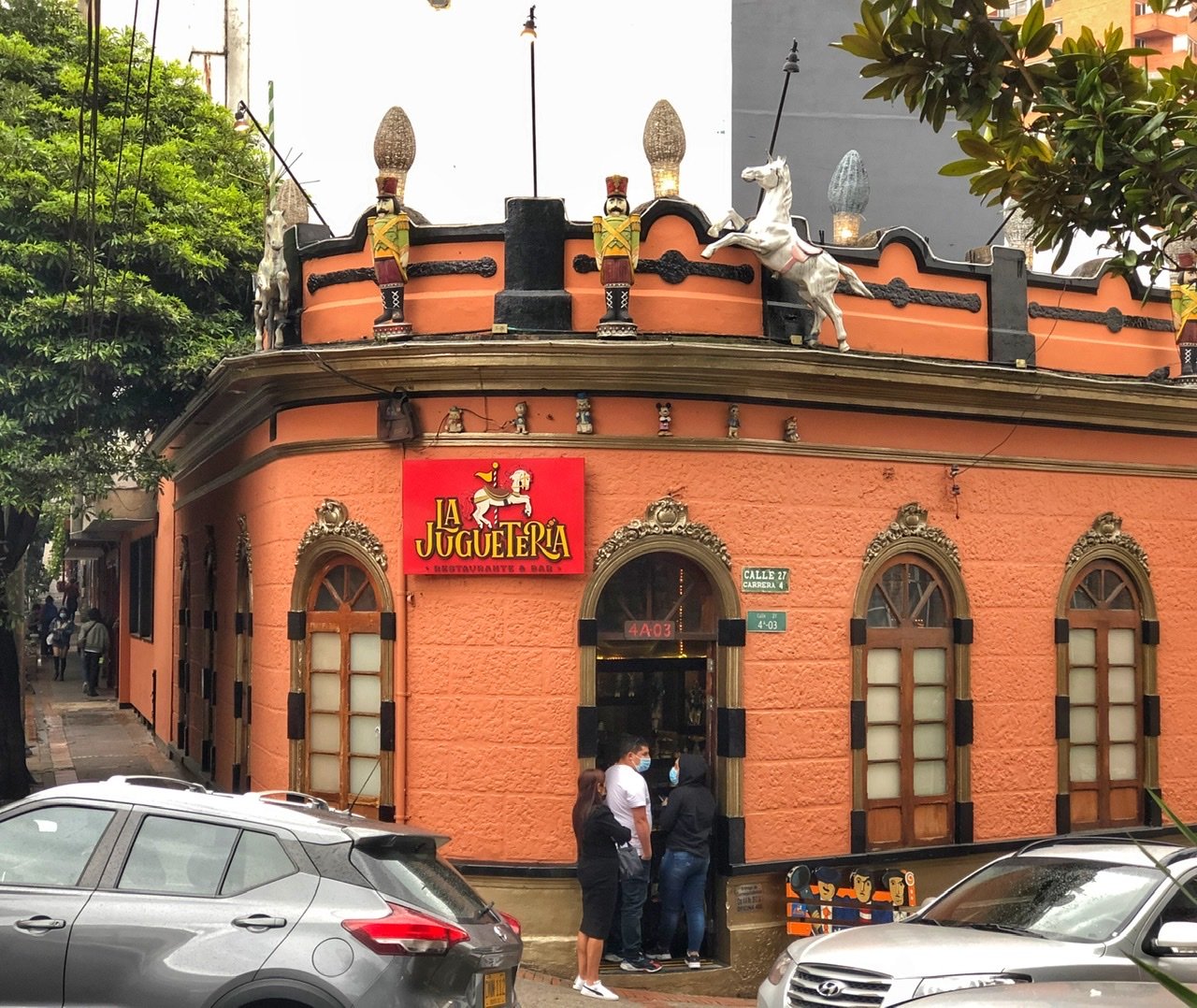

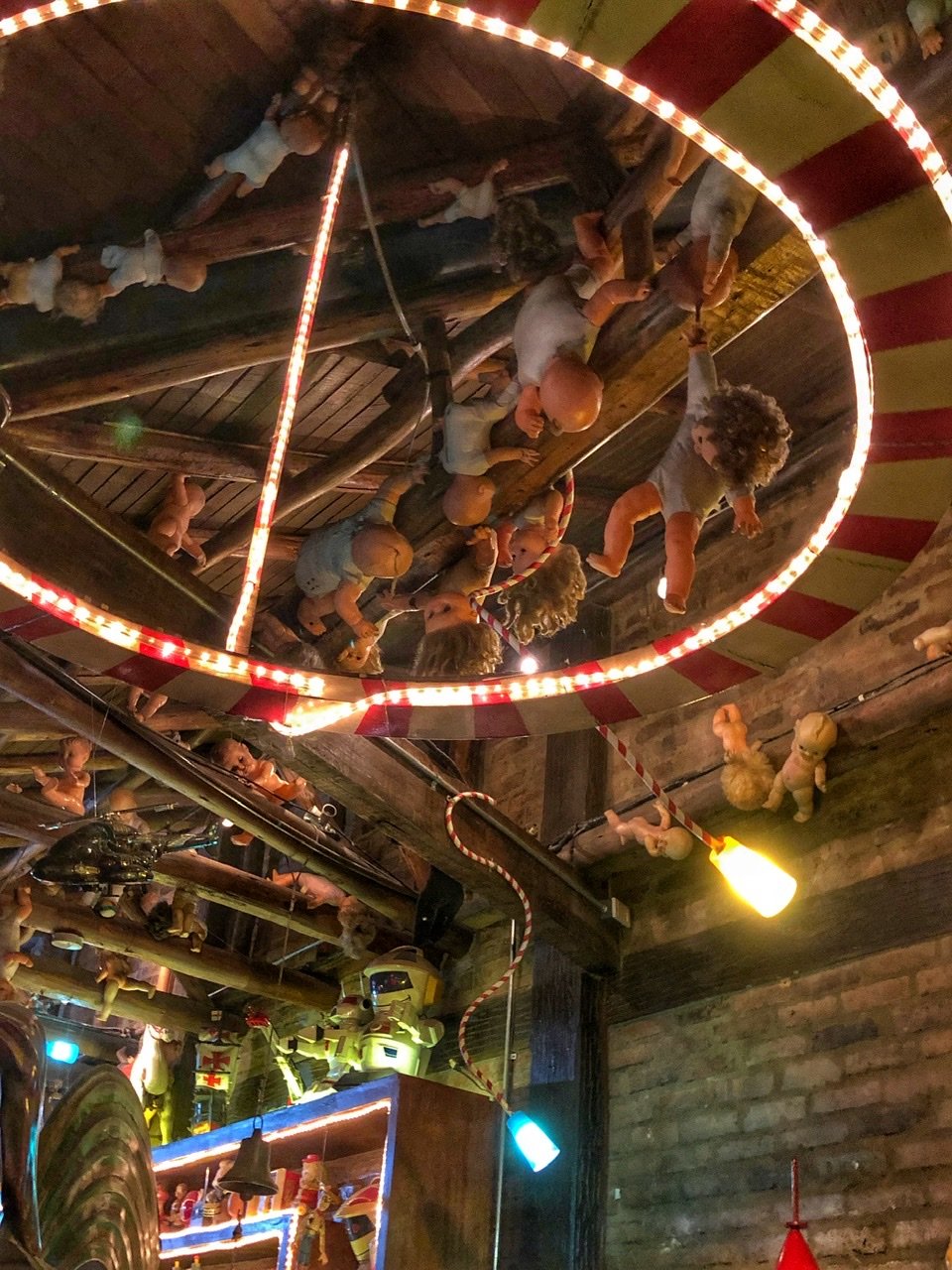
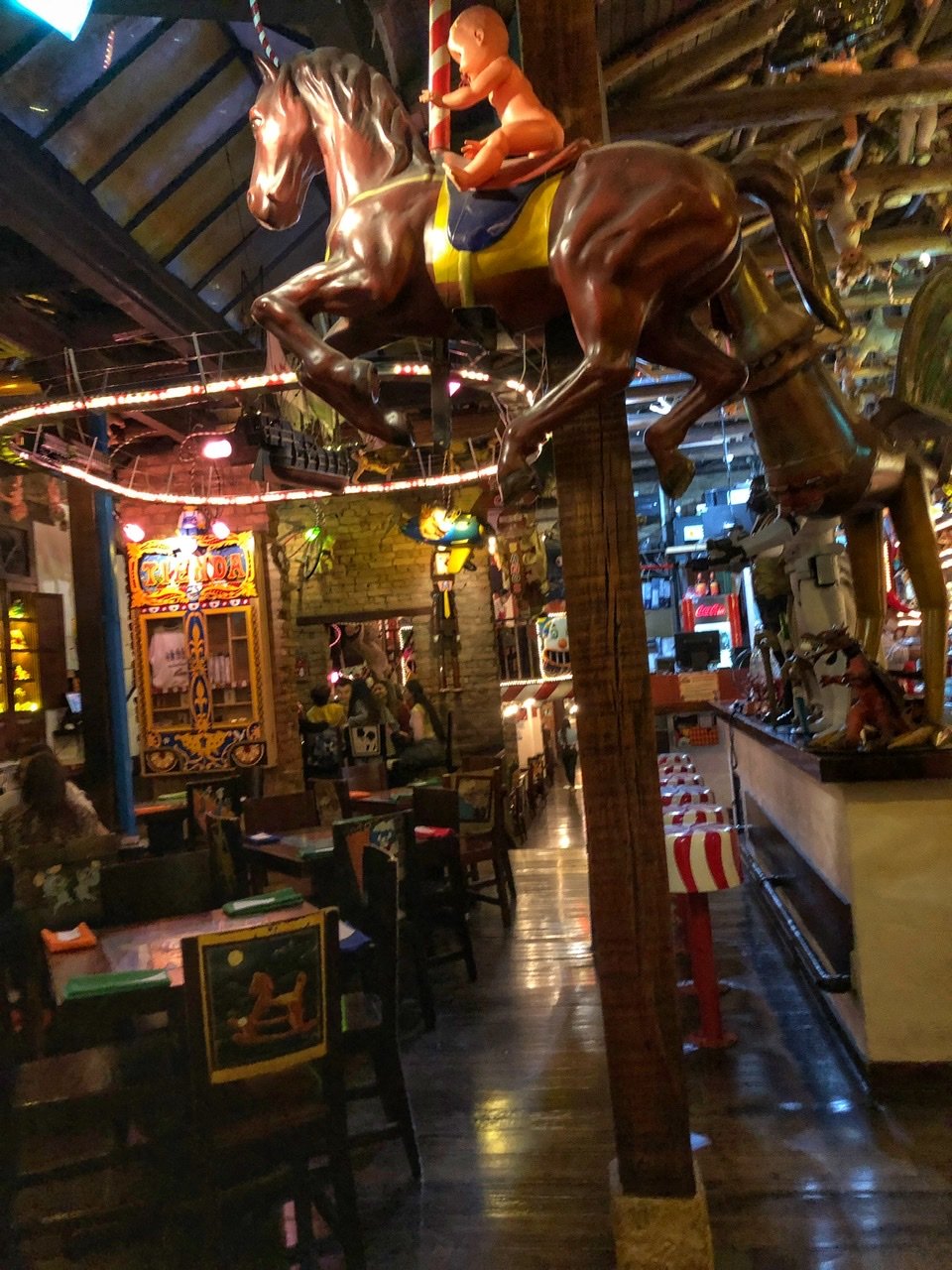
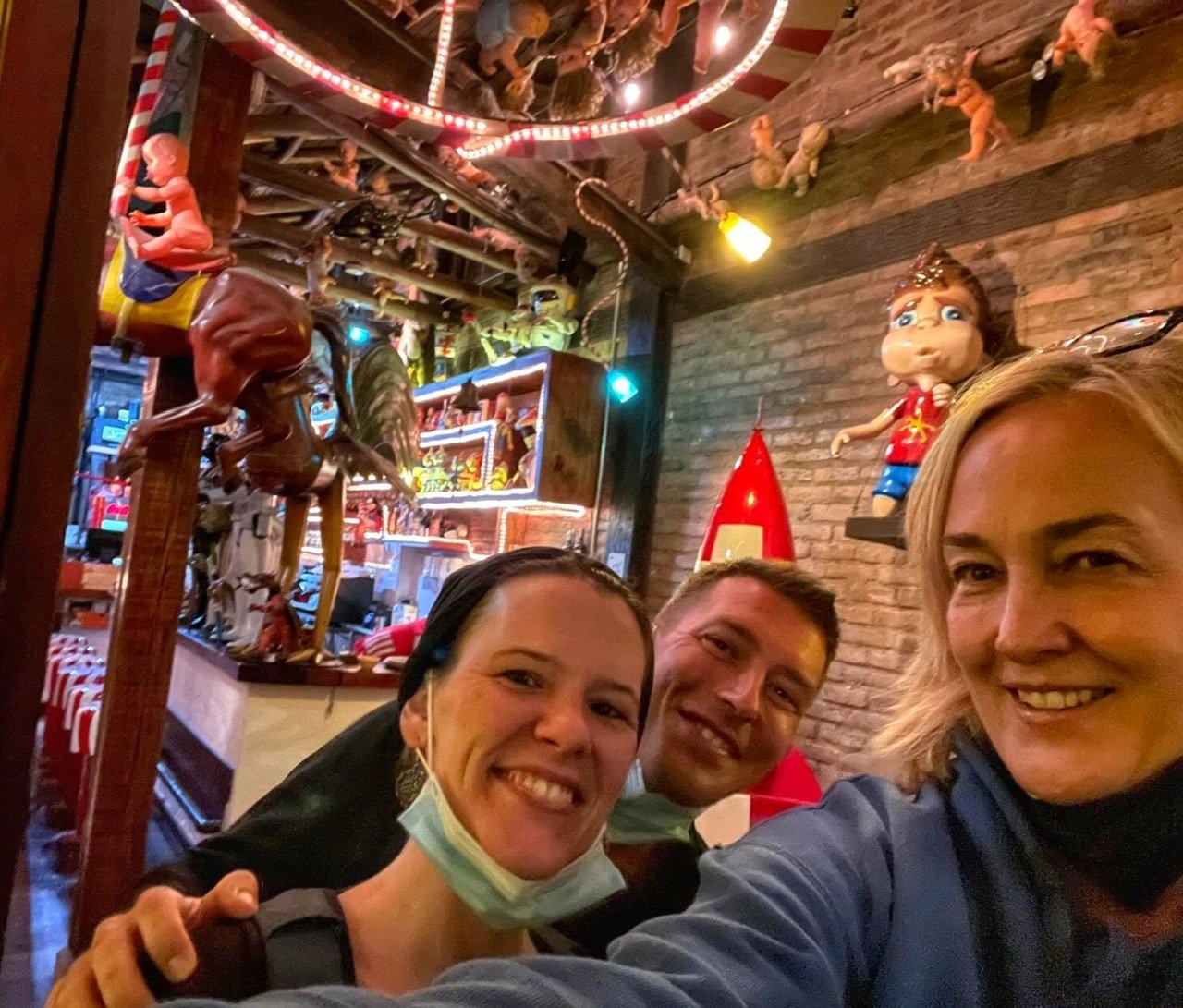
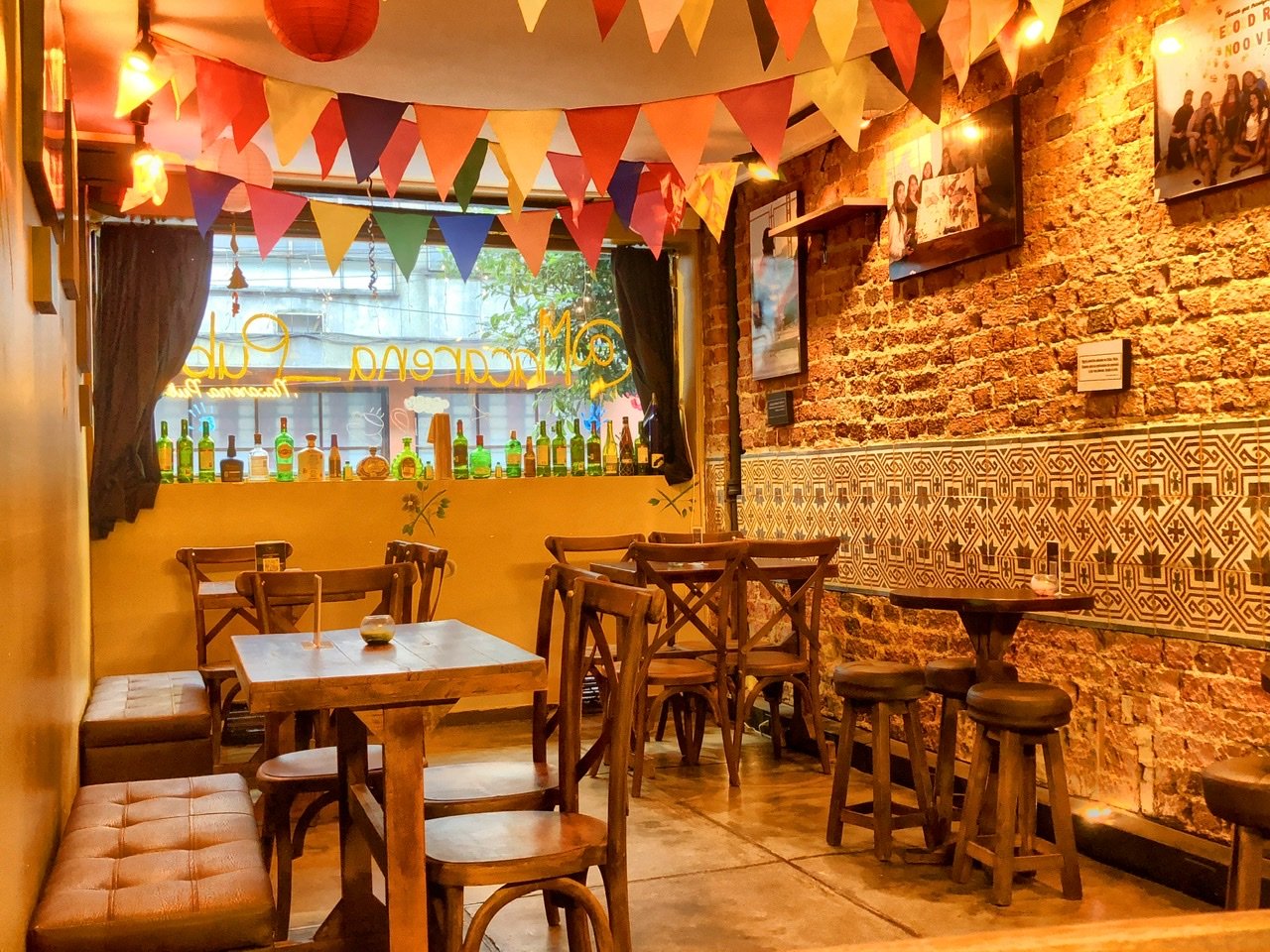
We grabbed a drink with a new friend at Macarena Pub and La Jugeteria, which felt like you were stepping inside a toy box, even offering a tea cup to take a spin in at the entrance.
Nueva Lengua Spanish School
While in Bogota, Mandy also participated in a week of intensive Spanish classes at Nueva Lengua. This was a splurge for us at $220 for the week, but fortunately she had some birthday money still socked away for such a purpose! The intermediate classes of 2-3 students were every morning from 9 am-1 pm, followed by an afternoon activity such as dance classes (see embarrassing video below), cooking classes, a welcome lunch or seeing the movie Encanto (in Spanish). It was a wonderful place to study and she’d love to take more classes there in the future.

In dance class, we learned basic Colombian Salsa, Carranga (which is a really amusing campesino, or country folk dance) and we even had some fun doing some traditional Carnaval dances. It was amazing!
Getting COVID boosters in Bogota
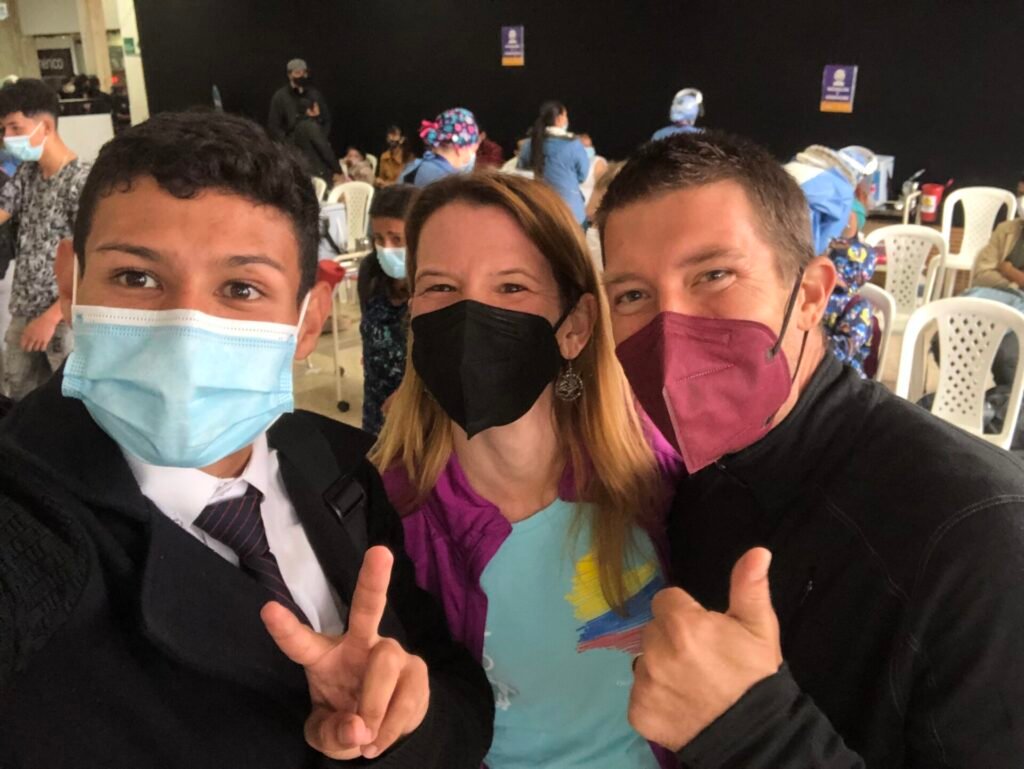
Boosted in Bogota!! For free! Even for us foreigners! The process was a bit different than in the States for sure. It involved waiting in line for a good two hours at a shopping mall, but it wasn’t so bad because we met Harry, a young gastronomy student studying Asian and French cuisine. He was very eager to get his first vaccine and helpful in helping us understand the process. Although he spoke little English, he helped translate and spoke slow enough so we could understand what was going on. What a sweet kid!
Like everywhere else, Omnicorn has started to affect Bogota significantly with about 30k new cases each day, and 60% of the population is vaccinated. Every line we’ve seen for vaccines has been packed. This was after we made it to the finish line.
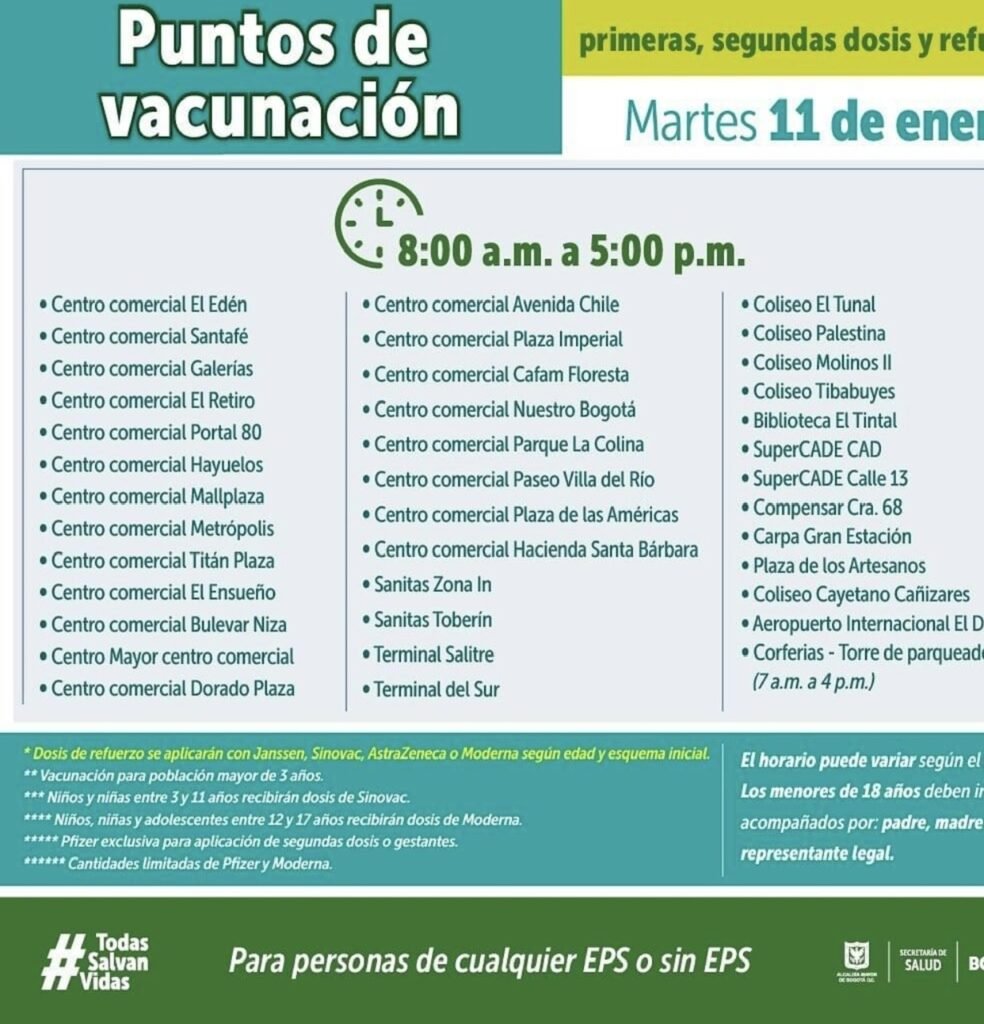
Each day the Department of Health posts a list of all the places where vaccines are available. Most of them are shopping malls, transportation stations and the airport. This list is invaluable, however.

We got in line at 7:45 am. It opened at 8 and we still had to wait two hours. We’ve never seen Colombians so punctual for anything.
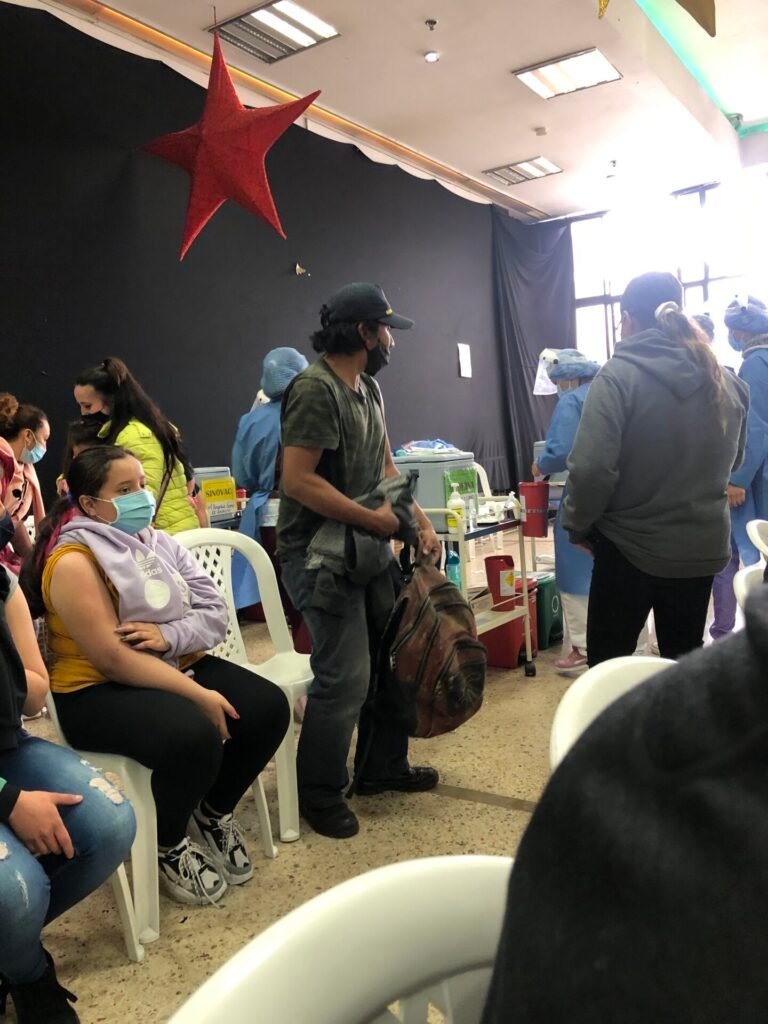
You are then sorted by which type of vaccine you’re getting, and which dose you’re on. For all the boosters that day, they were giving AstroZeneca. We sat in a line, completely NOT socially distanced, and slid down in our chairs as we awaited our vaccines. The nurse verified which dose you were getting and even showed you the bottle of serum before she pulled the plunger.
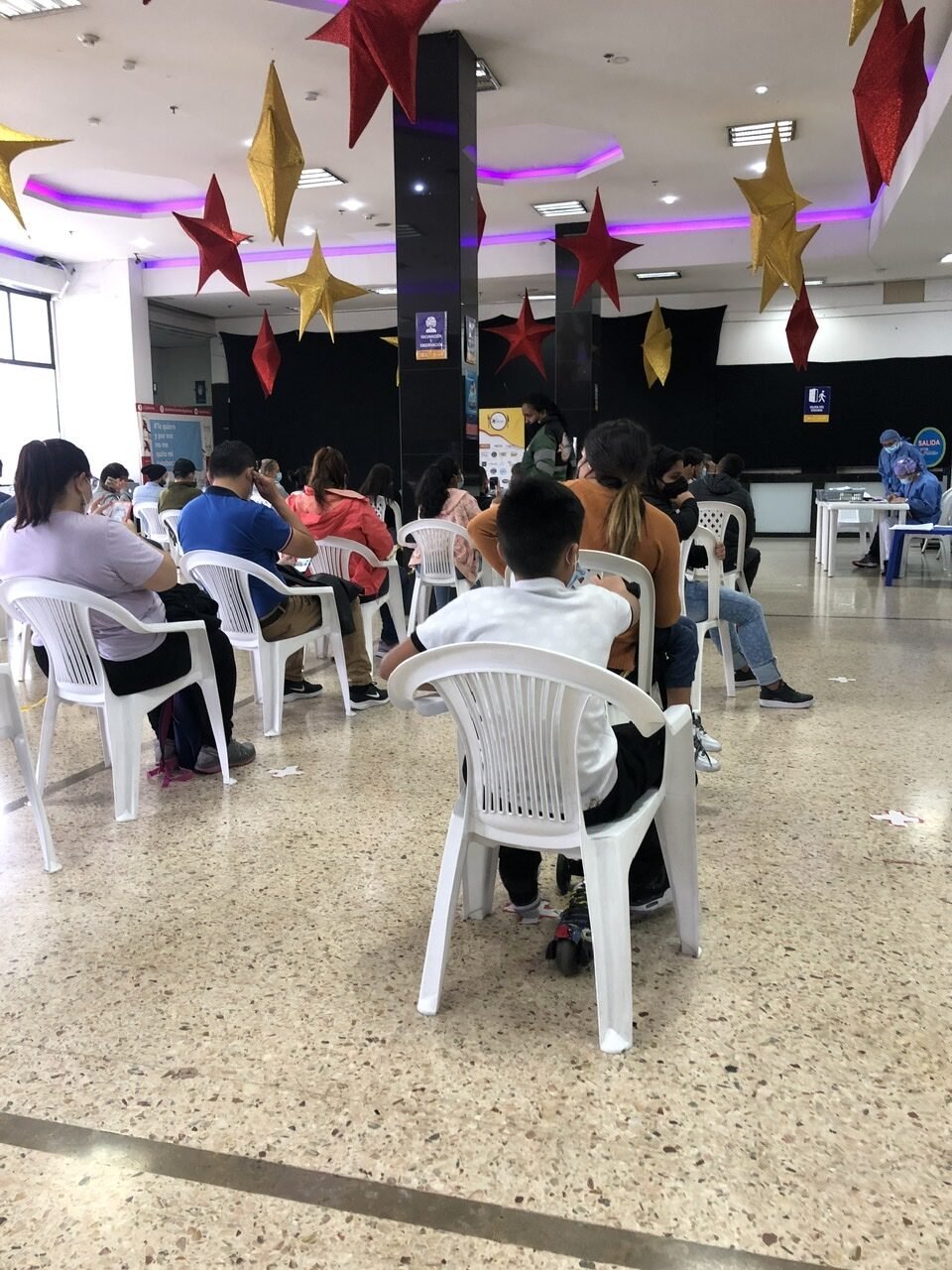
You then sat in different chairs to wait 15 minutes for your prize…your COVID card with a new entry to be allowed into your next country. Hmmm….where should that be????


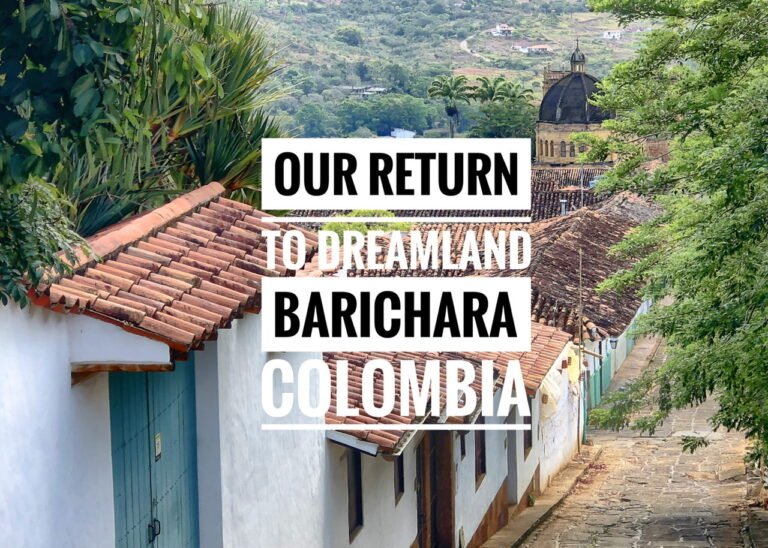

Well documented. Great job!!!
My god! What a wonderful introduction to (perhaps) the most underrated city in SA. Thanks a lot.
Thanks so much for the comment! Glad to hear you appreciated it. Happy Travels!